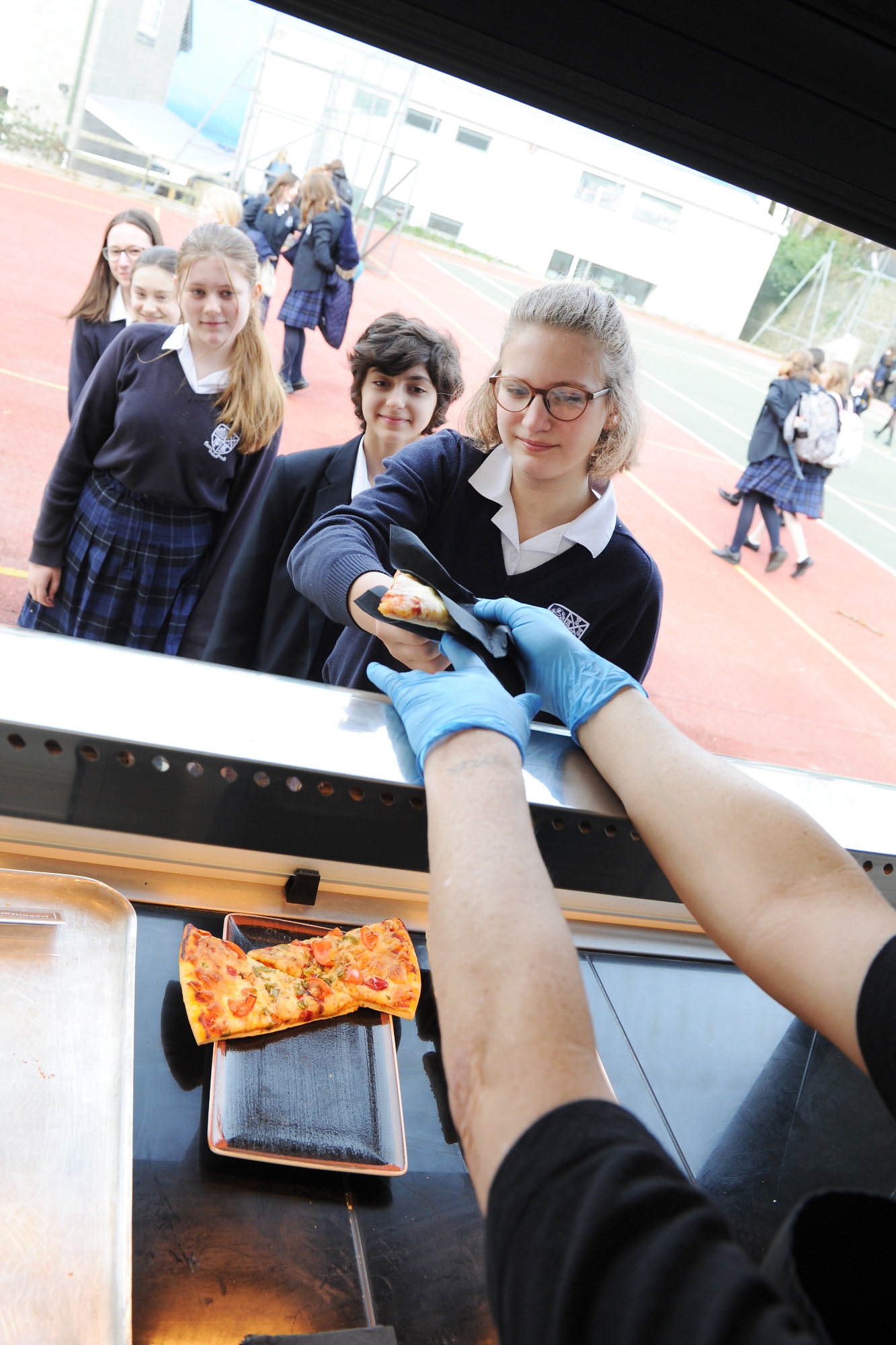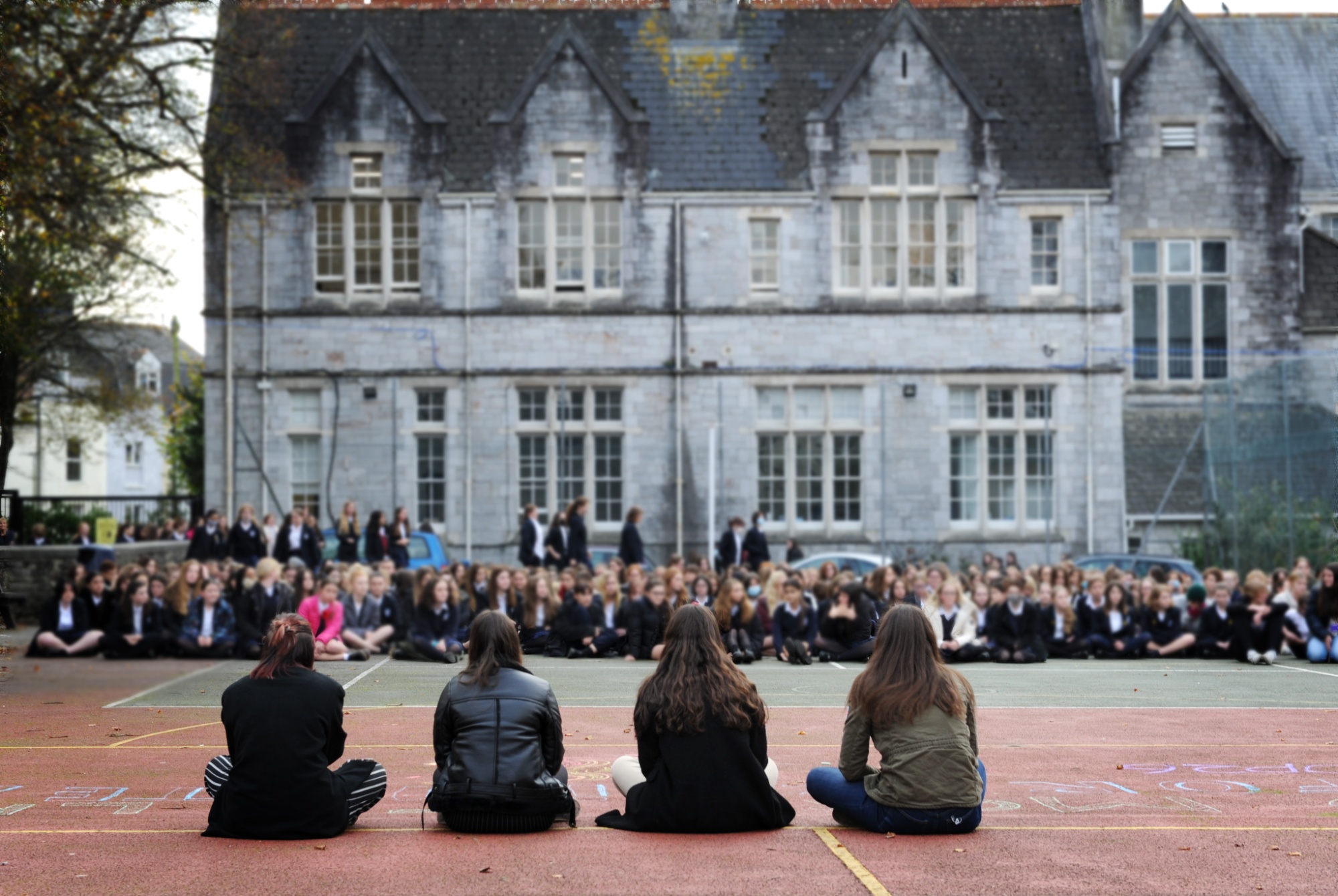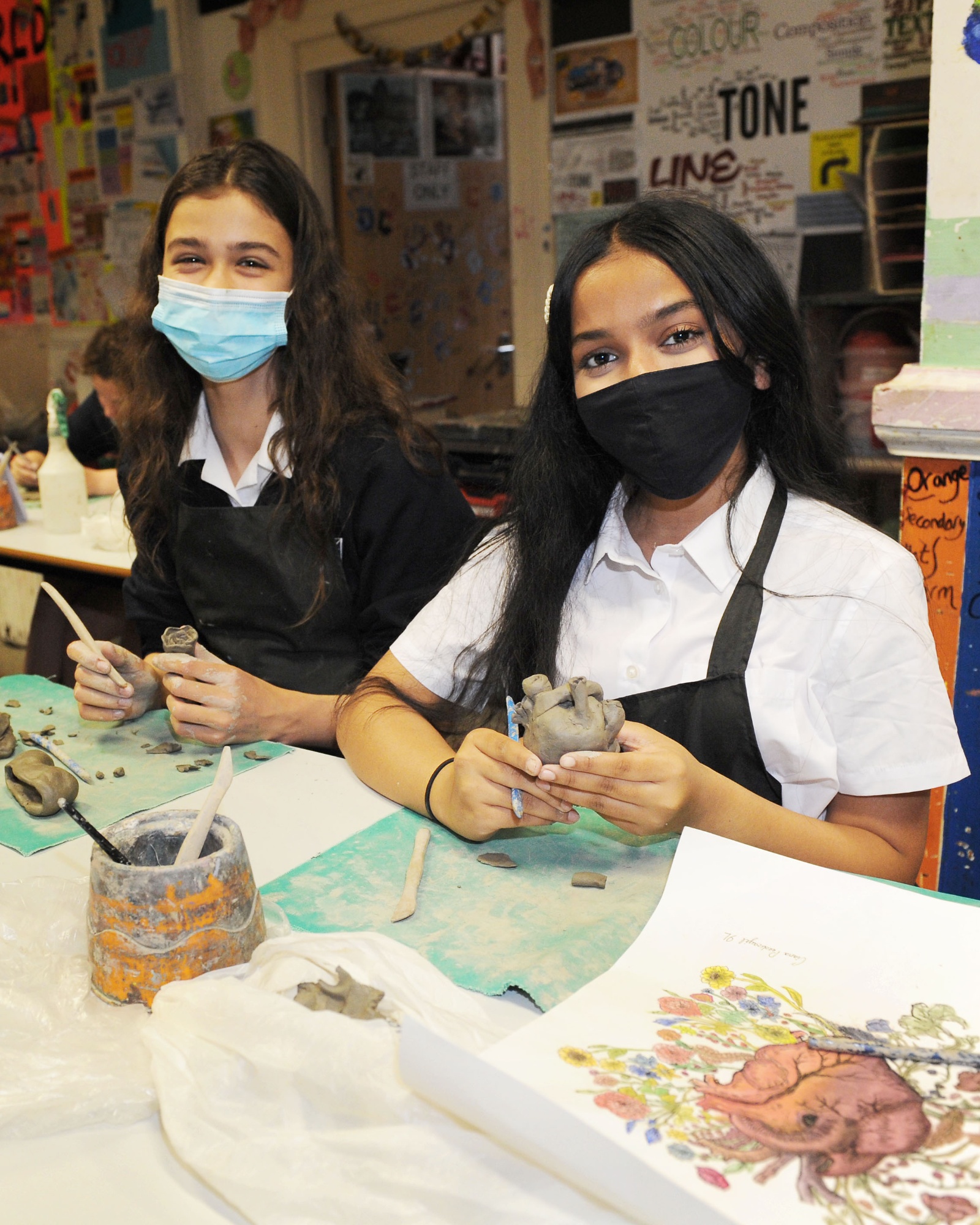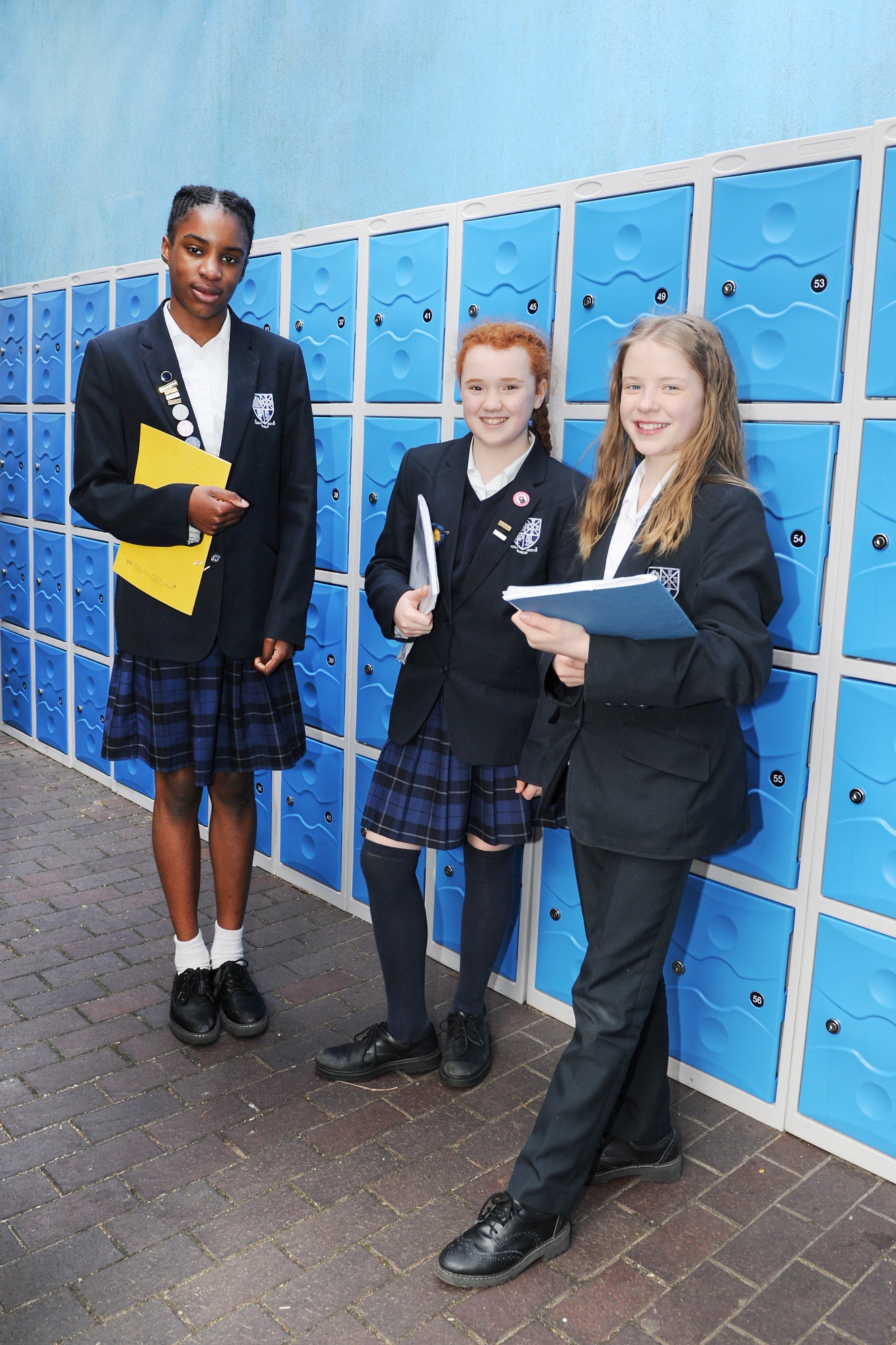PHSG History Timeline
Entries have been collated through our expansive school archive and formed through letters, magazines, logbooks, articles and diaires.
We hope you enjoy exploring our history.
1900s
| 1874 |
In 1874 the Devon and Cornwall Girls’ School company was founded, opening a school for girls on the 14th September 1874. It was known as Sherwell House, under the Presidency of Frederick Temple, Bishop of Exeter (who later became Arch Bishop of Canterbury) and the land was purchased for £3,000. In recent years, the universities had opened their doors to young ladies, following pressure by the professional classes. To enable girls to obtain the necessary educational background, schools such as Plymouth High came into being. Mutley Plain was then open fields. It was seen as a controversial location for the school, as it was rather remote from the centre. The main building opened in 1877 and was made of local limestone. The architect was Mr Paull, and it was erected by Messers Blachford of Tavistock for £10,000. The building served as a model for other schools in regard to its modern design, height of classrooms, space, warmth and comfort. It was built for 350 pupils to be instructed in 15 classrooms and a large assembly room which is of a height of 24 feet. Entrance fees were four guineas per term for shareholders and five guineas for other pupils. The first pupil to enrol was Bertha Collier. Alice Anthony was the first pupil on the first ever Plymouth High register. Both girls were daughter's of the school's founders. The first intake of pupils was just 70 and, by the end of the first academic year, the numbers had risen to 148. In the second year, there were 180 girls in attendance and, by the fourth year, this had risen to 215. |
| 1874 |
The original founders and subscribers to the memorandum of association were: The Bishop of Exeter (Dr Temple), Rev. C. T. Wilkinson, Mr I Latimer, Rev J Metcalfe, Rev F E Anthony, Mr J. May, Mr W. F. Collier and Dr Row. These eight gentlemen were elected on the first council together along with Mrs J. N. Bennett, Mrs W.F. Collier, Mr R. Reynolds Fox, Mr A Hubbard, Miss James, Mrs Metcalfe, Mr and Mrs Rooker, Mrs Wilkinson and Rev. C. Wilson. |
| 1874 |
Frederick Temple was born in Santa Maura and the son of a Major, Frederick Temple moved to Devon as a child in the early 1800’s. He attended Blundells School in Tiverton and did well both academically and at physical activities. His family was not wealthy, and he won a scholarship to Balliol College, Oxford before he was seventeen. Four years later, he was ordained, and had an aim of improving the education of the very poor. Temple accepted a headship at Rugby School in 1858. He strengthened the school's academic reputation in the classics, but also instituted scholarships in natural science, built a laboratory, and recognised the importance of these subjects. He reformed the sporting activities, in spite of all the traditions of the playing fields. His own tremendous powers of work and rough manner intimidated the pupils, but he soon became popular, and raised the school's reputation. His school sermons made a deep impression on the boys, teaching loyalty, faith and duty. He became a governor at Sherborne School in 1871, a 13 -18 year public boys and boarding school in Dorset to replicate his success in the education in the North. At this time, she became the Right Rev. Lord Bishop of Exeter and then later the Archbishop of Canterbury in 1897. Bishop Temple became the first chairman of Plymouth High School for Girls and delivered the address at the opening ceremony. |
|
1874 |
Isaac Latimer was a founder of the school. He started out in the printing business and had a journalistic career in London where he was a reporter for many popular newspapers of the time. He was invited to Plymouth in 1844 to become manager and editor of 'The Plymouth Journal', which later went on to become the 'Daily Western Mercury'. He edited the paper for nearly thirty years and eventually took his eldest son, Mr Alfred Latimer, into partnership. Mr Latimer was elected Mayor of Plymouth in 1871 and went on to become the chairman of the Chamber of Commerce in 1879. Both Isaac Latimer and his son Alfred, were strong promoters of Girl's education and formed the Devon and Cornwall Girls' School company on 4th February 1974, with the school then opening 7 months later. |
|
1874 |
The Headmistress of the school lived on the school site, in a building called North Hill House, until 1931. It was demolished in 1939 to make way for a new wing. |
|
1874 |
The school flourished under the headship of Miss Annie Kendall. In sport, it was the second girls' school in the whole of the United Kingdom to have a cricket eleven. The first Headmistress, Miss Kendall, was described as: 'A remarkable woman of great culture and attractive appearance, always well-dressed. Her piercing blue eyes ‘looked straight through you, though sometimes dancing with fun’. They gleamed beneath her thick wavy grey hair covered with the habitual lace cap. She was very progressive and maintained excellent discipline. She was one of eight founders of the Head Mistress Association. She did not come from a British university. She held a First Class honours Higher Cambridge Local Certificate, with Bevet d’Aptitude from the Hotel de Ville, Paris, and a Brevet de Capacite from the Sorbonne.' |
|
1878 |
Frances Gray joined as a pupil. She became famous and esteemed for being the first, and founding headmistress of the country’s leading girls' school, St Paul’s London. She described the teachers in 1878 as: “tired looking mistresses in their thick serge, close-fitting, high-necked bodices, and long, dusty trains sweeping the floor; and of Musty, the black-bearded janitor, who reminded her of a pirate, and who used to walk about barefoot sometimes.” |
|
1884 |
Memories of 1884 –1888 include afternoon school often involving walks in the countryside just outside school, amateur rowing on the river Plym, and cricket on the small grass area beside the school. |
|
1886 |
Miss Kendall stepped down as Headmistress and opened Plymouth College for Girls on the Hoe. The school remained in existence until the outbreak of World War 2. |
|
1886 |
Miss Helen Turnbull took over as Headmistress. She was a young Scottish woman, a combination of old-fashioned and modern. She kept perfect discipline and worked vigorously at the extermination of the Devon accent. It is said that Miss Turnbull stood down as Headmistress as she did not like the new governors and blamed the founders for not having set the school on more solid foundations by providing adequate endowments. |
|
1898 |
Following the death of their father, Dr Alfred Latimer and Miss Frances Latimer presented the Marble Bust to the school in memory of their father, Mr Isaac Latimer and their friend, Mr Samuel Wayland Kershaw, M.A. F.S.A. The bust is a portrait of Miss Elizabeth Kershaw, who is the sister of Mr Kershaw, He was the curator of Lambeth Palace Library 1870 – 1910. It was executed by H.H Armstead, RA. who was a sculptor of the marble groups at the base of the Albert Memorial in Hyde Park, London. |
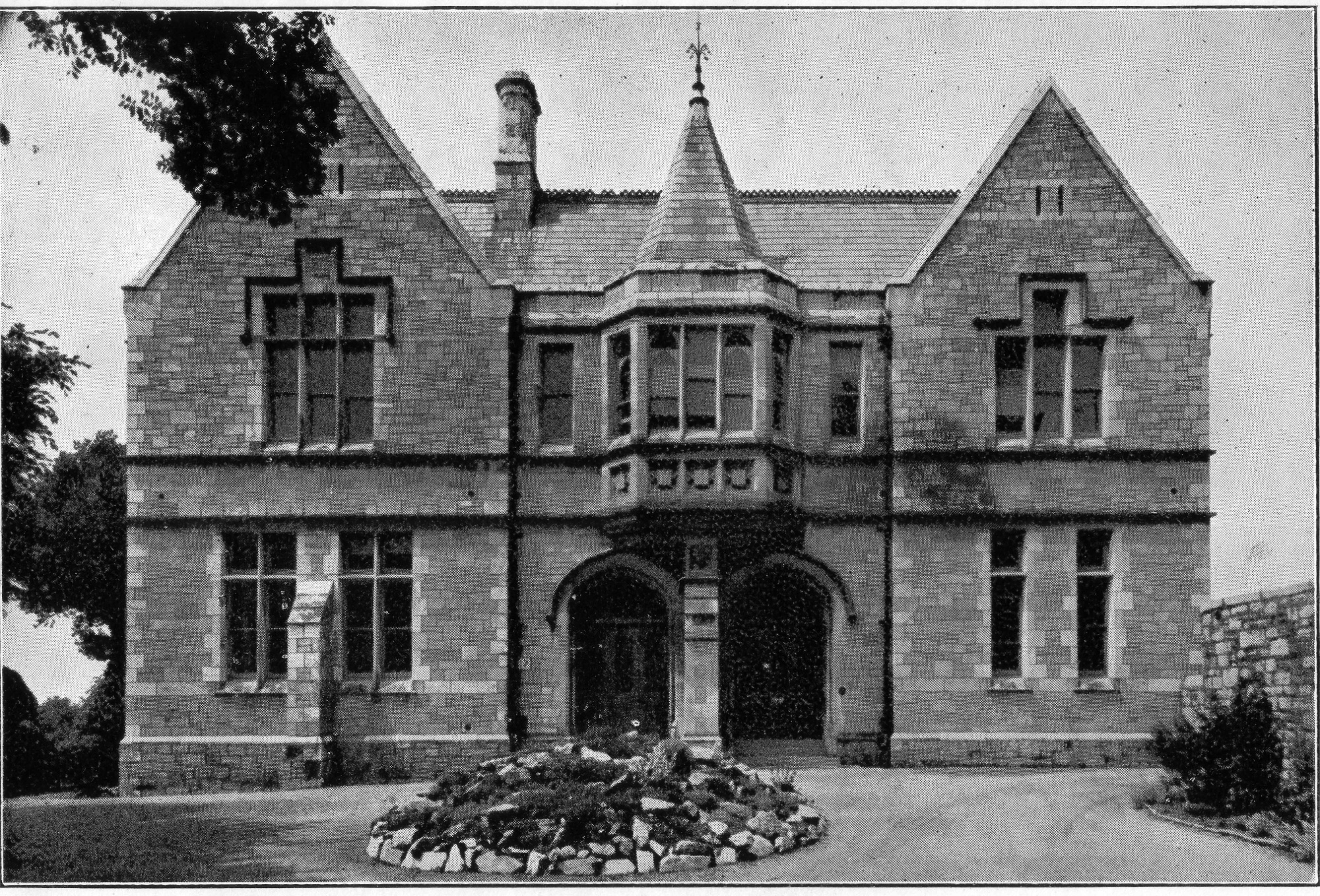
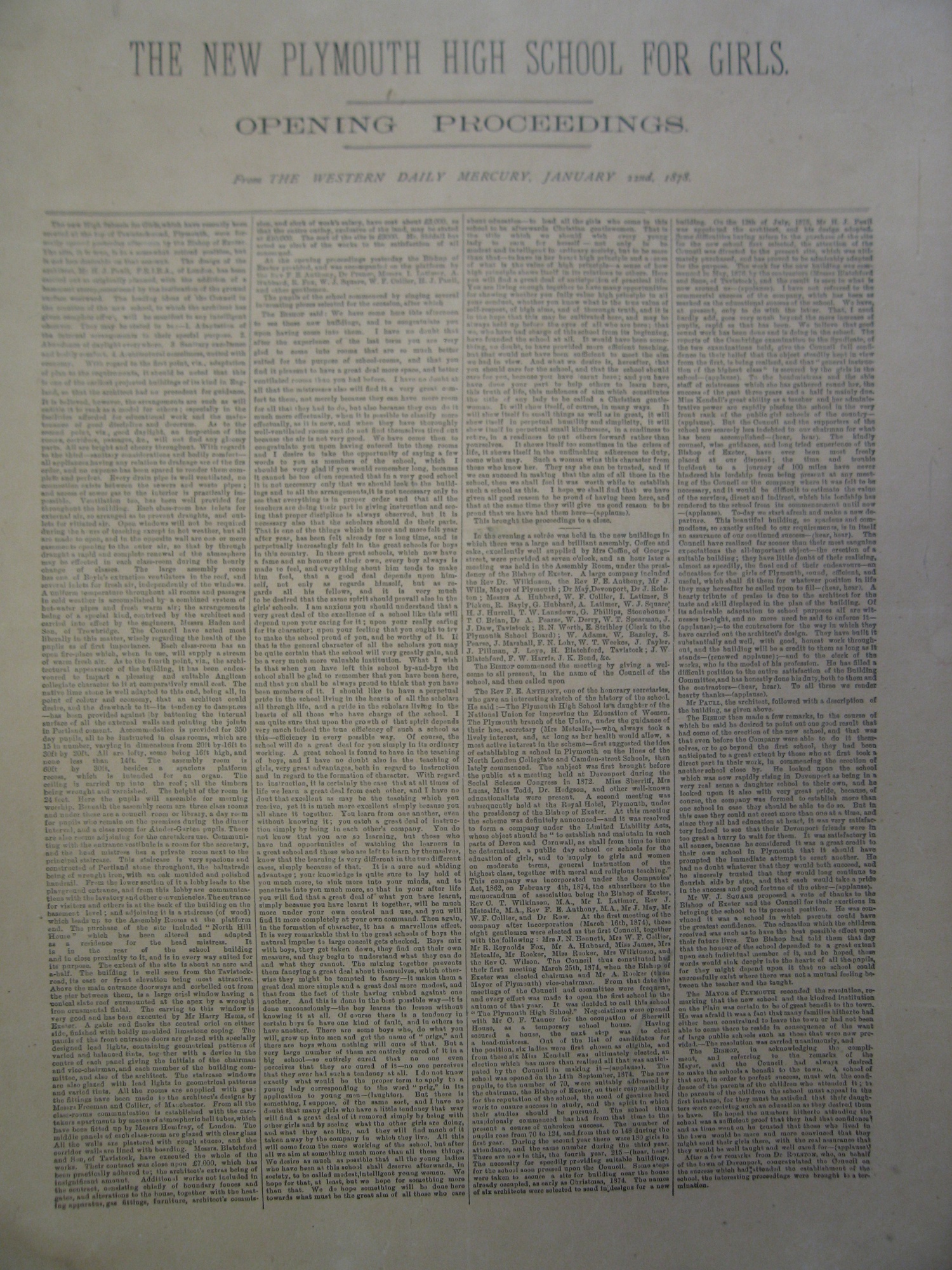
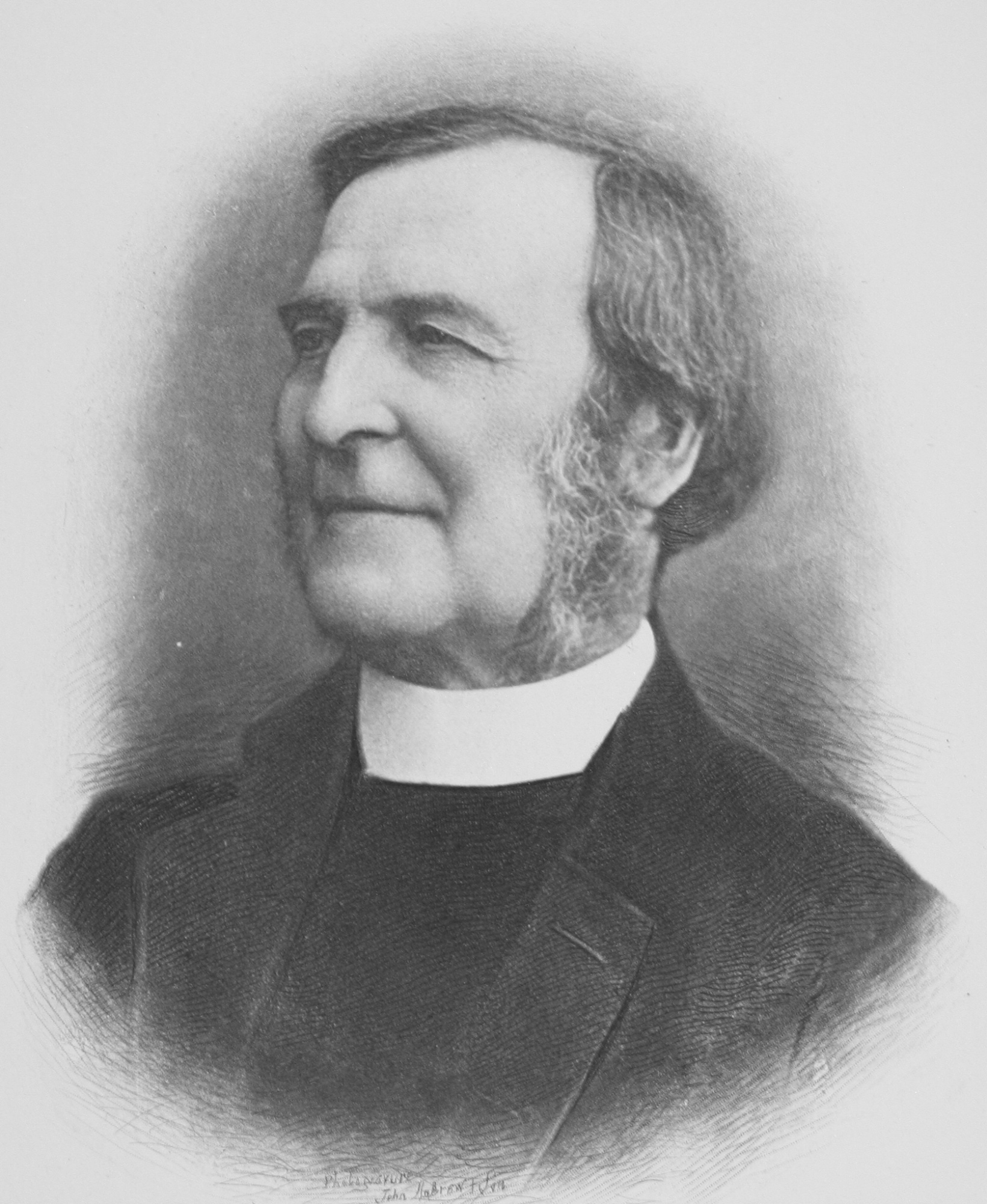
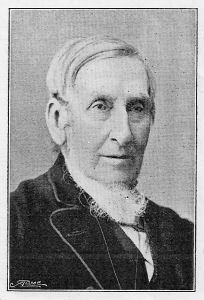
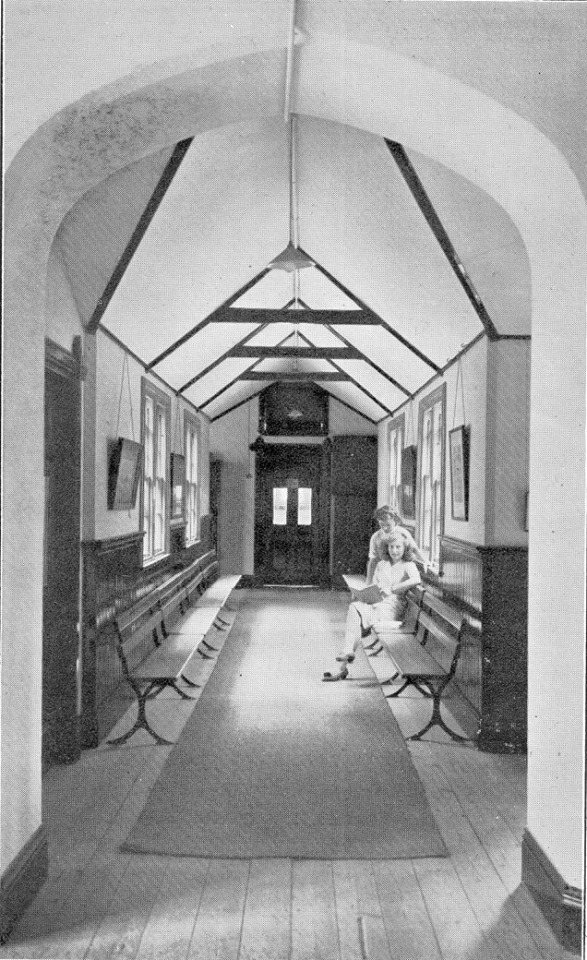
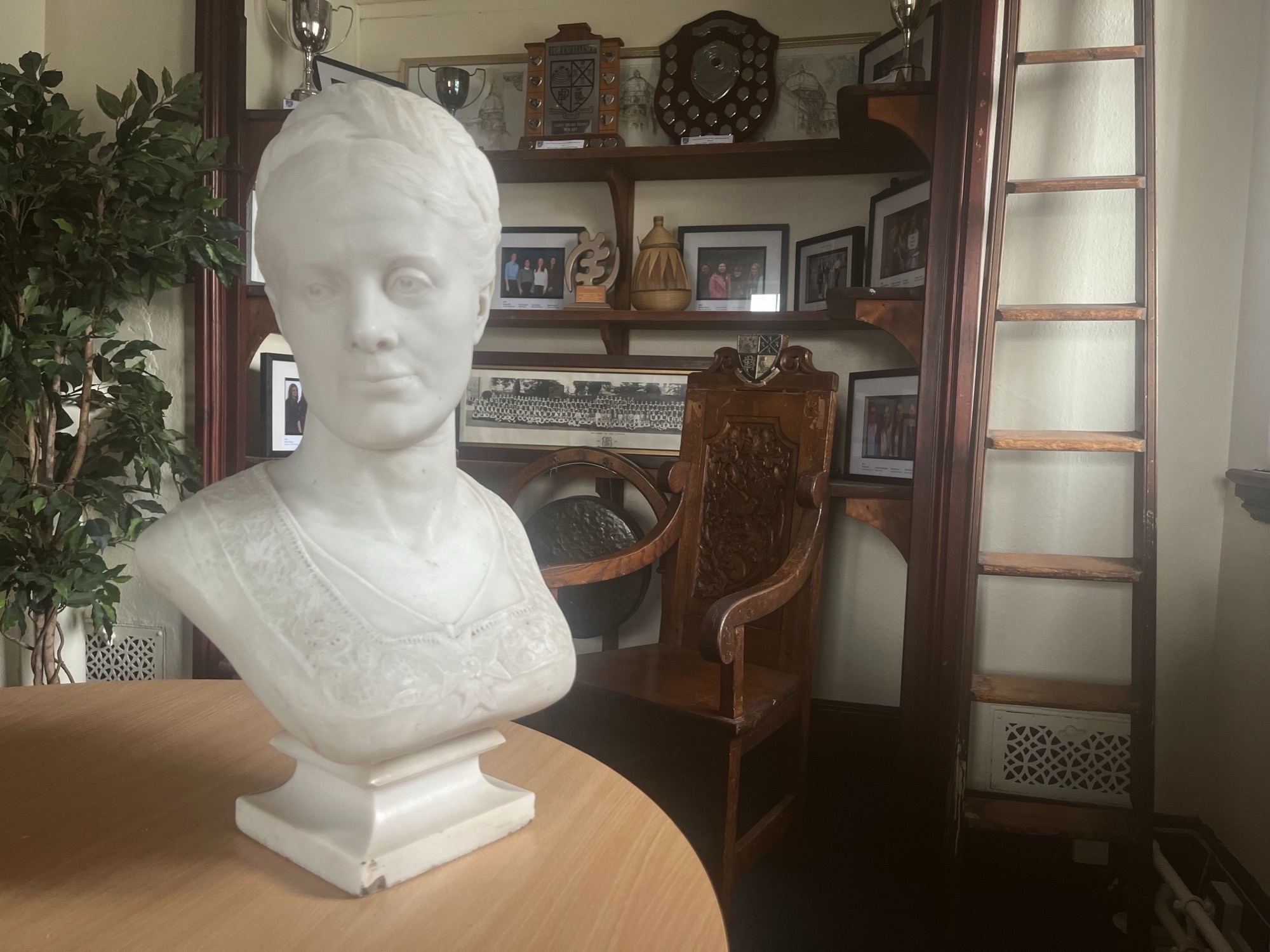
1900 -1909
|
1906 |
The school employed its first Science teacher – Mrs Drew |
|
1909 |
Mary Wilcocks (born in March 1869) and a Plymouth High ‘Old Girl’ joined the Exeter branch of the National Union of Women’s Suffrage Societies and later went on to be the secretary of the newly-formed South West Federation of Suffrage Societies. The Plymouth High library was often used to host their committee meetings, as noted in the Headmistress' log book. |
|
1909 |
Memories of a school account from 1909 to 1916: There was no uniform but a blue tunic, white blouse and belt for Gym & sewed-on gold stripes for proficiency awards. We wore white dresses and black stockings for Speech Day. Our ambition was to get an “A” at the end of each week. Names were called out in assembly on a Monday morning. We played rounders, cricket or tennis in the afternoons unless we were doing French conversation. There were little gardens, each of which we tended and got prizes for. The Headteacher, Ms Turnbull, had a strong Scottish accent. |
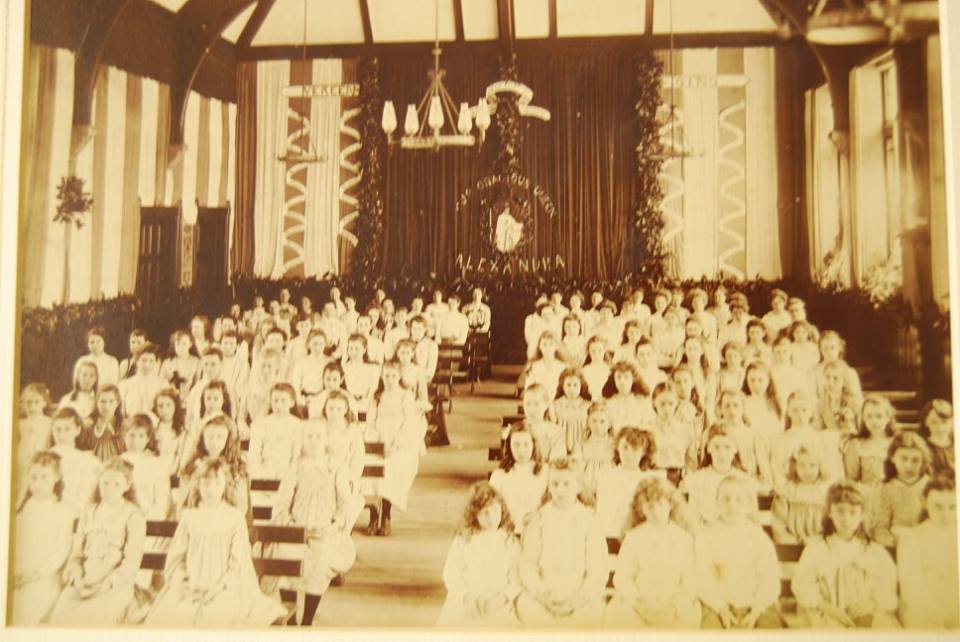
1910 - 1919
|
1910 |
Miss Margaret Potter took over as Headmistress. She was an Oxford woman and received her degree of M.A Oxon as soon as Oxford extended its degrees to women. She was exceedingly conscientious and meticulously particular about regularity and uniformity of procedure in keeping registers and making of reports. |
|
1910 |
The school underwent radical changes in governance, ownership and personnel. Miss Potter had the extremely difficult task of retaining exclusiveness of the school, where the Education Authority and Democratic Progress wanted to intervene and make the school styled for the ‘lower’ or ’working classes’. |
|
1913 |
Following a cut to funding for the school, the Headmistress Fund was set up. Monies were raised through bazaars to pay for new equipment and school repairs. A boarding house was set up (Montrose House) at the foot of the steps of Houndiscombe Road in the hope of attracting pupils from a distance. Sadly, it closed one year later and was not successful. |
|
1914 |
The first ever school magazine was published. |
|
1914 |
The school celebrated its 40th year since founding. It was the first school in the “Girls Public Day School Trust” (this still exists but only for private schools today), a pioneer in girls' education nationally. |
|
1914 |
The school raised monies for redecoration. They used the £25 raised to redecorate, “the more important classrooms and cloakrooms were to be coloured and whitewashed… and new matting for the lower corridors” (very good value!) |
|
1914 |
The school sponsored beds in SE and E Cornwall hospitals called “High school cots”. The girls sold their art and crafts and raised £65 for the cots. This was done annually and mentioned in all subsequent school magazines. |
|
1914 |
Only nine girls sat the Oxford & Cambridge National exams. Around ten girls in each year all sat Needlework & Drawing National exams regularly. |
|
1914 |
Although Plymouth evaded the raids of the First World War, the school was nevertheless profoundly affected, as was bound to be the case with a Dockyard City. Many of the high school girls were daughters of Naval Officers and had brothers serving in the volunteer armies. School carried on as usual, but with continual extra activity to help various good causes. Sales of work, collections, and entertainments were organised for Belgian Refugees, the British Red Cross, the Russian Red Cross, the Silver Thimble Fund, Princess Mary’s Soldiers and Sailors and British Prisoners of War in Germany. |
|
1915 |
The school raised funds for war and some staff members volunteered to teach soldiers French in the Citadel. The school orchestra played for the soldiers and the girls knitted hats for the soldiers. |
|
1915 |
Mrs Astor (1st woman MP) gave out the prizes on Speech Day. |
|
1915 |
A long, incredibly detailed article published from the trenches, written by the brother of a member of staff. It was full of details of trench life, the fear and horror, so people in Plymouth knew of the dreadful conditions. There was a whole contingent of Indian soldiers fighting alongside them in France. Also, a moving story of a war horse wassent in by relatives and published in the 1917 school magazine. |
|
1916 |
An announcement was made that no more tales from trenches were to be published as this has been banned by the censor - although one war story was published about a Red Cross hospital and the injured soldiers. |
|
1916 |
One Plymouth High teacher spent their summer holiday nursing soldiers in France. Another published a book of basic French phrases for soldiers. Many others did war work during the holidays. The Old Girls of Plymouth High also undertook war work, including one as an ‘Inspector of Explosive Gas Bombs” and some serving in France with the army. |
|
1917 |
An airship flew in over the school & the school dog “Shauneen” got very excited. |
|
1917 |
Ms Andersen left teaching to work for the Censors office, and she gave the school a wooden prayer stool for the school hall. |
|
1918 |
The Prince of Wales procession came past the school (along North Hill) and the girls were allowed to leave lessons and throw open windows to wave flags and cheer. |
|
1918 |
In the summer term, “patriotic duty the school fed the sheep by having them on the fields between the buildings, but they also ate a large number of tennis balls when the girls were trying to play around them.” |
|
1918 |
An account of Armistice Day on 11/11/1918: 'Hooters from the dockyard went from 9am, but no firm news that armistice had been signed until at 11.15am it was confirmed, bells rang around the city and everyone rushed to wave flags – a day's holiday was immediately declared, and the girls watched a battalion of wounded pass by the gates while they waved their flags.' |
|
1918 |
Archdeacon addressed the girls on Speech Day saying he “might even be addressing a future Prime Minister, now that women are going to be important in legal and professional jobs and must have a good broad education” (sign of changing times and women’s emancipation in 1918). |
|
1919 |
The School dog Shauneen – central to life of school, featured in poem in the school magazine. |
|
1919 |
The school transferred from being an independent school to a public school on the 1st January 1919. It was purchased by the Plymouth Education Committee for £9,000. This allowed a welcome influx of funds from the Council into the school, providing scholarships and maintenance grants. There were 115 students on roll. The following year saw the school thrive under the Local Authority and within three years, the student roll had increased to 205 with 10% being scholarship girls. |
|
1919 |
The first school uniform was implemented. A hat band (hairband), tie and tunic were already being worn for certain subjects. However, now white frocks are the rule for Speech Days and Tennis. Summer frocks were worn under the tunics on all other days, with a free choice of four shades (blue, green, yellow and a pinkish fawn) in Tobralco. |
|
July 1919 |
A school Peace Dance was held; Fancy dress with many coming to represent peace, so dressed as fairies, angels, all under the trees and on the grass outside the buildings a “kaleidoscope of colour and a photograph of Britannia and peace taken”. This was followed by dancing in the flag bedecked hall (waltz and Scottish reels until late). Ms Talbot (teacher) dressed, however, as “our allotment” with a headdress of carrots, strings of potatoes and veg for a dress, lettuces for shoes and cabbages in either hand.” She won the prize for best dressed. |
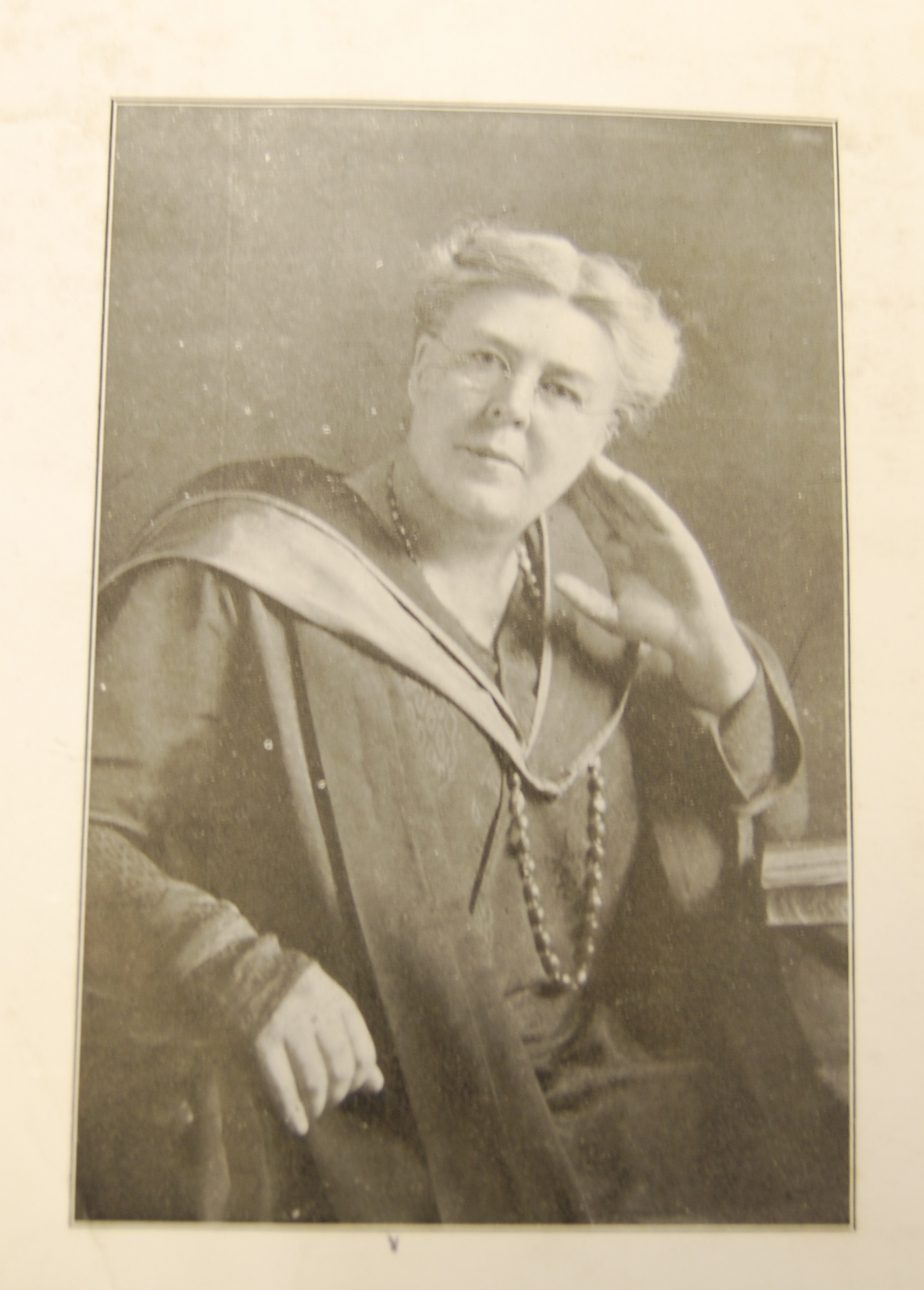
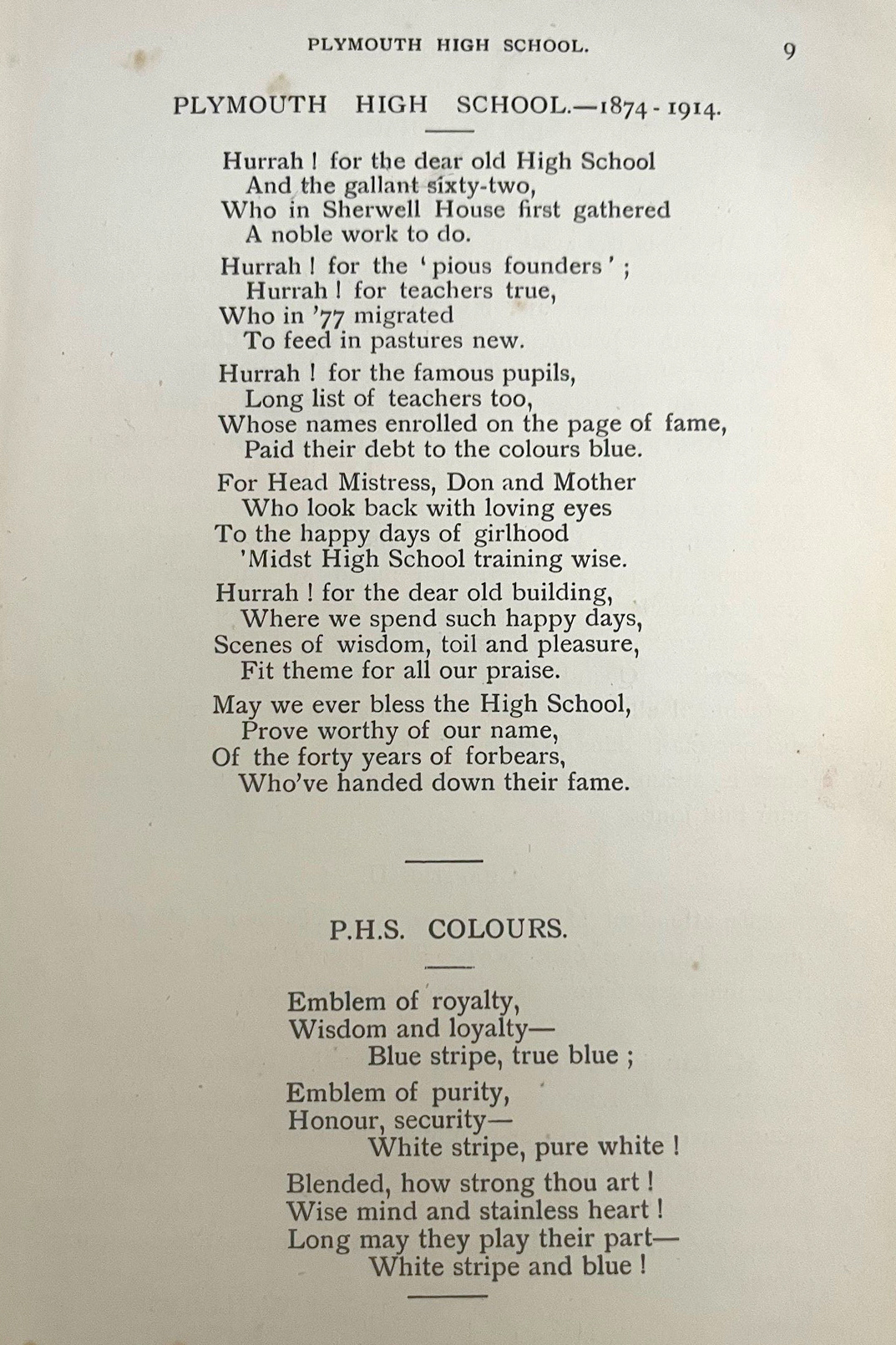
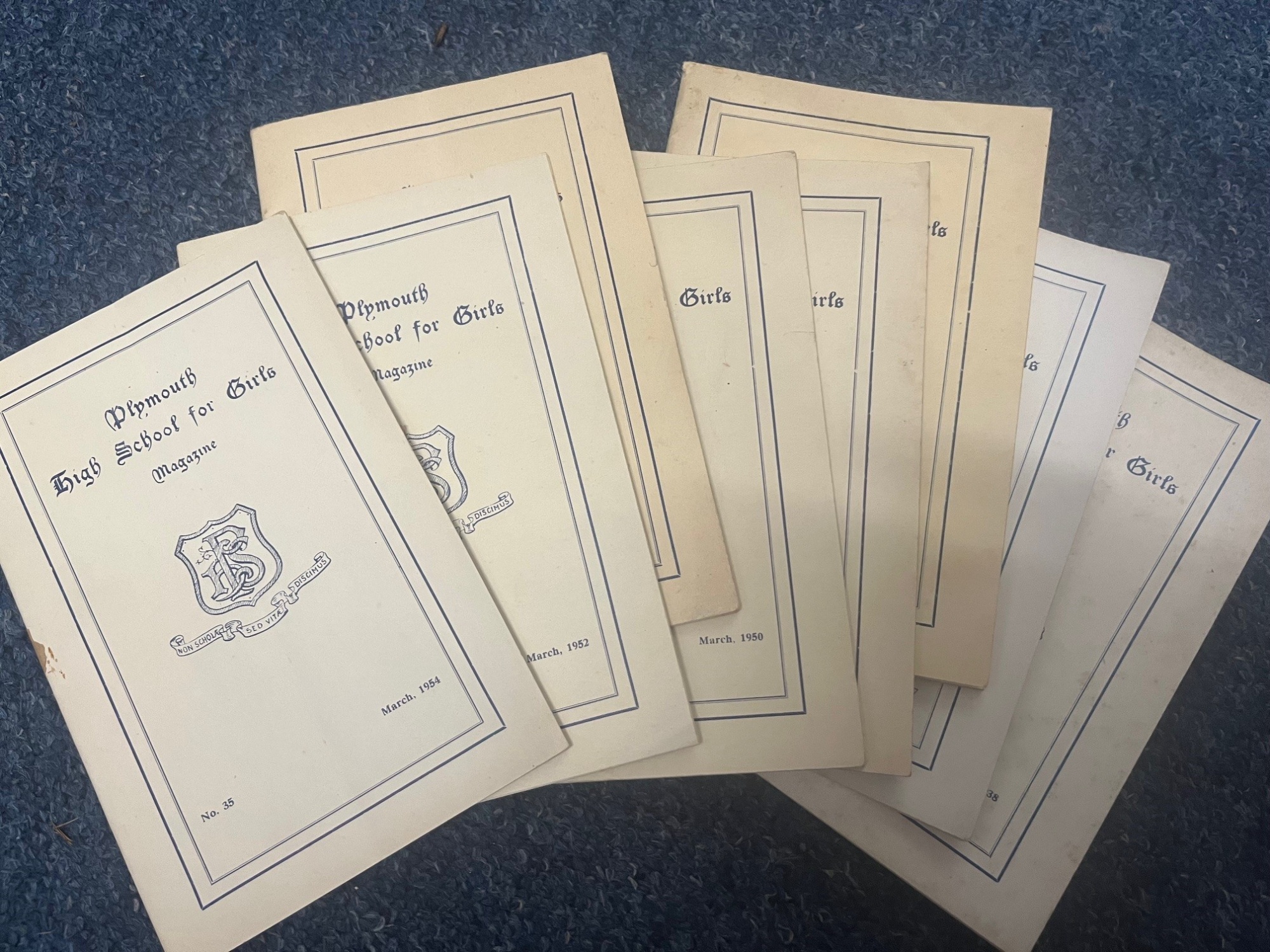
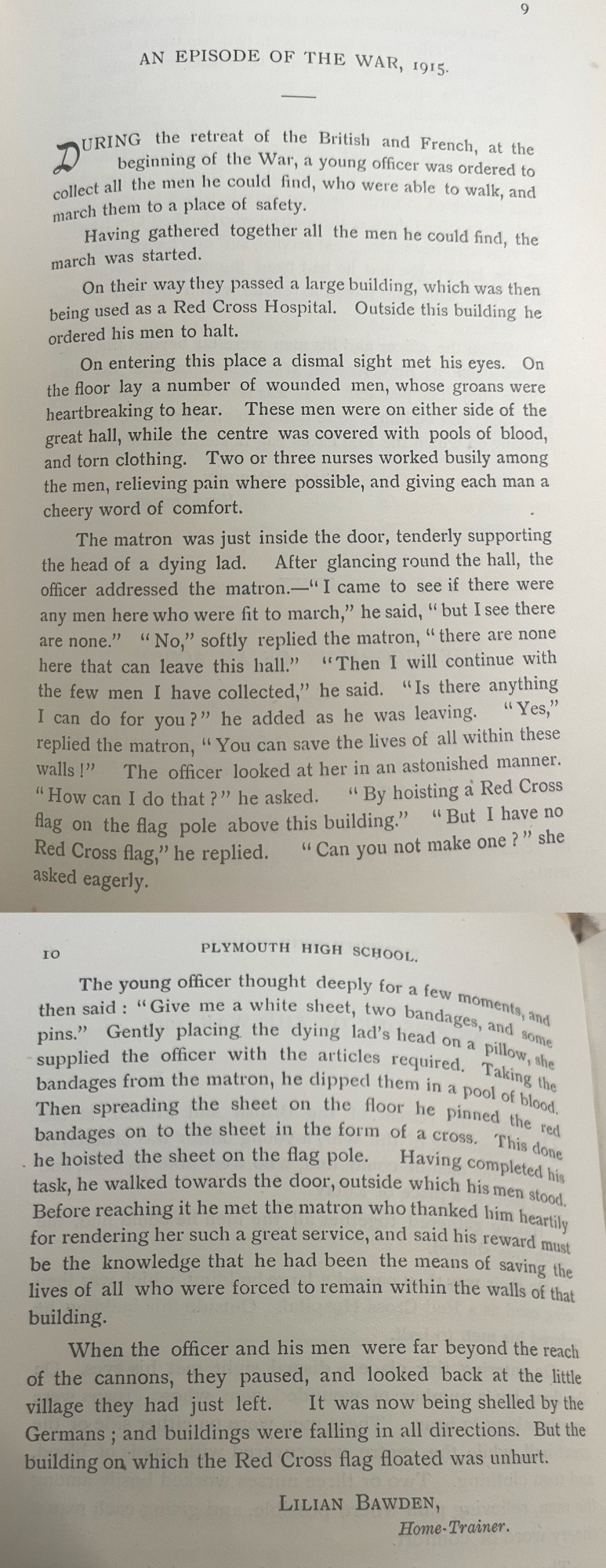
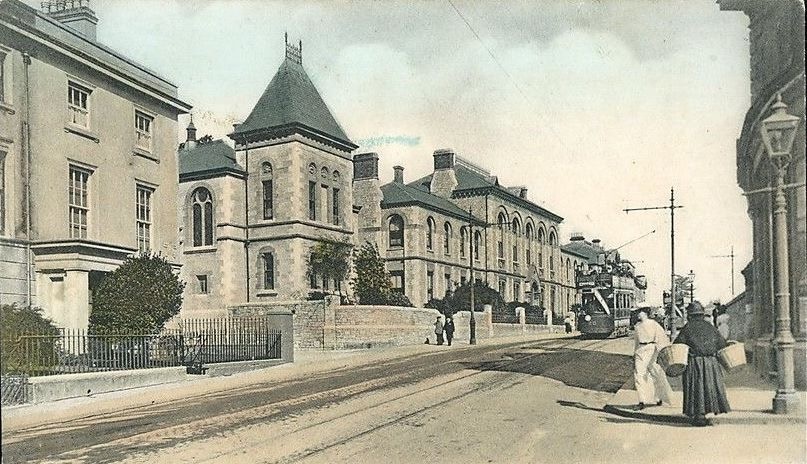
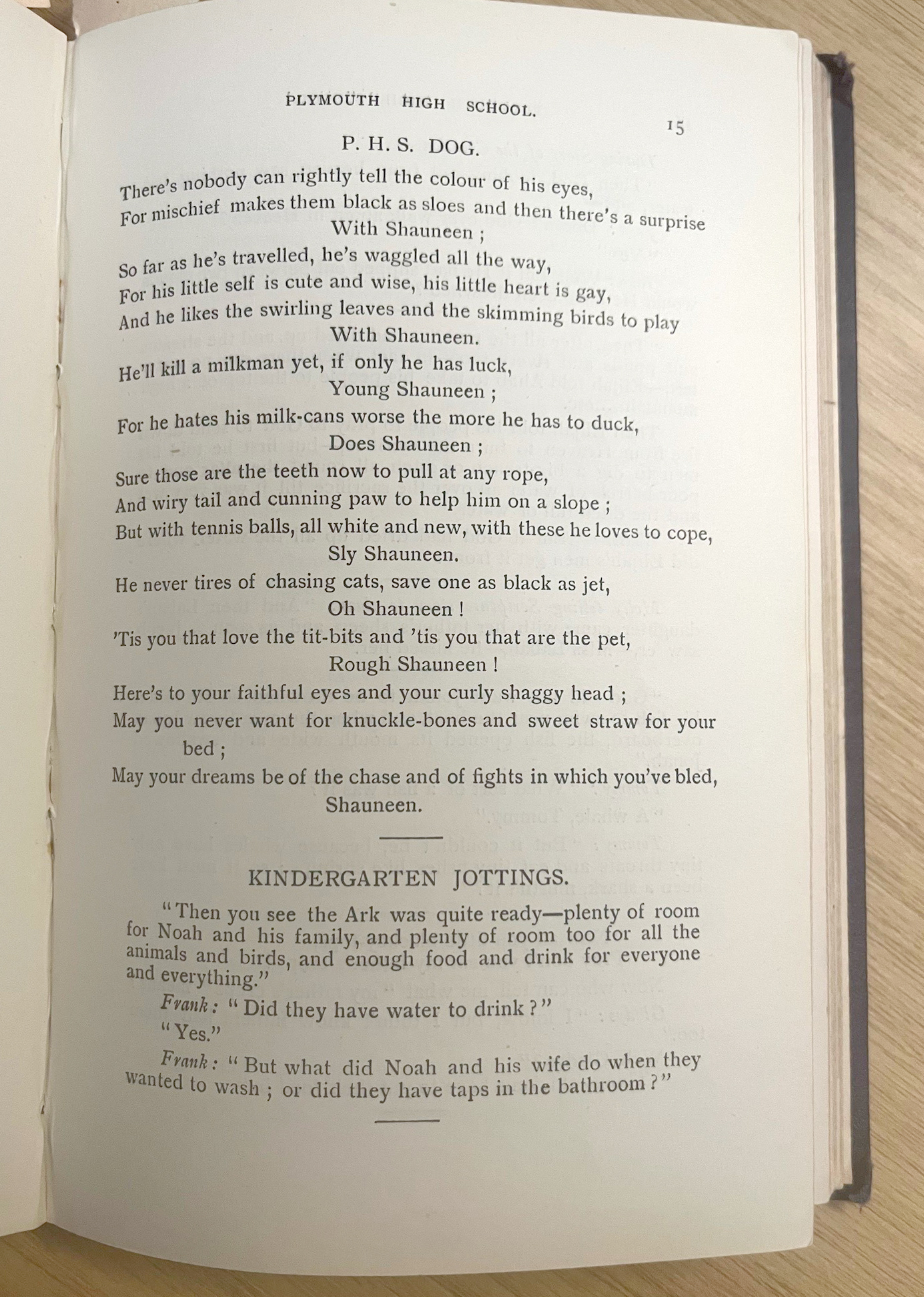
1920 -1929
|
1920 |
The girls were allowed to join a parade with other schools at the Barbican and Hoe to celebrate 300 years since the Mayflower sailed. “The greatest public event Plymouth has ever witnessed” with huge crowds. |
|
1920 |
Plymouth adopted a French town of Estaires & PHSG raised funds for repairs to this war-devastated city. |
|
1921 |
The introduction of the “school cap”, navy blue with a new badge with 4 emblems (the current shield)- Plymouth coat of arms, Minerva’s Owl (wisdom), beehive (industry) and PHS initials. The badge (the now PHSG logo)was designed by Miss Bate, under Miss Potter's direction. |
|
1921 |
Headteachers report – The school has grown to 209, and we are due to grow lower school next year. 10% of girls are free place scholarship with the rest paid fees. The Headmaster of Devonport boys presented the prizes and said 'he desired girls to be equally as well educated as boys', which was met with hearty claps and cheers. |
|
1922 |
Women could study at Oxford but were not allowed to be awarded a degree. However, this year, the rule changed. Miss Potter, the school Headmistress (who had studied at Oxford), travelled there to be formally awarded at last the degree she studied for. She appeared in assembly in her academic gown to an outburst of applause and cheers from the girls. – A moment in women’s history: degrees at last! |
|
1923 |
The first wide angle (whole school) school pupil photo taken.
|
|
1923 |
Despite advances in education, the school debate was “the girl of today is better fitted to be made a good housewife than the girl of a century ago”. |
|
1923 |
Formal PE lessons began for the first time with a dedicated teacher, twice a week, including hockey, netball, country dancing and eurythmics. |
|
1923 |
The kindergarden garden part of Plymouth High was closed. |
|
1924 |
For this year’s school debate, the school invited the boys' grammar & Plymouth college teams to compete. “too much time is spent in schools on useless subjects”. Discussions like this don’t change! |
|
1924 |
The school hosted a Jubilee Garden party with competitions e.g. decorated bicycles and guess the teacher from baby photos; there were various short plays and folk dancing. In addition, an end of year Jubilee dance was held where students and teachers wore fancy dress. Outfits included: highwayman, snowball, Christmas tree. The teacher's prize went to “Bluebeard the pirate”. |
|
1924 |
Miss Turnbull, the previous Headmistress, gave £50 to the school for the Jubilee, which was used to buy a piano. |
|
January 1925 |
Total abolition of fees was agreed and came into effect over a seven-year period. This meant that middle class families could not continue with their exclusive rights to the school and PHSG became accessible to all. |
|
1925 |
The National Savings Association formed in the school for girls to save their pocket money. |
|
1925 |
The girls were fortunate to have many stimulating visiting lecturers, e.g. an army general who had led an expedition to Everest, a navy Commodore describing an expedition to Antarctica, and GK Chesterton speaking on the dangers of plutocracy (high level discussion). |
|
1927 |
The school hat (hated by girls as a “turban”) was replaced by a new velour hat. |
|
1927 |
The school continued to grow, and 27 girls took national exams this year. |
|
1927 |
Life saving classes began at Mount Wise – “although to anyone watching it looked more like we were trying to drown each other”. |
|
1928 |
Four school drama performances during the year. Upper school: Sheridan’s 'The Critic', Third Year (Y9); Shakespeare’s 'As You Like It', Second Year (Y8); Thor’s Hammer. |
|
1928 |
Years 5 and 6 (Y11 & Y12) visited Plymouth Gas Works at St Judes and saw coal being poured into furnaces. This was followed a few weeks later by a trip to Plymouth Manure Works at Cattedown - as the girls heard that the boys' school had been and didn’t want to be outdone! ''The stench was horrendous'' but they saw the process to make acid (fertiliser). The next planned trip was to the Ice Factory. |
|
1928 |
Headteachers report – The school now has 244 students on roll, but the school has failed to produce a good school song yet! |
|
1928 |
The school debated with Devonport Boys: “This house believes the methods adopted by Trade Unions are inimical to the interests of the working class” and “foreign interference has been and is to the detriment of China”. The Lower school debate: “Everyone should be a vegetarian” (defeated), & “spirit of competition in school and business is not harmful” (won) and “it is the little things which matter” (won) but it is “with regret that many of the younger members have been stricken speechless during these debates” |
|
1929 |
A school inspection took place for needlework, drawing, art, physical training and singing. Five inspectors visited for the duration of a whole week. |
|
1929 |
An old girl, Constance Hoare (one of the first girls to be allowed to train as a medical doctor) spoke to the girls, exhorting “them to show they had some grit”. |
|
1929 |
Year 4 (Y10) report in the school magazine of their walk around old Plymouth, the winding dark narrow streets, old Tudor buildings, including the Headteachers' house, with its fine plaster ceilings and Tudor beams. All of which were subsequently bombed, so this trip description is fascinating about old Plymouth. |
|
1929 |
The school attended a debate with several other city schools as to whether 'disarmament was the only way to peace'. Motion defeated. |
|
1929 |
New PE activities were introduced, which included Greek dancing, gymnastics and athletics. |
|
1929 |
19 girls took national exams (School Certificate i.e. year 11) |
|
1929 |
PHS set up its own Girl Guide Troop and took Morse code and naturalists tests |
|
1929 |
Plymouth High School report shows that there were 11 staff, 4 visiting staff and 274 students on roll. |

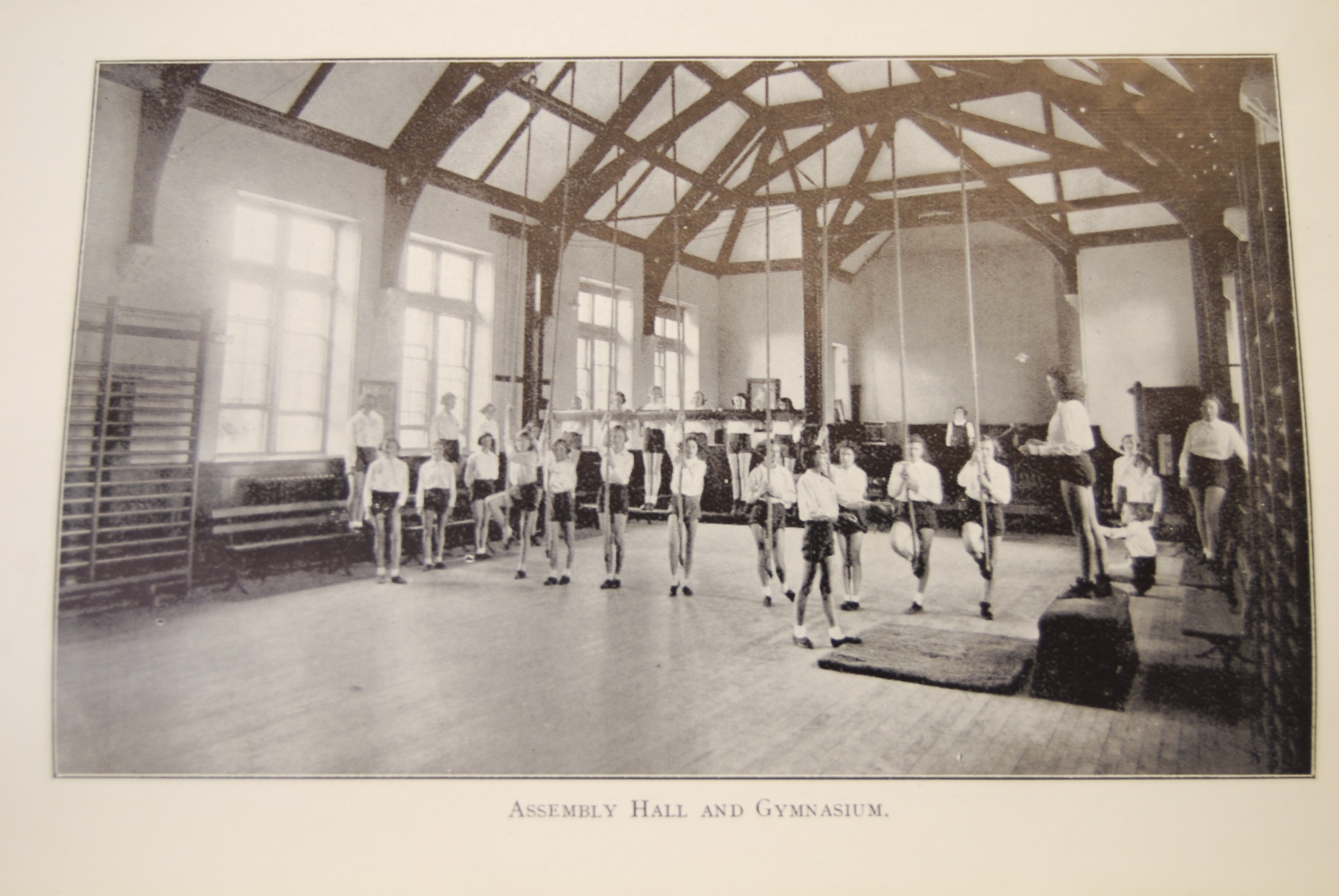
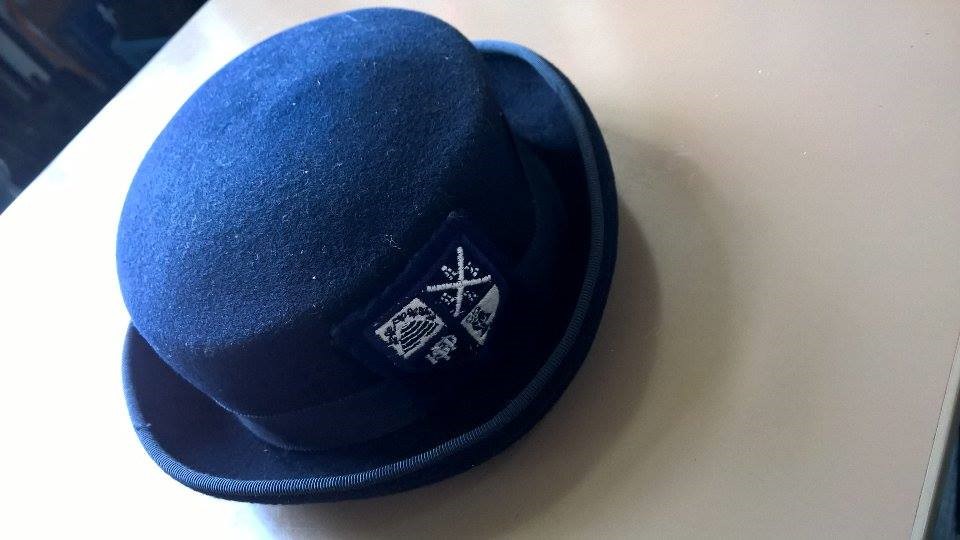
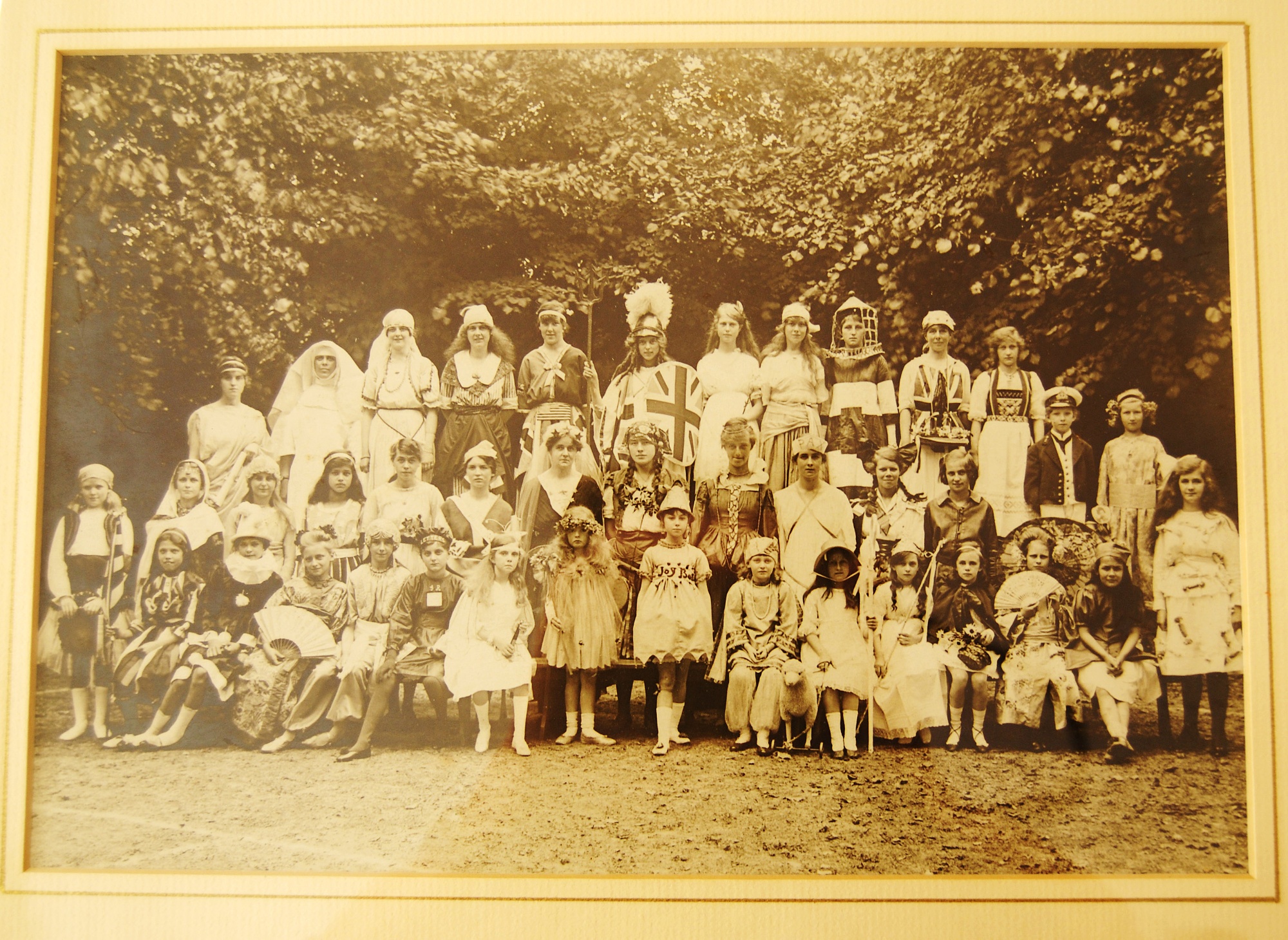
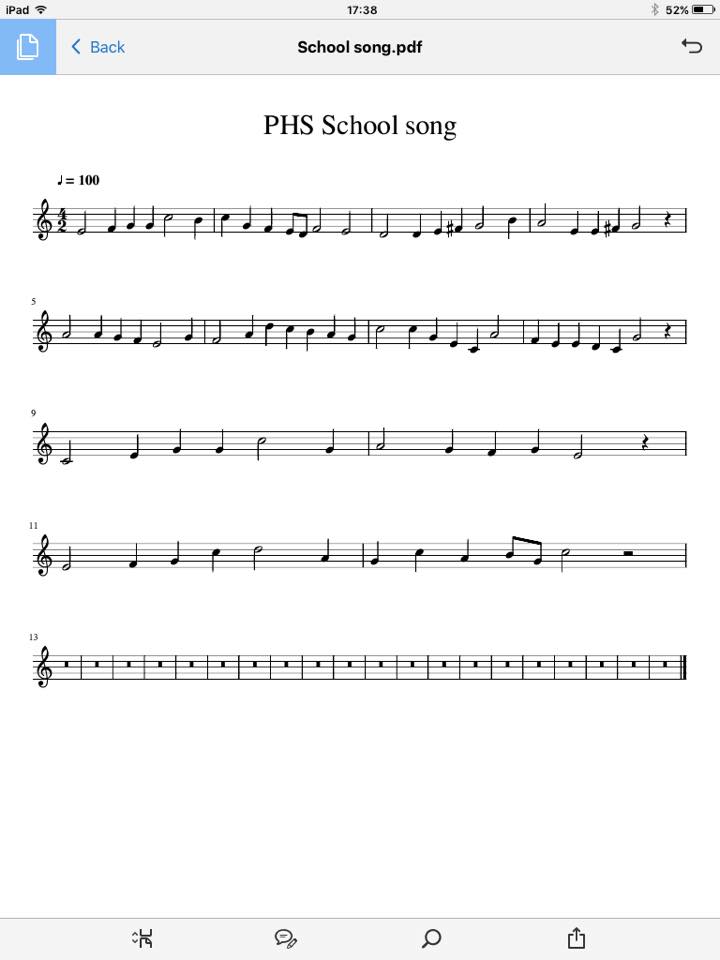
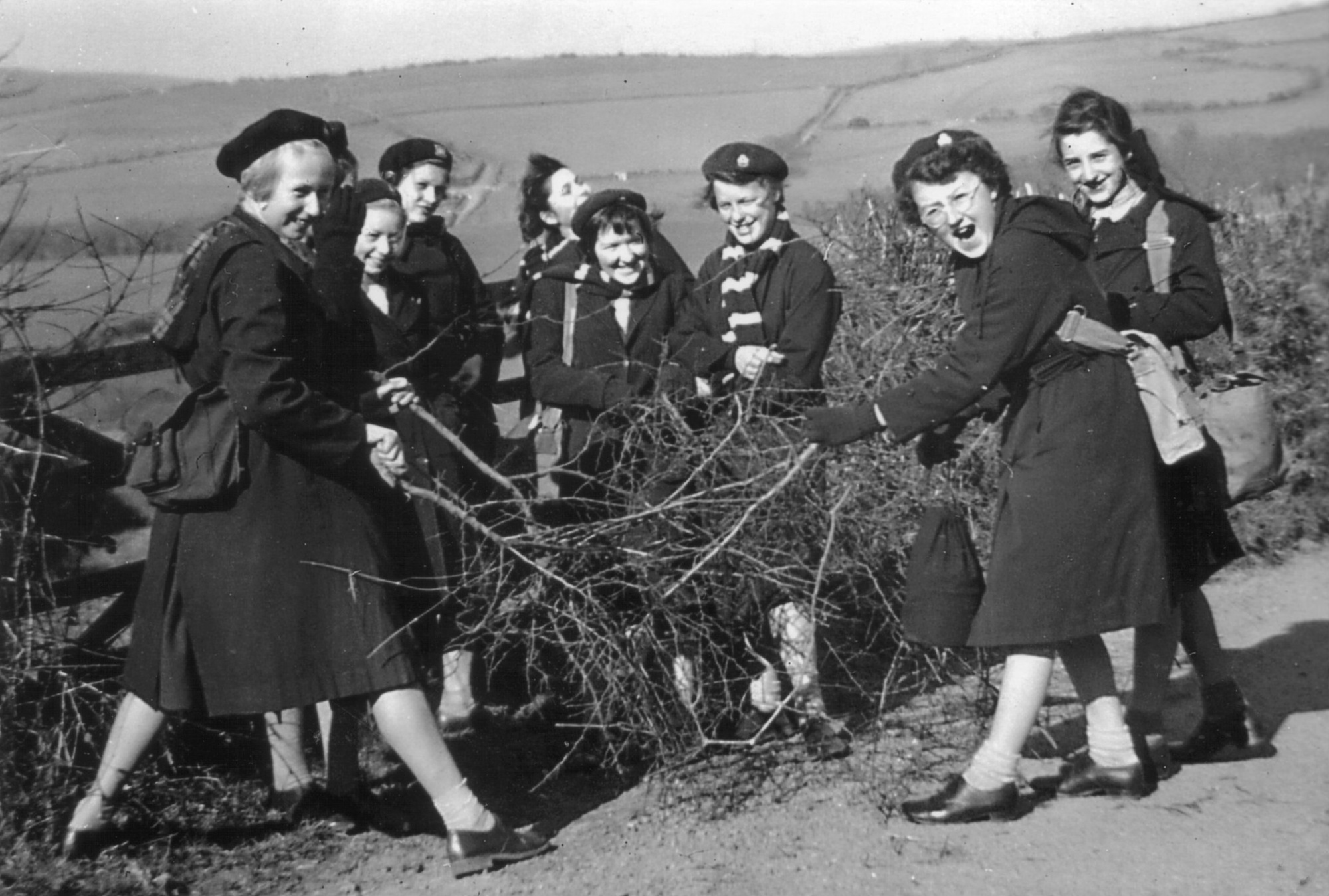
1930 - 1939
|
1931 |
Miss Violet Turner took over as Headmistress. A fine figure of a woman, with the extraordinary blend of the awe inspiring qualities of the dowager duchess and the genuine warmth and simplicity of a homemaker and keen gardener. She dominated assemblies with her imposing, gown-clad stature, her presence always felt by the firmness of her pronouncements. |
|
1931 |
The first overseas school trip saw 284 girls head to France. |
|
1931 |
37 girls took national exams (School Certificate i.e. Year 11) |
|
1931 |
The Public Entrance Test was created. This meant that, as now, admission to the school could only be achieved by passing this test. Even if parents wished, it was difficult for children who had not been through elementary education to pass the test and secure a place at Plymouth High School for Girls. Pupils who were awarded a place at the school were of a high calibre of education and the school was of a prestigious status. The balance was now weighted against those for whom the school was founded. Although this was inevitable, many regarded this as a ‘Major Disaster’. This caused a cleavage between the ‘Old Girls’ and new admissions, who came from a completely different class of society. |
|
1931 |
The school magazine published a story by a Y7 student about life in 2031! – She imagines a robot delivering her breakfast and an amazing invention: a zip fastener, not buttons on her clothes! She goes to school by plane (open top so needs a flying jacket) and she learns Martian and aeroplane acrobats. (still a dream for us at school). |
|
1932 |
Students set up a junior branch of the League of Nations (forerunner of the United Nations) to focus on world peace. |
|
1932 |
Lady Astor (1st female MP and MP for Plymouth) presented prizes on Speech Day. |
|
1933 |
Fees were reintroduced and calculated on a ‘means test’ to stabilise the national economy. ONLY girls who lived in the city could take the exam as they were meant for a city central district. The location of the school meant that the school included a special Headmistress qualifying test which was not restricted to city girls but would include Hartley, Crownhill and Plymstock. There was continued dissatisfaction on the entrance from the middle class and pupils from private schools. Chairman of the Education committee, Alderman McDonald, suggested and implemented that a provision was made for the admission of 50% of new entrants to be ‘full’ fee-payers. However, all entrants were still required to take an entrance test. This only actually resulted in around 10% of entrants as the test was not discriminative against class. The ‘full’ fee at this time was £24 per annum and there were 278 students on roll. |
|
1934 |
Walter De La Mare (the famous poet) spoke in the school hall. Other school students were invited. |
|
1935 |
Chemistry was added to the syllabus to enable girls to take the subject for the Higher General Science for School Certificate. Up until now, only Botany was studied for Science. Physics, Biology and Zoology were added post World War Two. |
|
1935 |
Two school trips are reported to have taken place in this year. 1) London, including a visit to Lady Astor’s house. 2) A field trip to the Dewerstone, going by train from Mutley to Clearwater station and then walking to the moor. |
|
1936 |
Rediffusion donated a free wireless (radio) and a speaker was put up in the Main Hall for the girls to listen to “Talks for schools” between 2-5pm each day. The whole school assembled to hear King Edward VIII’s speech & abdication announcement on the new radio. |
|
1936 |
The school song was performed for the first time during speech day (written by Miss Saville, and composed by teacher Miss Hartland). During the speech day, Headteacher Ms Turner also lamented that the girls lack ambition and only see their future with the typewriter or calculator and urged them to greater ambition. |
|
1936 |
Silver Jubilee of King George V – all students from Plymouth Schools attended St Andrews church for a service. A selected group of students then travelled to the Hoe to watch the naval review of ships while the rest of the students went to the cinema to watch one film about the industries of Britain, and another about important events during the King’s reign. |
|
1936 |
The school’s League of Nations association were becoming very distressed by the deteriorating international situation and noises of war. The ‘Current Events’ lessons were introduced to the upper school the following academic year, given the international situation. Events were discussed each week in a dedicated lesson. |
|
1937 |
The school had grown to 302 students, 14 staff and 2 visiting staff and was in desperate need of a new building. |
|
1937 |
Plymouth High took part in a radical 2-year experiment to remove homework in the first forms to increase the productivity of the students. The experiment failed miserably. The work produced by the forms was not up to the normal high standard. It was concluded that the relief from homework instead of meaning more rest for students, merely expanded their energy on other activities. |
|
31st August 1939 |
The New Wing, with its laboratories, Cookery Room and extra cloak rooms was completed on the eve of the War in 1939. There were 315 students on roll. 1971 school magazine describes the “regret at the demolition of buildings of historic interest. The fine old Jacobean house that stood in the school grounds had been the residence of the Headmistress but was used by Miss Turner for additional classrooms for the increasing number of pupils and staff. In 1938, the house was pulled down to be replaced by the New Wing for science laboratories and Domestic Science, cloakrooms and two classrooms.’’ |
|
1st September 1939 |
World War Two at Plymouth High School was very different from the first. Air raid shelters were built underneath the tennis courts and there were regular drills and alarms where the pupils and staff would file into them for safety. This became an almost daily occurrence and, on one occasion, the alert sounded in the middle of an Oxford School Certificate Examination, which included some boys from Sutton High School for Boys as well as the Plymouth High School Girls. When the all-clear was sounded, they went back into the Main Hall to finish their paper! |
|
1939 |
Sinks were built in the hallways of the school as it became a ‘back up’ hospital. It was found that if the main staircase was to be blocked, there would be no way out from the 'Studio' and adjoining rooms. This is when the 'trap door' was created outside of Room 4. A fixed ladder down into a cubbyhole led to the Headmistress's office on the ground floor and provided an alternative escape. Gas and water were often shut off. Coal fires were made in the basement classrooms to heat the building and Miss Hulbert (school cook) cooked dinners in the little old Kitchener in the caretakers' office. |
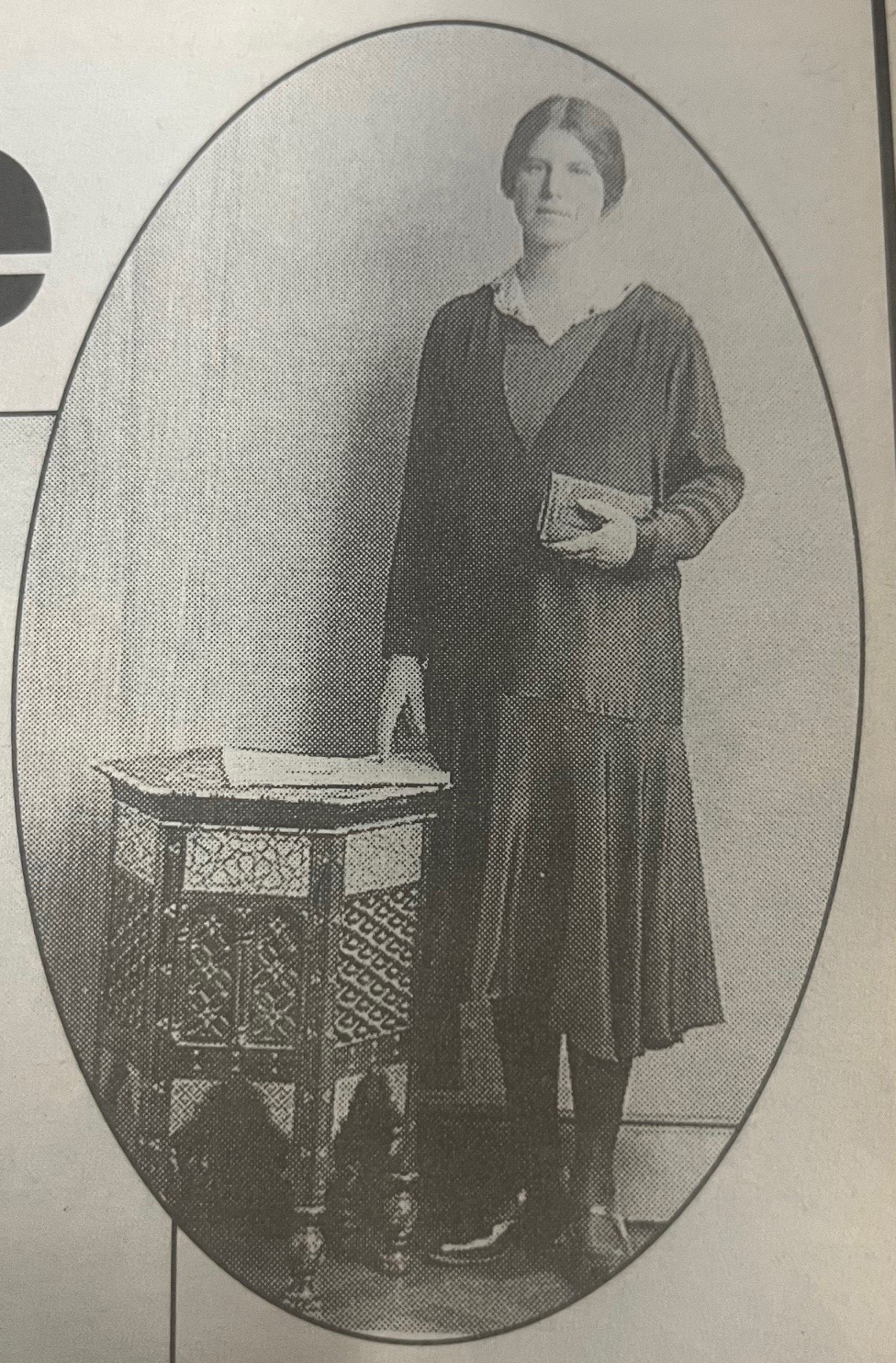
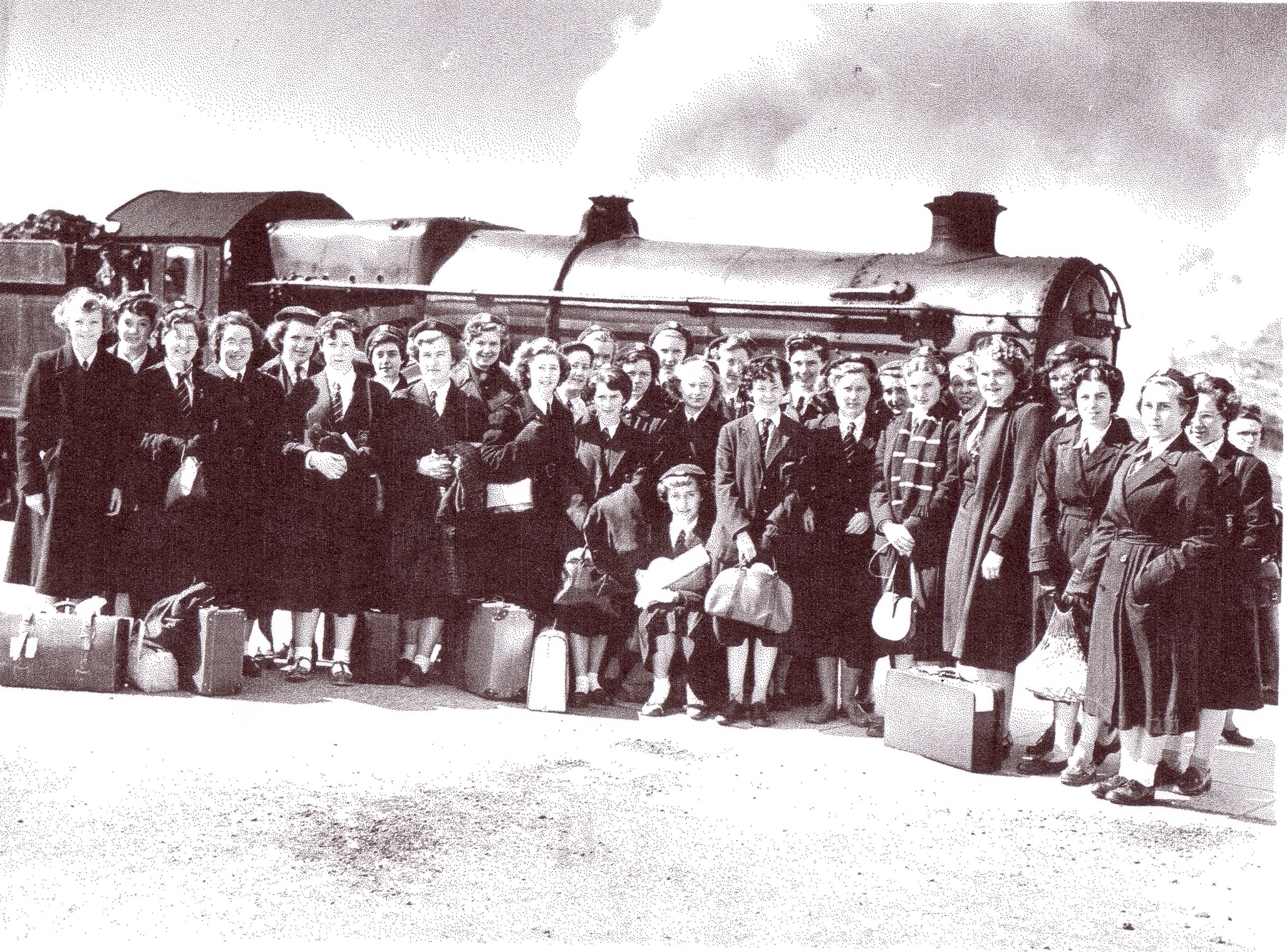
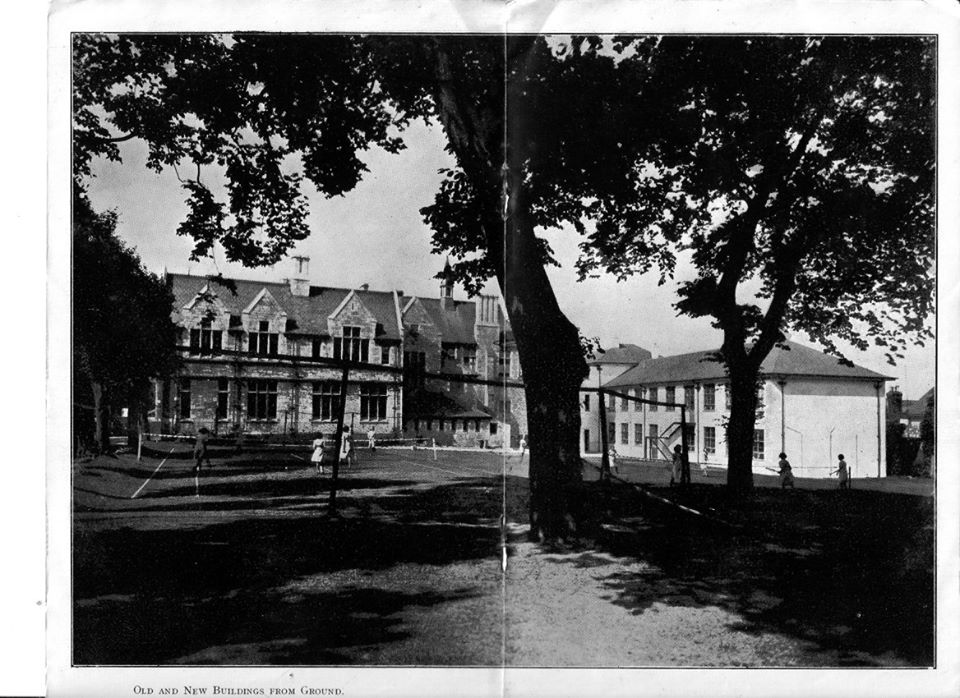
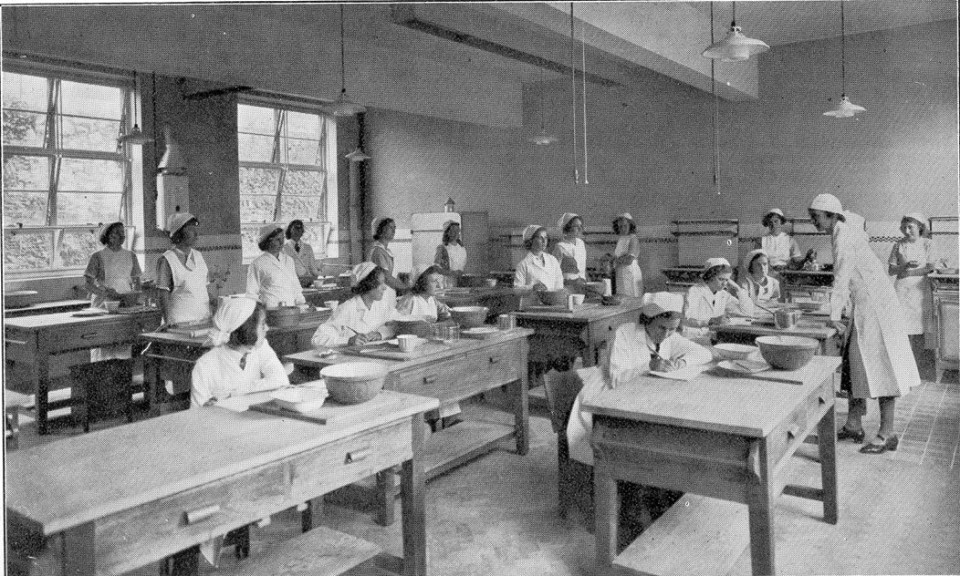
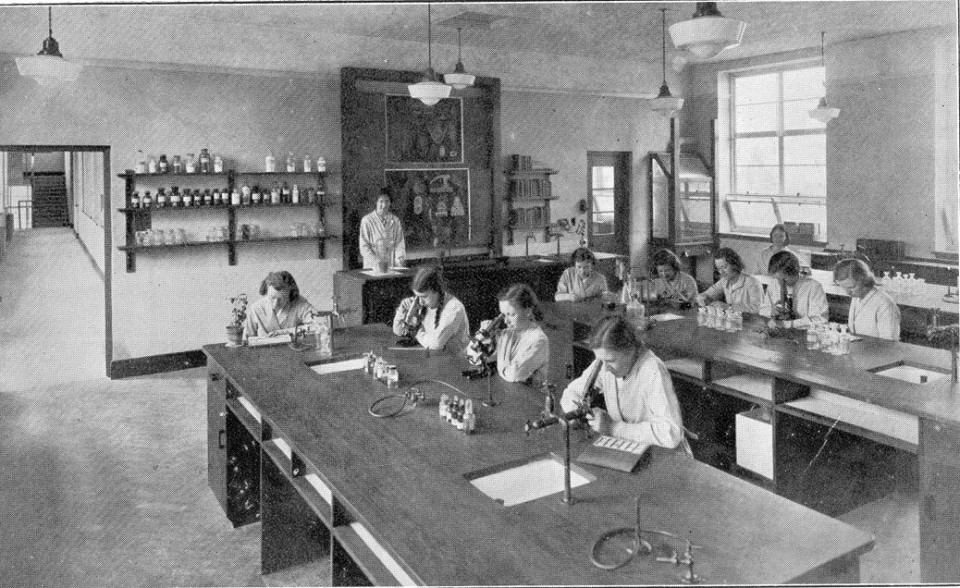
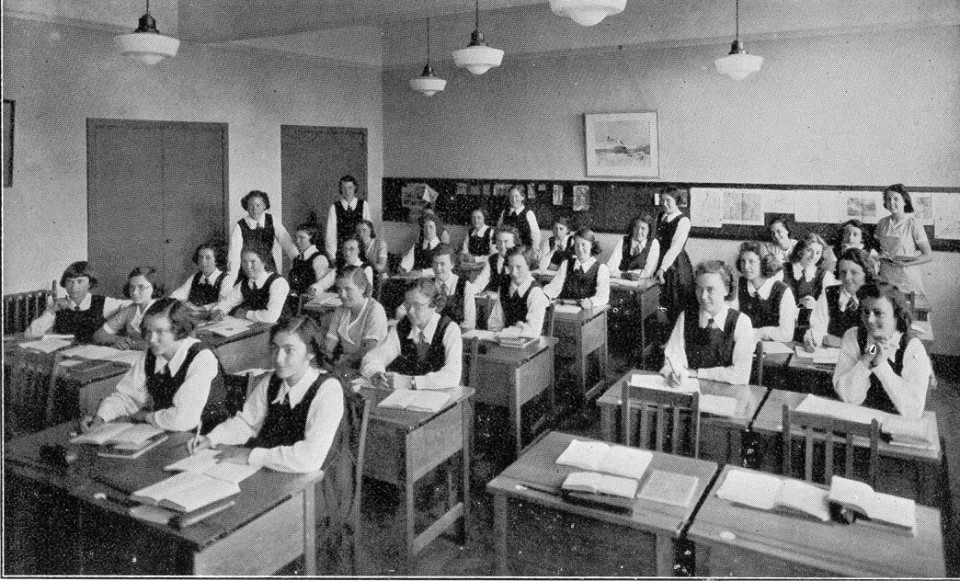
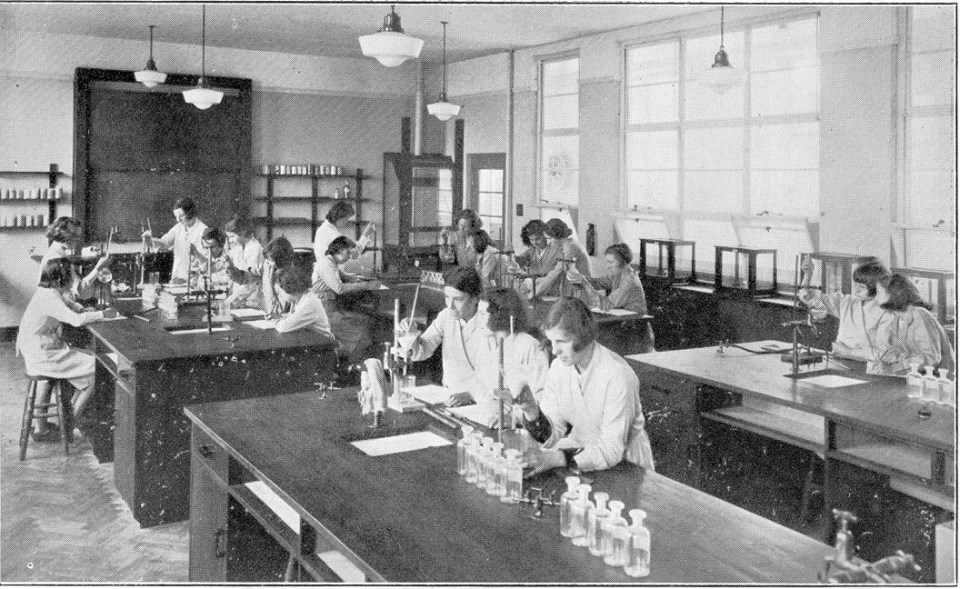
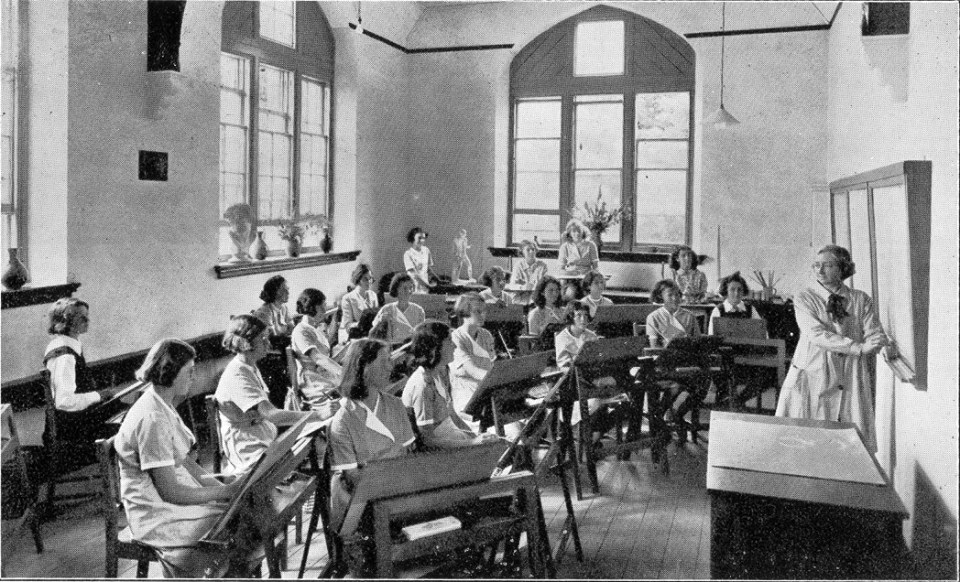
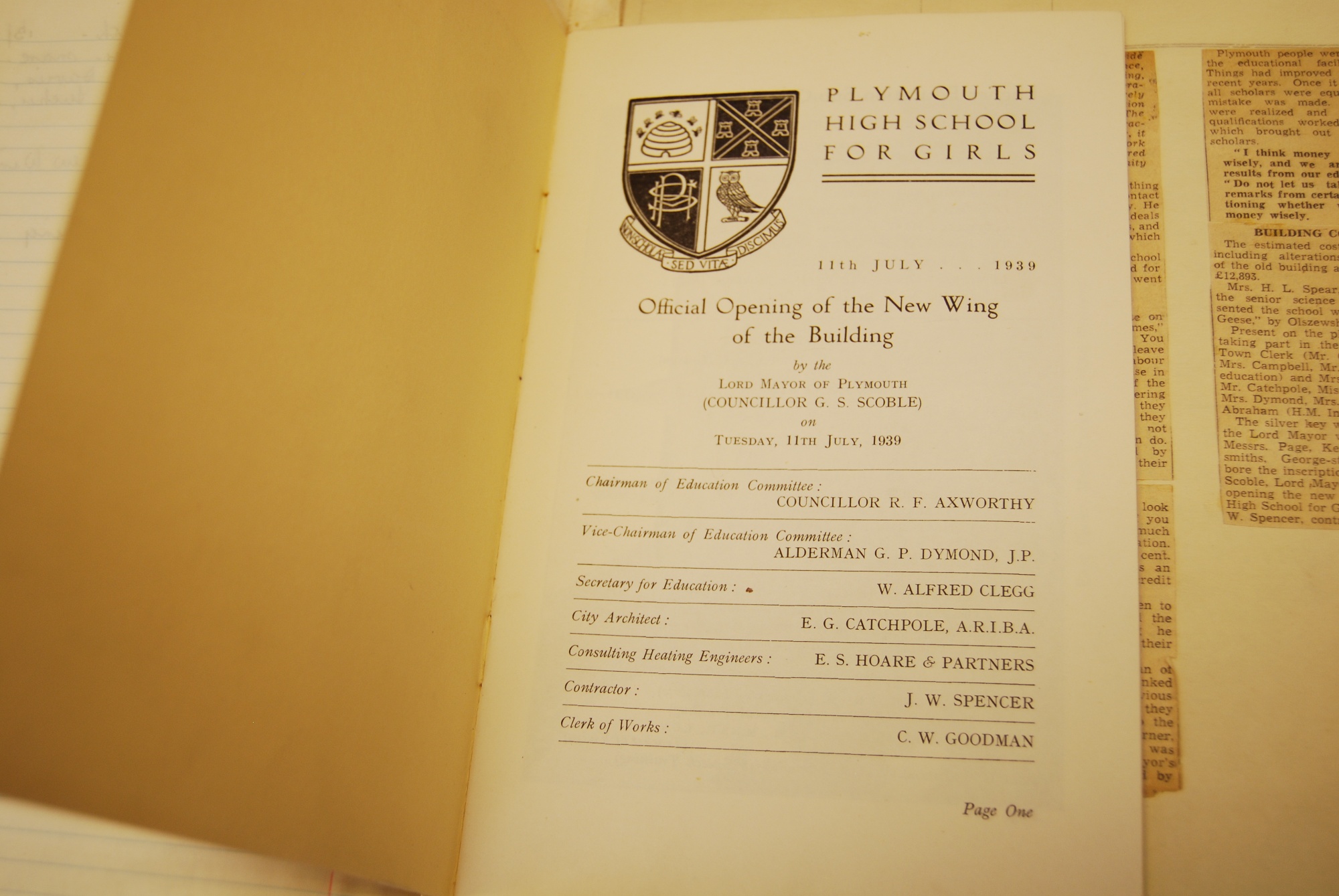
1940 - 1949
|
1941 |
School magazines were put on hold between 1941 – 1947 and events were recorded daily in the Headteacher’s Diary. |
|
March 1941 |
The front of the school was shaken by a blast from the neighbouring wing of the Blind Institute. Sadly, children from the institute died from the blast. However, there is no record of the number. |
|
April 1941 |
The Main Hall roof caught fire following a raid. The prompt action of Mr Pillar, a neighbour, kept the school hoses spraying on the walls until the fire brigade arrived and saved the rest of the building. The school owes a lasting debt of gratitude to Mr Pillar and his colleagues. |
|
May 1941 |
A bomb fell in the school garden, slicing through one of the underground shelters and breaking almost all of the remaining school windows in the school. The initials formed in the stained glass on the front door of the school are those of Archbishop Temple, Frederick Exon Temple. He was the first chairman of the school and performed the opening ceremony. The glass was shattered in the Blitz of May 1941 and the fragments were carefully preserved and skilfully restored. The initials on the other door are thought to be those of Mr Furacre, a celebrated maker of the stained glass. |
|
14th May 1941 |
Some pupils were evacuated to Fowey, Cornwall. They lived in billets (with private families) and had odd rooms all over the town for classrooms. The town hall was used for gymnastics and the local school shared their playing fields. In November 1942, they were moved to The Cliffdene Hotel, on the sea front of Newquay, where they had a day school and accommodation under one roof. The girls were fortunate that they received full-time unbroken instruction throughout the war. Miss Gates, the school’s Senior Mistress, took charge of the evacuated school. |
|
1941 |
Devonport High School became the headquarters for the Fire Service, Stoke Damerel became a hospital. Plymouth High School for Girls became known as the ‘Emergency High School’. Students left behind from the evacuation along with students from the other two girls' schools attended to continue their education in the challenging circumstances. Miss Turner remained the Headmistress and coordinated staff and students from all 3 schools. ‘’Along with PHS girls, Miss Turner walked many miles up and down to the school air raid shelters during school hours. She saw the school bombed, half a roofless shell, plaster and glass everywhere, and yet she never appeared daunted.” Numbers fluctuated to over 500 pupils and at times up to 700. Fixtures had to be removed to the newly renovated New Wing to create more space. |
|
Spring 1941 |
The Cookery Room and Room 20 were opened up to the community as a communal feeding centre. The school was one of three of these centres which served a two-course meal between noon and 2:30 pm and again between 5:30 pm and 7:30 pm for the price of 9d (nine old pence) to the local community. The centre was run by the school’s cook, Miss Hulbert, and was later renamed ‘British Restaurant’. Miss Hulbert was assisted by voluntary workers, parents and friends to prepare and cook meals and the rest of the staff took turns serving and organised crowds and pupils. Miss Hulbert always made sure that there was as much variety as possible with the rations, with perfect cooking. All the customers were appreciative and pleasant and the British Restaurant would feed as many as 600 in one sitting. Some dishes included: custard and vegetable pies, savoury stuffing and curry sauce. Herbs such as parsley, thyme and rosemary were grown in the school garden. The 1971 school magazine remembers Miss Turner the Headteacher “[in the school’s war time restaurant], she carved innumerable portions of meat, flushed and overworked, but always kind and gracious as she faced a never ending queue of the pitiful bereaved and bombed out victims of the air raids on Plymouth as she, and the rest of the staff, organised the Schools communal feeding service, not only during the week but on Saturdays as well. Added to this, the School was kept open during the summer holidays and a programme of sports and dramatic activities crafts and hobbies to keep the girls off the streets when air raids were plaguing the city.” The 1974 school magazine states: gas and electricity supplies were cut off in the area so “the staff made open fires in the classrooms on which pans were heated and a midday meal prepared”. |
|
1945 |
Abolition of all school fees came with the 1945 Education Act. |
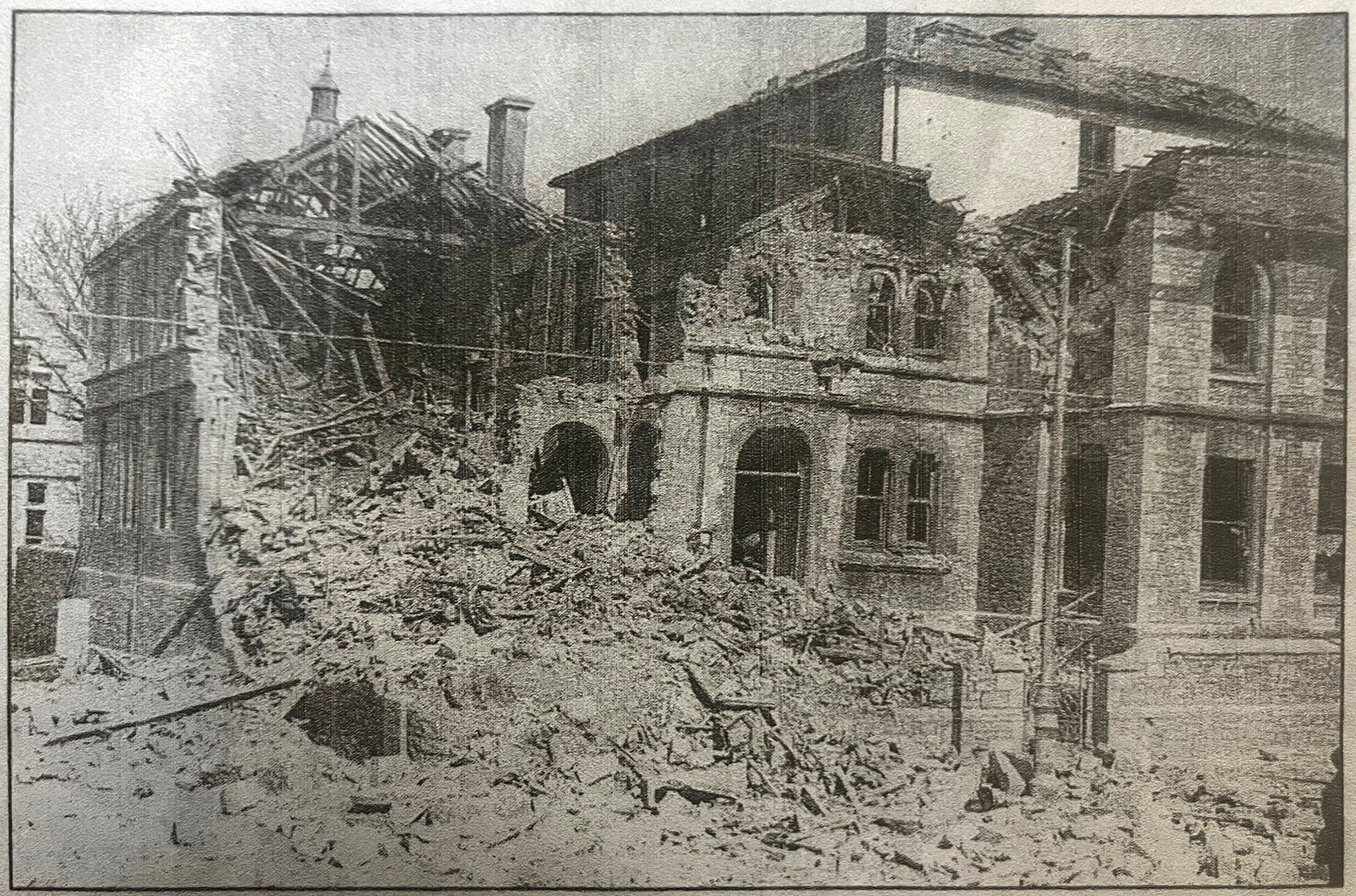
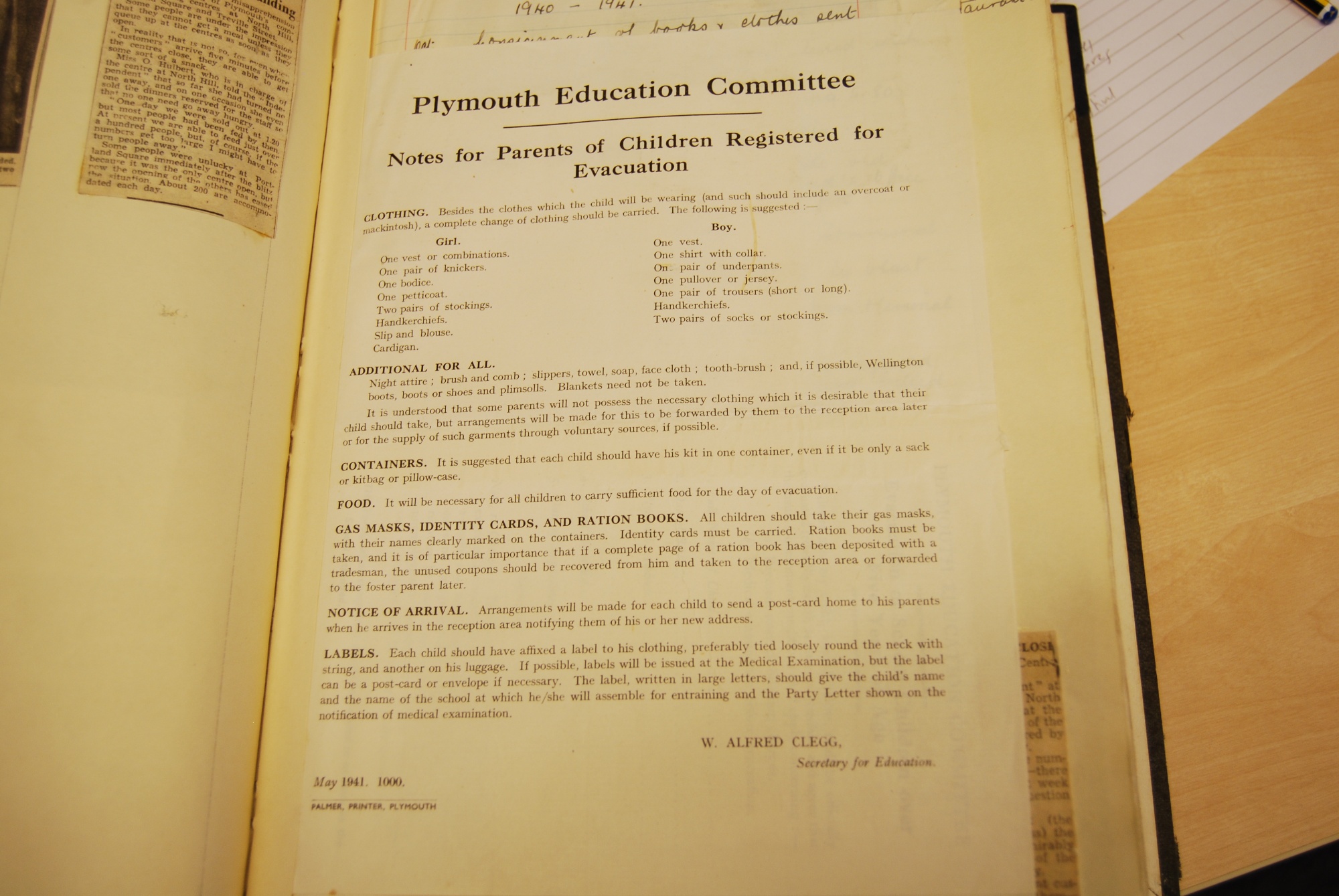
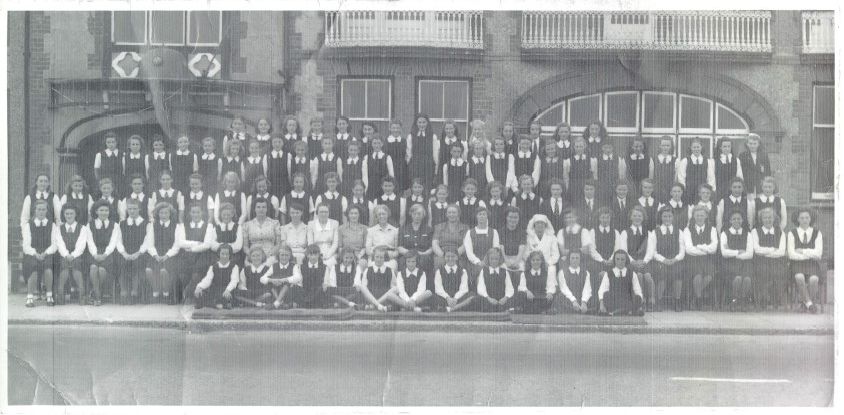
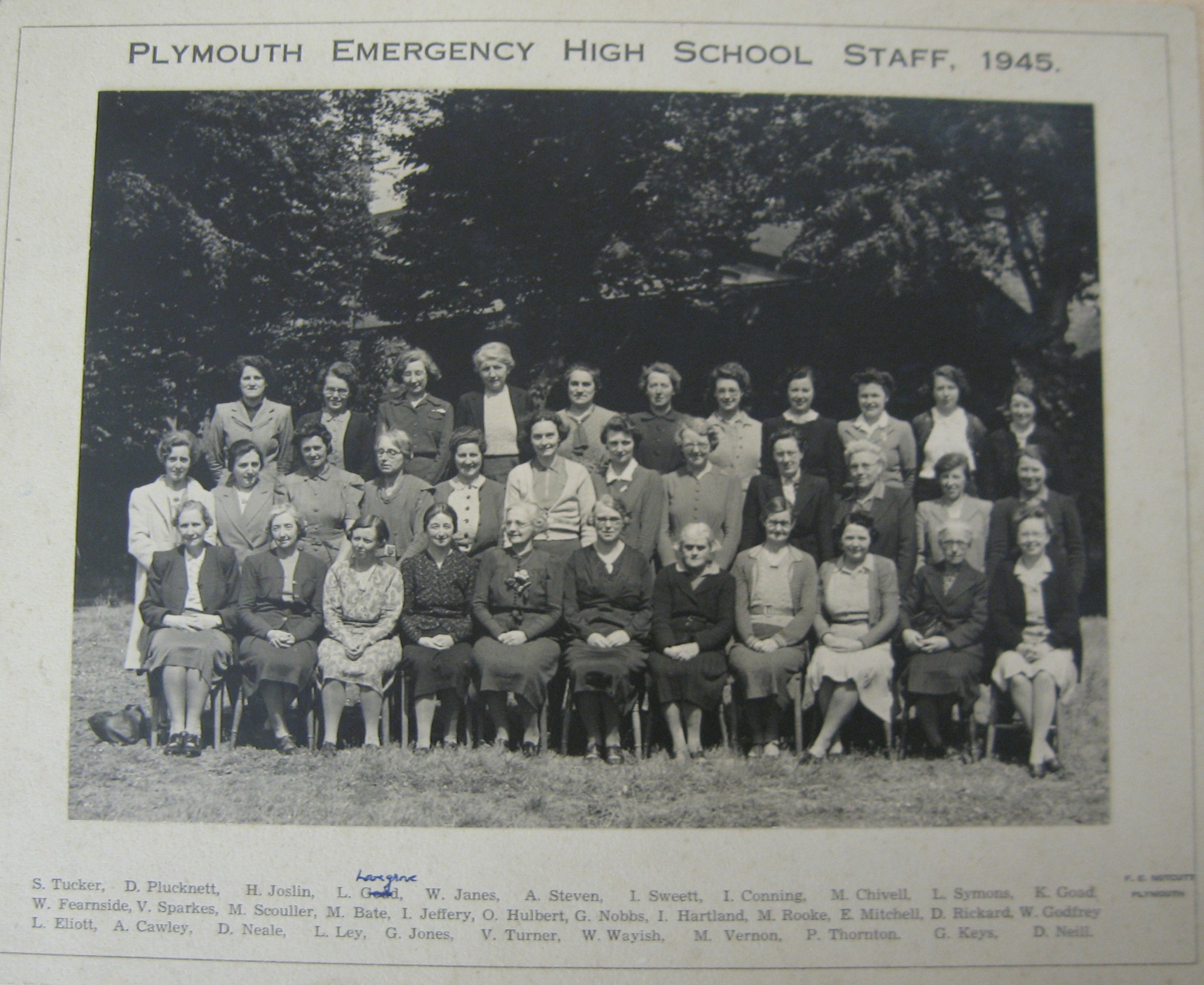
1950-1959
|
1950 |
Student Charity Ambassadors were created. The school bazaar was an annual event dating back to 1910, where lessons were collapsed for the day, stalls were laid out and monies raised for local charities. This usually went to the local hospital for the purchase of cots. However, when the cots were no longer supported by voluntary contributions, the students voted and chose the charities which were supported by the school. The first charity voted for by the students was the ‘Society for Medical Research'. Mr Lawrence Spear, acting as Father Christmas, caught fire during the school bazaar and had to be extinguished by the Headmistress, Miss Turner. Mr Spear acted as Father Christmas for many years and his family donated two trophies to the school following his death, which are awarded to students during the Schools annual achievement ceremony. |
||||||||||||
|
July 1951 |
The first sports day was held and organised by Miss Joyce Davis. The events included running, hurdling, high jump, long jump, discus, javelin, relay races and team races. There were also sack and obstacle races. The Headteacher described the day: "A very high standard of skill was shown by the candidates, and we owe the very splendid beginning that has been made to the energy and enthusiasm of Miss Joyce Davis''. |
||||||||||||
|
1954 |
Miss Winifred Miller became the Headmistress |
||||||||||||
|
1955 |
New events were introduced to the school. They included: 1. Founders Day Service (14th Sept). 2. Carol Service in December. 3. Speech Day moved to the Central Hall, March (then moved in 1958 to November and to the Guildhall in 1960). Speech day continued to be a PHSG annual tradition until the financial crisis of 1976. 4. Open day in July. |
||||||||||||
|
1955 |
13 students took A Levels, 56 took O Levels (a huge increase) and 14 took CSEs |
||||||||||||
|
1955 |
The school choir was recorded by the BBC for Children's hour, broadcast 14th April 1956, and asked to do Walrus and Carpenter for BBC in July broadcast Oct 1956. |
||||||||||||
|
1956 |
The houses were created and the house shield was presented in 1957. The first ever winner of the House Shield was Temple!
The house shield was painted by a parent who was a sign writer in the Royal Naval Dockyard. The first house festival was the Music festival, followed by a Shakespeare Drama festival. Other house competitions included sports day and tennis. House captains were required to write house reports in every annual school magazine. |
||||||||||||
|
1956 |
The school Parents and Teacher Association (PTA) was founded on the 29th June 1956. One family from each form were to be on committee. |
||||||||||||
|
1957 |
25 students took A Levels, 58 took O Levels – another increase. |
||||||||||||
|
1958 |
In September 1958, there were 384 students on roll, of which 74 were in sixth form. 77 girls were entered for GCE ‘O’ Level and 29 for GCE ‘A’ and scholarship level exams. The pass rate was over 90% at all levels. |
||||||||||||
|
1958 |
From 1958 onwards, there was a very obvious increase in the number of clubs, trips and activities both within the school, the city and wider afield. Life as a student became much livelier and brimming with opportunity. |
||||||||||||
|
1958 |
The first PHSG school play was performed at the Globe Theatre, in Stonehouse. It was a huge success and an event that was then repeated over the next few years. |
||||||||||||
|
1958 |
The PHSG athletics team won the Devon Public and Grammar Schools Championship. |
||||||||||||
|
1959 |
The redecoration of the school, which started in 1957, was completed. The PTA spent £50 on new shrubs and plants for the grounds (the courts were all grass then) and a new bench (now in Mrs Payne's possession). |
||||||||||||
|
1959 |
Belts that matched the colour of your house were introduced to the school uniform in September 1959 which students felt increased their house loyalty. |
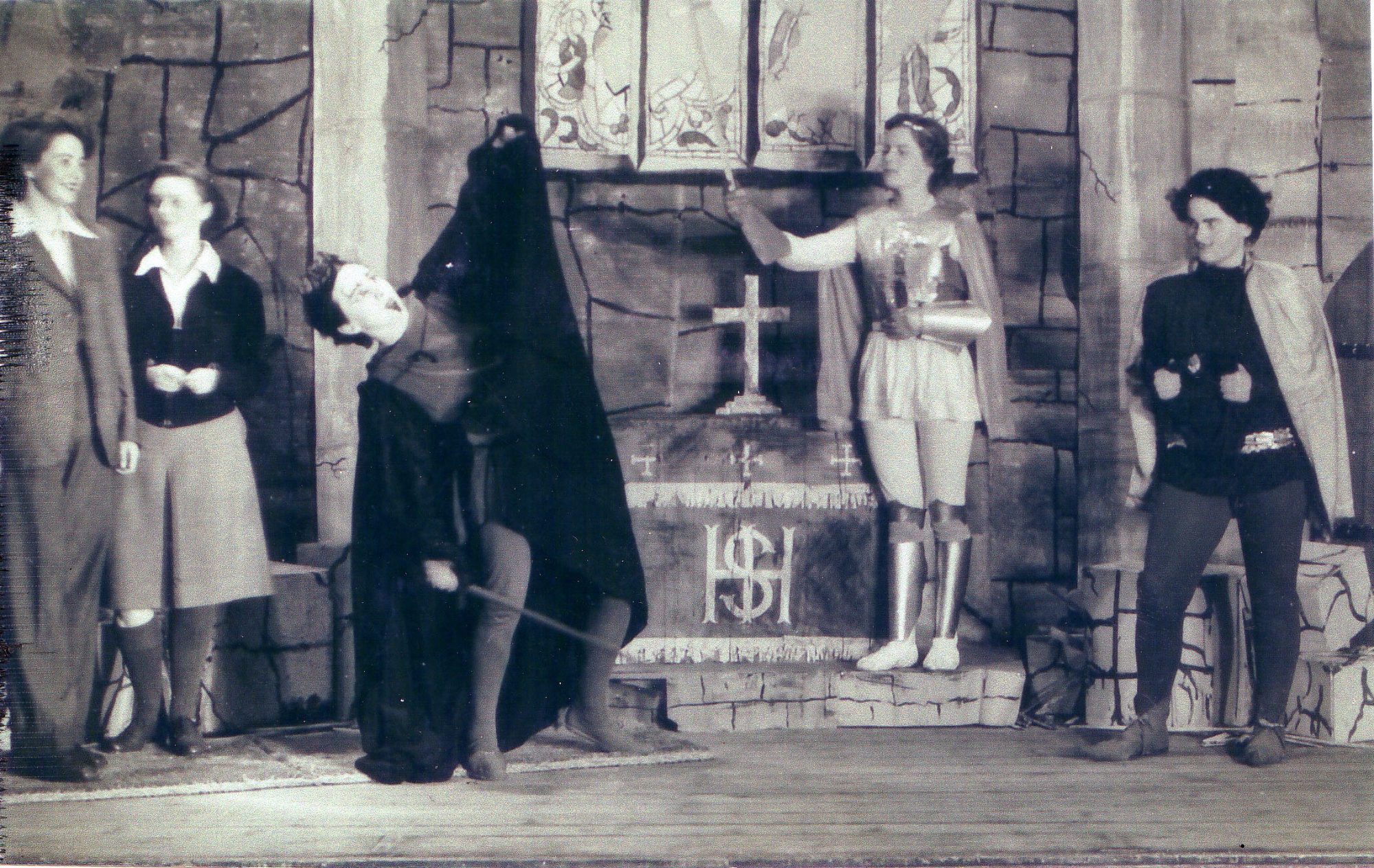
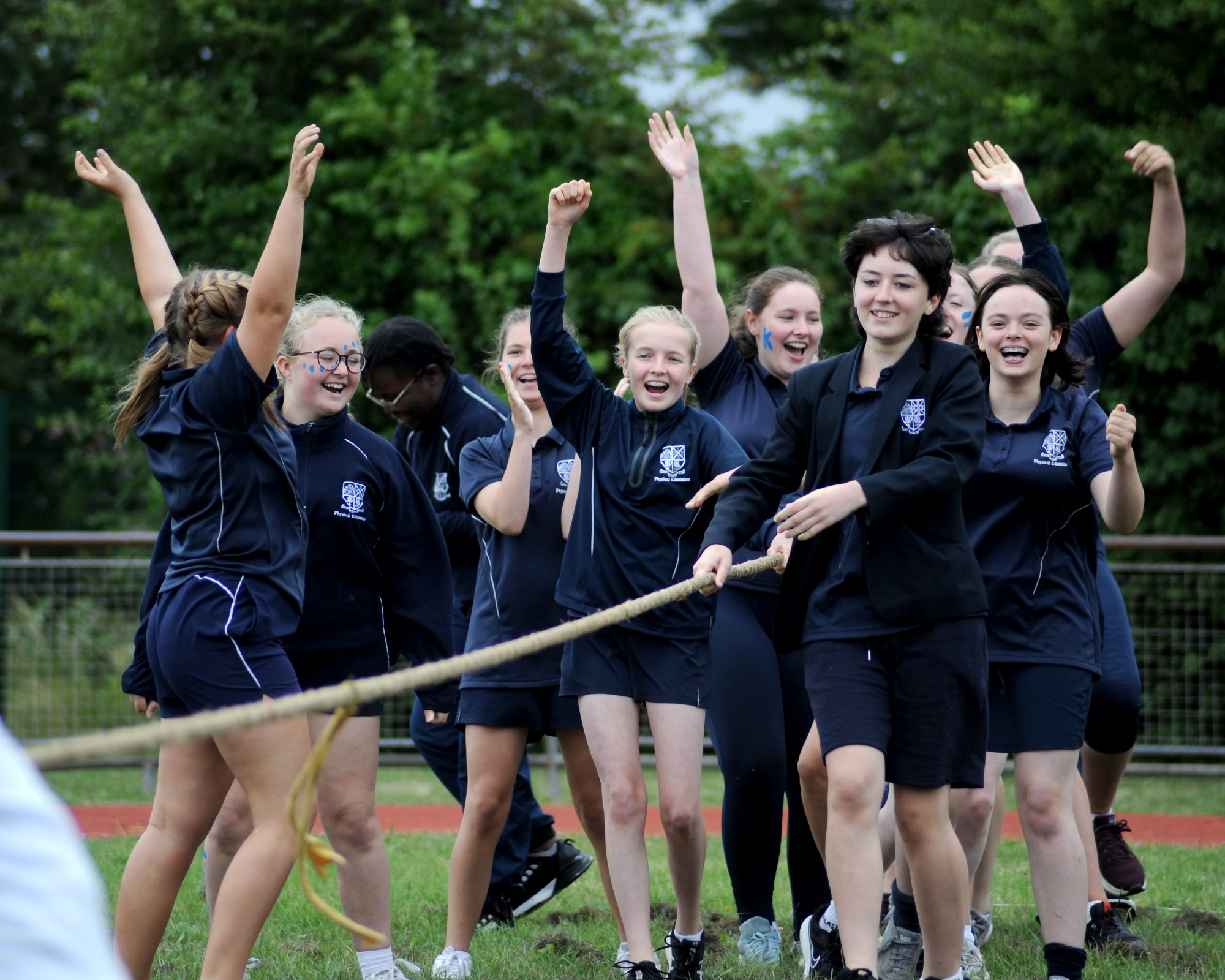
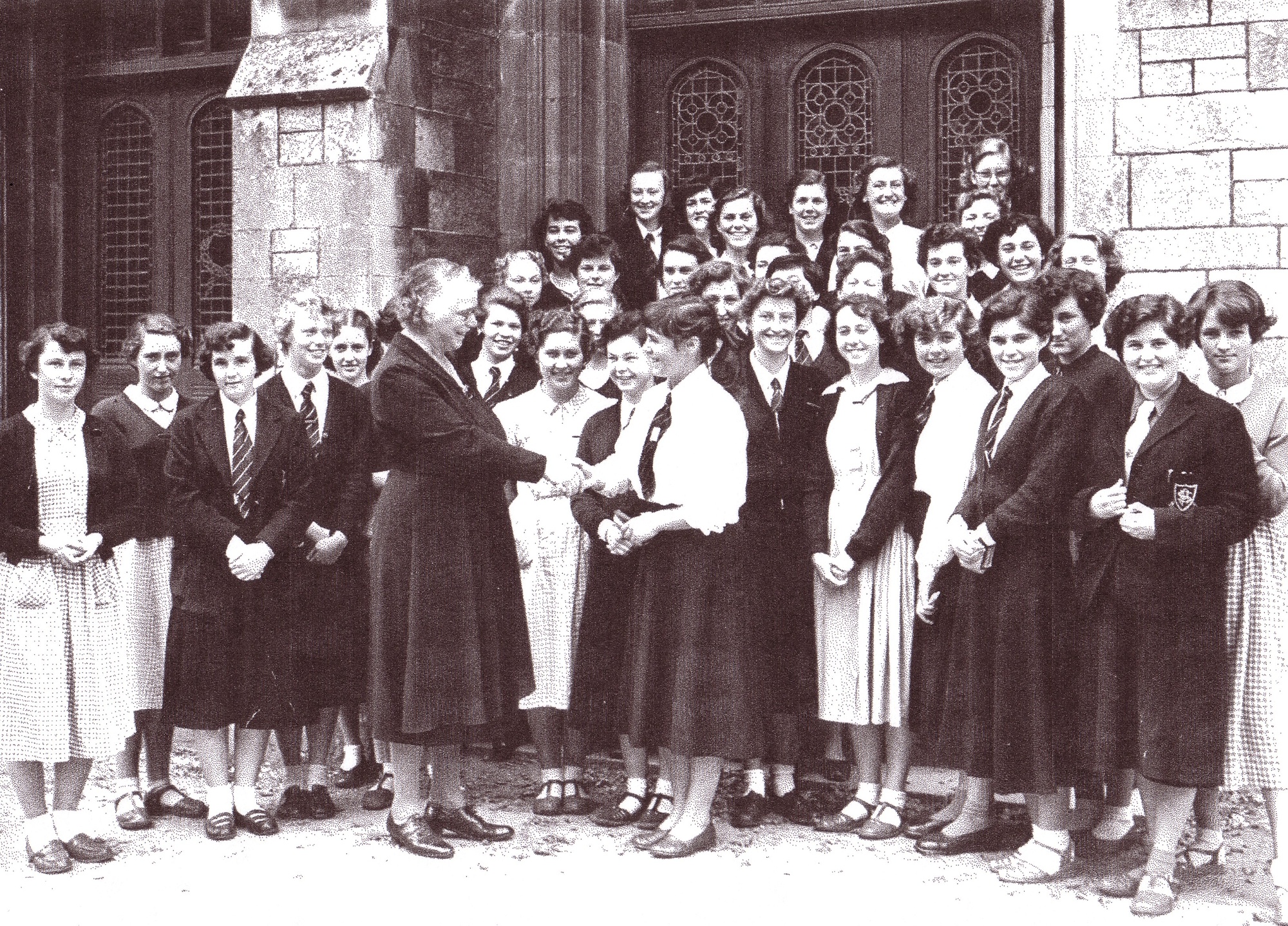
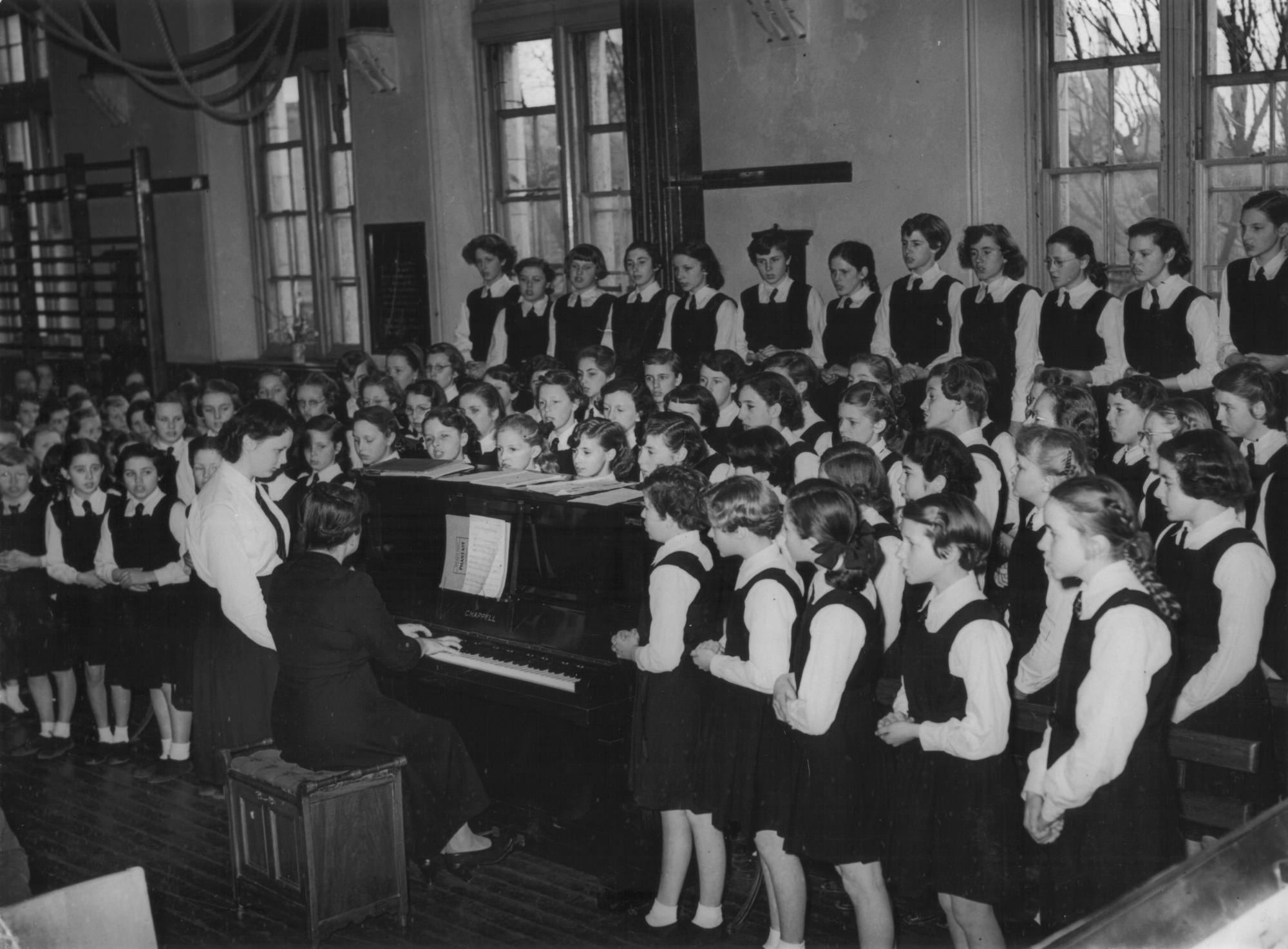
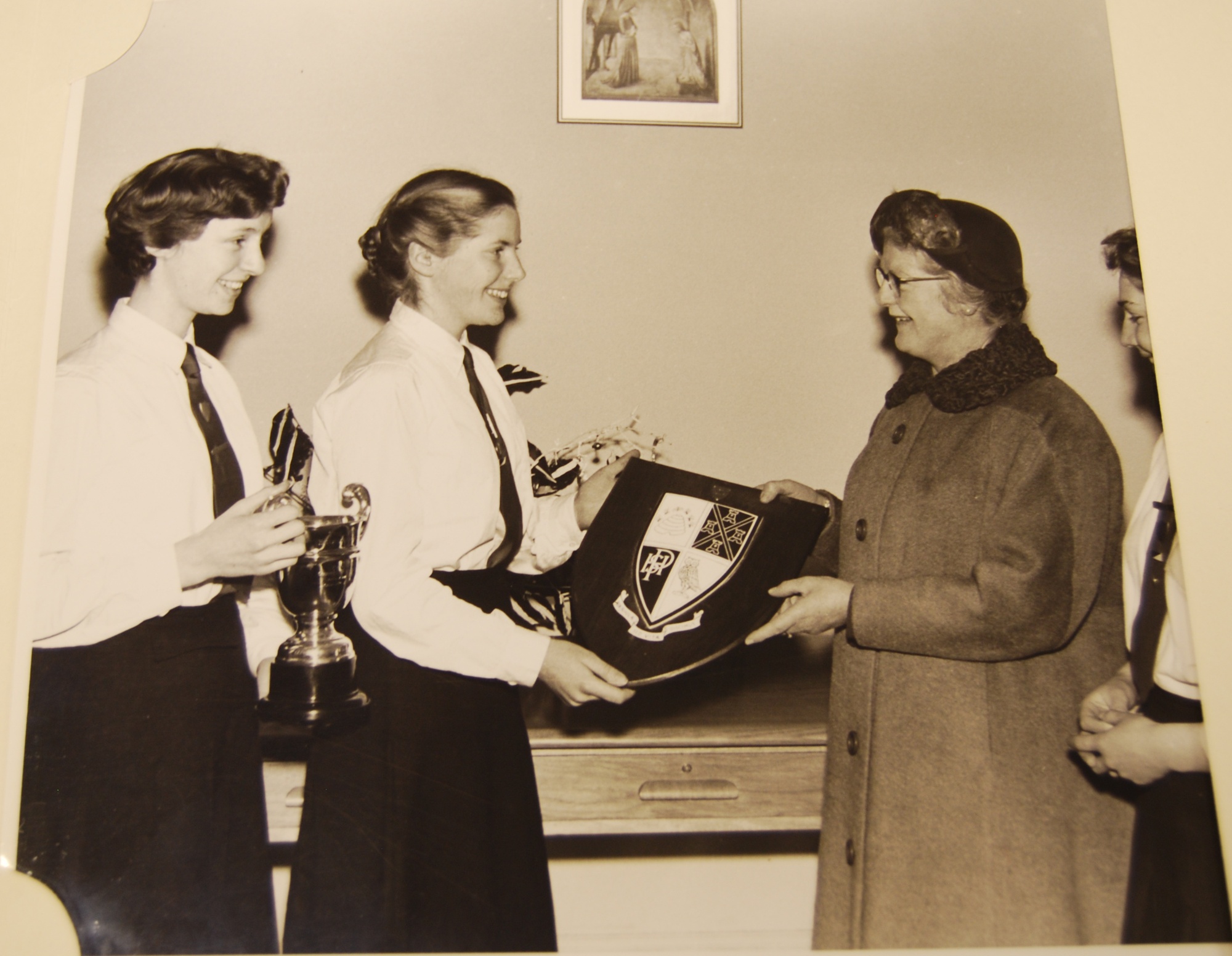
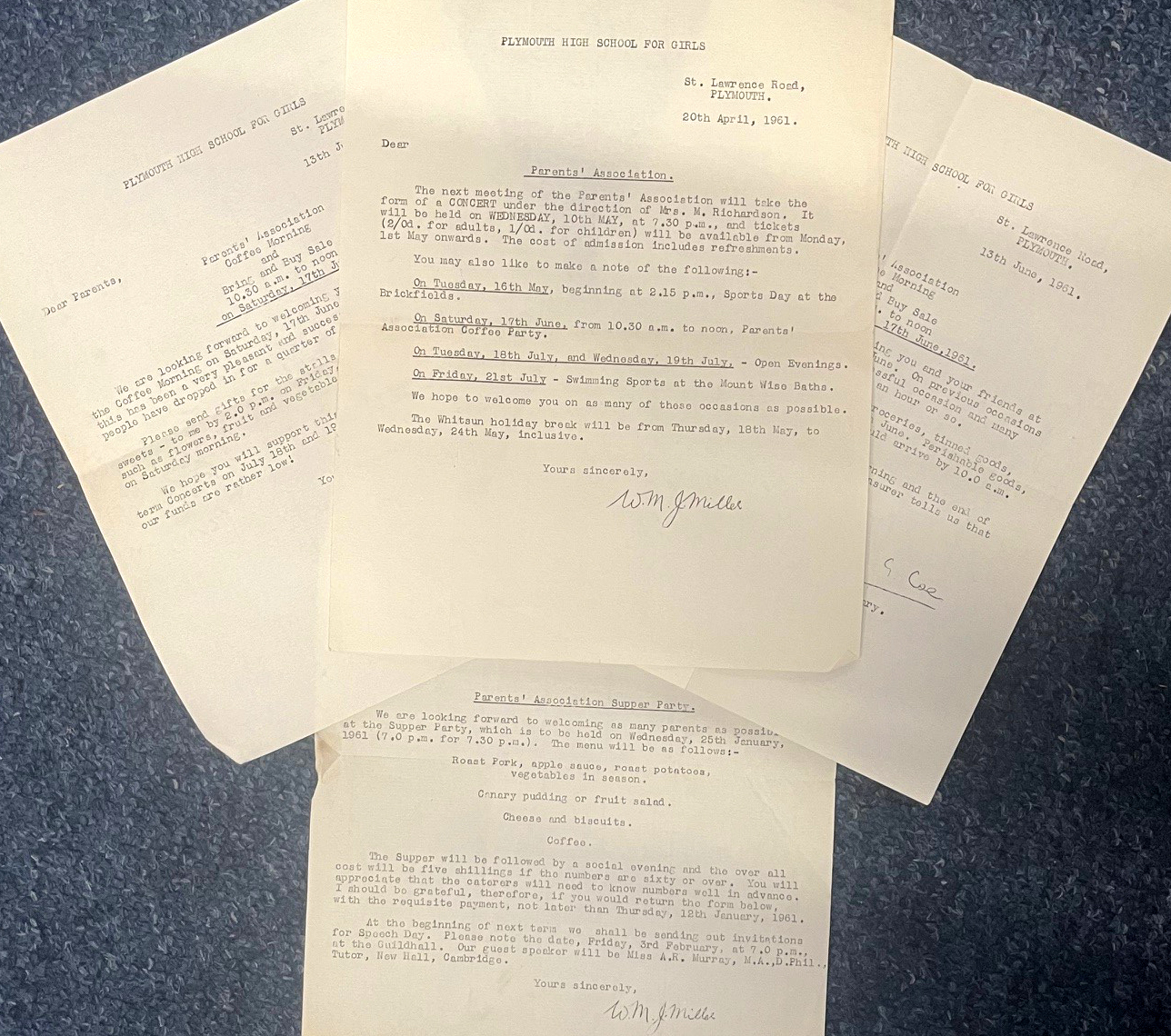
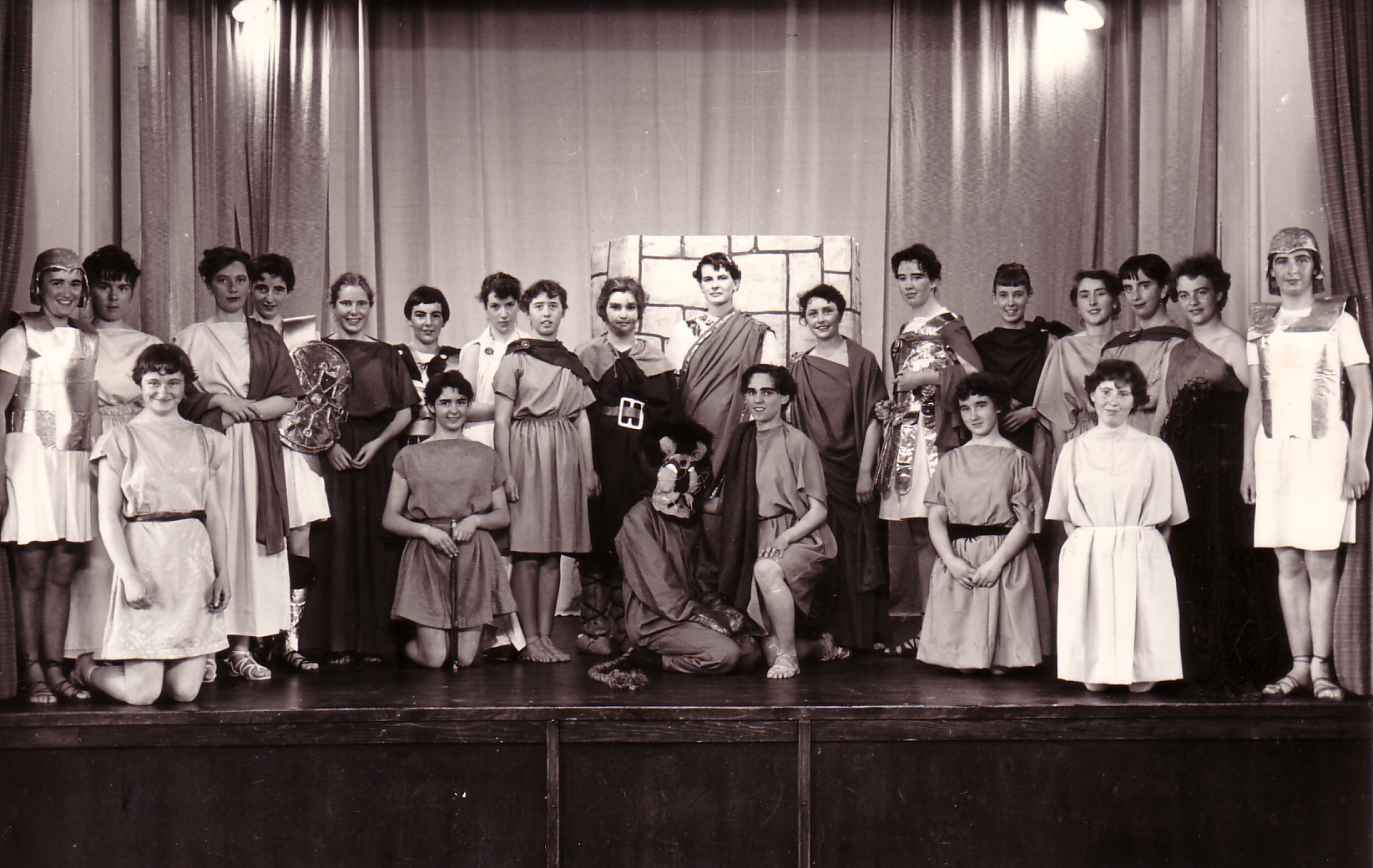
1960 - 1969
|
1961 |
During Miss Miller's address on her final Speech Day, she acknowledged that a bigger site was needed for the school. The visitor, Plymouth Education Authority, spoke in reply that they fully intended to build a new school. |
|
1962 |
Miss Margaret Brogden became the Headmistress. |
|
1962 |
Temple house captains made complaints that too many students were getting “order marks’’ or detentions which deduct points from those won at House competitions, and that behaviour must improve (nothing changes!), and a lack of enthusiasm and apathy, especially in year 4 (Y10). |
|
1962 |
The Institution for the Blind, which opened on the 2nd January 1860, moved to Stonehouse Street and the building became part of Plymouth High School for Girls, known as the ‘Annexe’. The music department was the first subject to move across in the first year, followed by Geography, Needlework and the Library over the next five years. This allowed for the main building's classrooms to cope with the expanding Sixth Form. |
|
1962 |
38 students took A-levels and 54 students took O-Levels. |
|
1962 |
The school was particularly proud to have put on an all female production of 'Julius Caesar'. |
|
1963 |
Temple house captains reported again and complained that they are the worst behaved House and have lost points, but they did win the Public Speaking competition and are top in the National Savings amount in pocket money saved by students. |
|
1963 |
The launch of the new Drama Festival. This allowed a wider genre of Drama to be celebrated, not just Shakespeare. |
|
1967 |
In Miss Brogden’s final Speech Day speech, she mused that, one day, a new building might contain a Physics room, a place for a gym and even a dining room. – PHS had to wait another 25 years for this dream to come true! |
|
1967 |
Miss Margaret Farra became the Headmistress. |
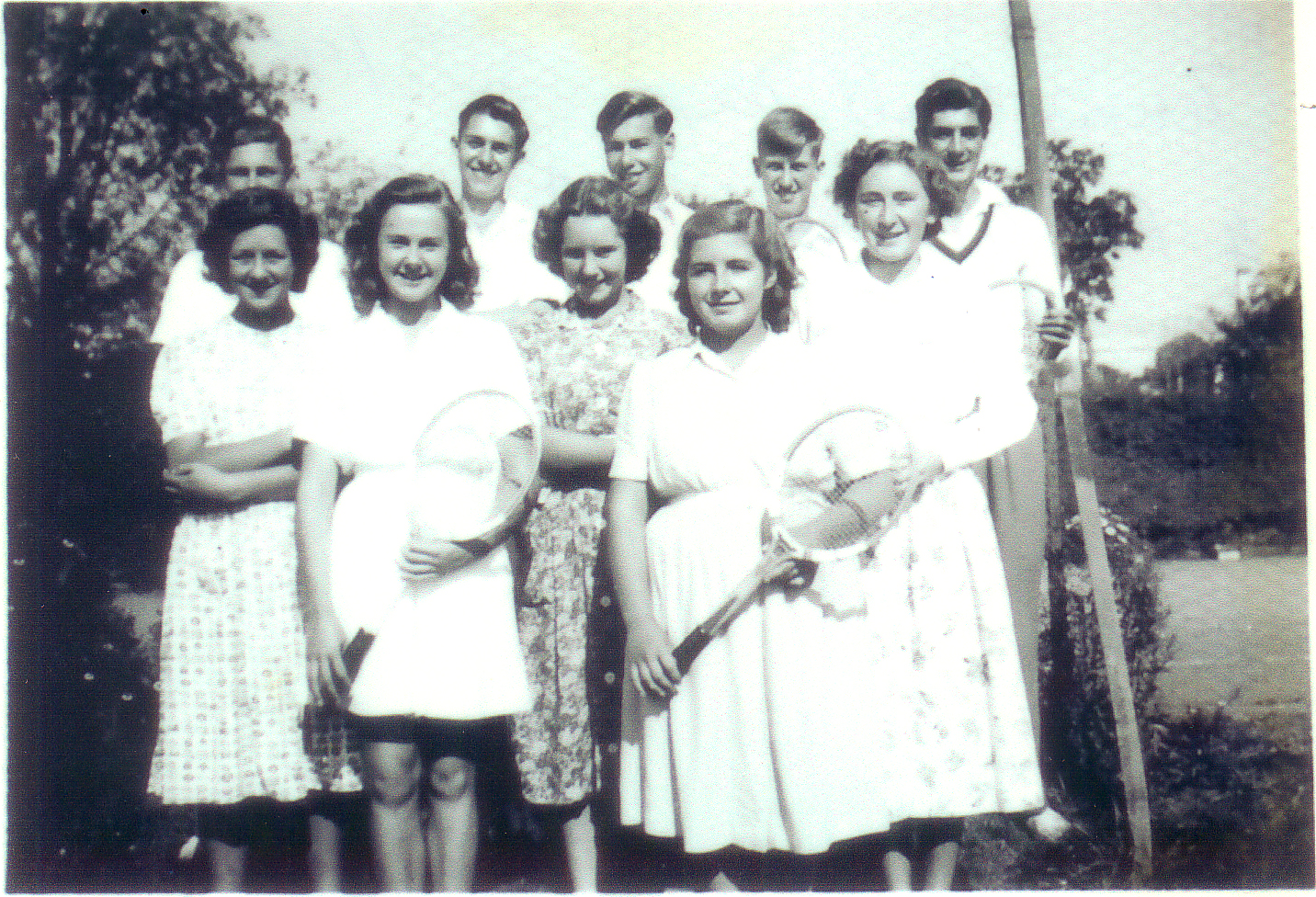
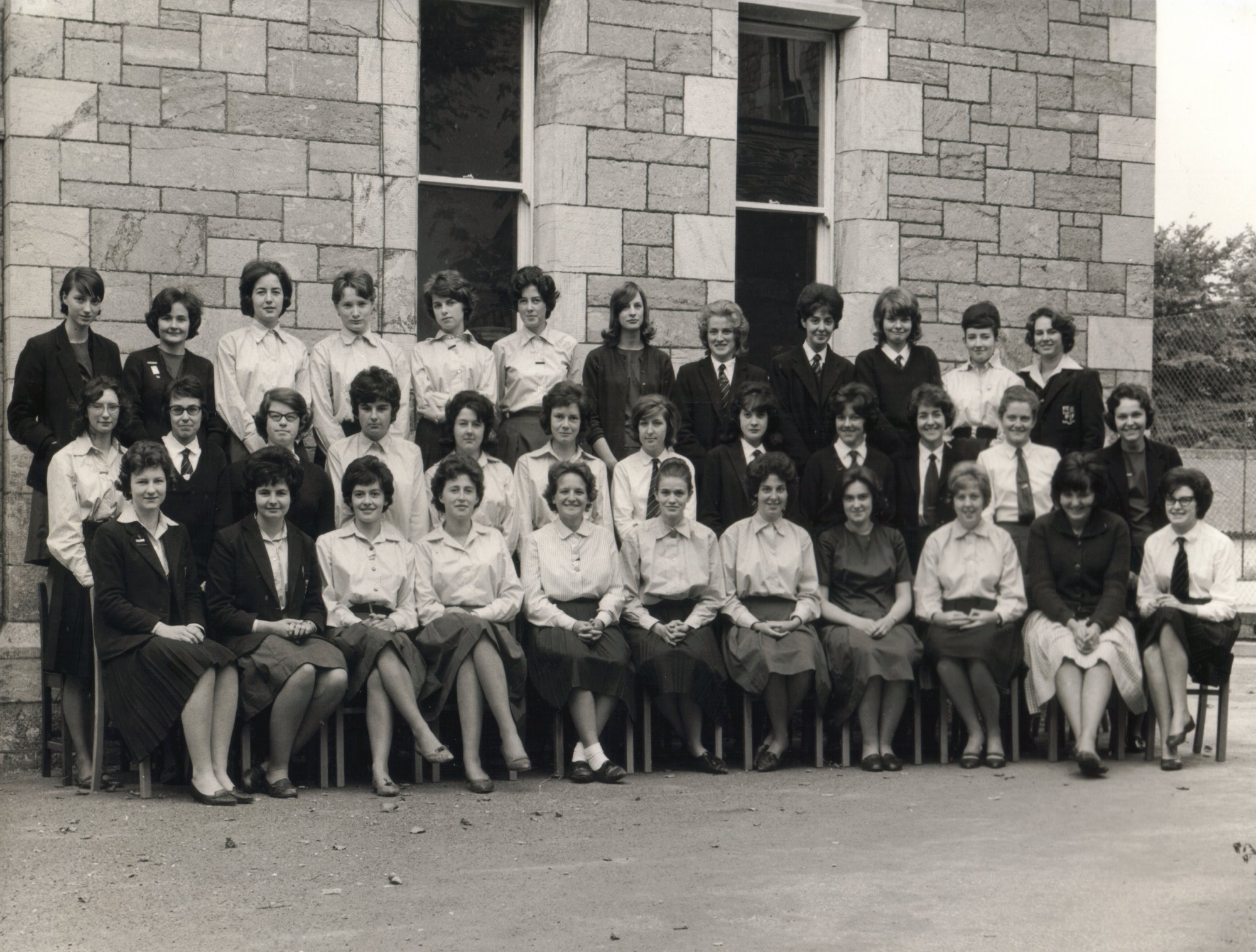
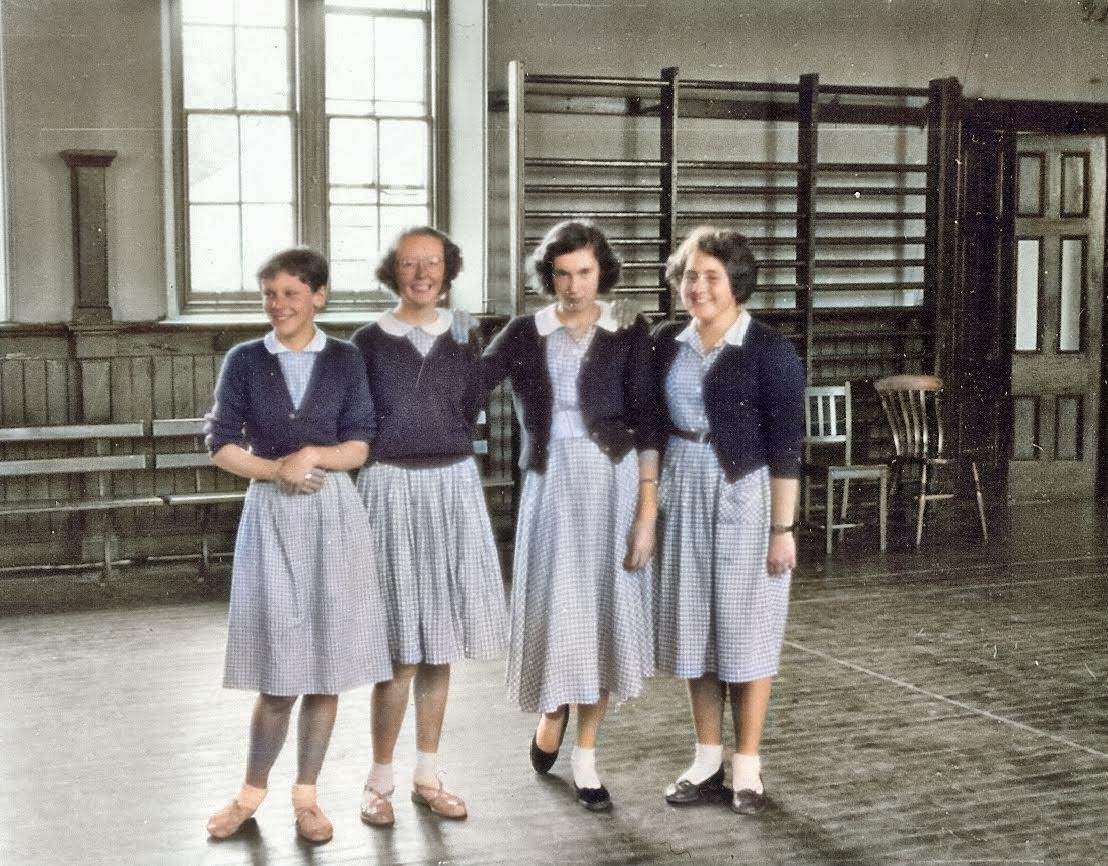
1970 - 1979
|
1970 |
A new ‘summer dress’ was added to the school uniform. |
|
1970 |
Extensive renovations took place to the buildings, including a new floor for the hall which was “flat, so PE no longer had to take place on a corrugated floor” and new stainless steel sinks in the Domestic Science room. |
|
1970 |
There was a great shock to the school as, overnight, vandals broke in and caused such damage and devastation that girls had to spend much of the day helping clear up the mess. |
|
1971 |
The school was suffering serious financial problems and the school magazine had to be cut in size. |
|
1972 |
Seven magnificent trees were cut down in the grounds and a redundant barn taken down to form three tennis courts. |
|
1972 |
The first student School Council was formed. As a result of the student voice, hats were removed from the school uniform and a different uniform for the sixth form was introduced. |
|
1973 |
Miss Muriel Newman became the Headmistress. |
|
1973 |
The Fuel Crisis swept across the nation. As per many schools at the time, Plymouth High reduced their school days from five days per week to three, as enforced by the government under the measures of the Fuel and Electricity Control Act 1973. Blackouts in the evenings meant students completed their homework in candlelight and students could wear tee-shirts under their blouses and coats in classrooms due to the lack of heating. |
|
1974 |
On the 17th April 1974, the school became under the control of Devon County Education Authority. |
|
1974 |
Plymouth High School for Girls celebrated their centenary birthday, with 400 students on roll. The school was a two-form entry at this time. The Centenary celebration started with a Founders Day Service, held at St Andrews Church where the school choir performed and the head girl and the Headmistress gave a reading. This was followed by an open afternoon at the school where ex-students and staff attended a coffee evening and concert to reminisce about their time at Plymouth High. There was a centenary dinner at the Holiday Inn and the Centenary Speech Day was attended by the Lord Mayor of Plymouth. Students and staff were presented with a gold commemorative booklet outlining the history of the school. |
|
1975 |
With the country’s economy in turmoil, the school was forced to undertake staff redundancies for the first time. The Headteacher's letter talks of the “drastic economies the school had to take” – cuts in textbooks, stationery, cutting hours of part time staff, and removing Speech Day from the annual events calendar. The PTA helped where it could with raising school funds and bought curtains for the stage. |
|
1976 |
A flu epidemic in the spring term almost closed the school as absences were so high. This was part of a national epidemic that swept the country. There were 388 students on roll. |
|
1976 |
Frances Scott Key High School, Westminster, Maryland, USA became a PHS English Speaking Union link school. This year, American girls visited PHS and, during the 1970s, PHS girls visited the American school in alternate years. |
|
1977 |
In 1977, the PHSG students performed in a production called ‘Intermezzo’. On the second night, the school suffered a power cut. The play continued with the lighting being supplied via torches, car batteries, and candles (provided by members of the Science department). |
|
1977 |
The governors and Area Education office met and agreed to convert the ballroom of the Blind Institute Annexe into a games room for the school. This now meant that the whole of the Annexe became the possession of PHS. Only the lock up shop (now where the library is) remained outside the school's possession. There are 392 students on roll. |
|
1978 |
In 1978, PHSG had a school cat called ‘Poeffje’. He freely roamed the school grounds and slept in the Headmistress' office. |
|
1978 |
On 20th February, the city found itself in deep snow. The school oil almost ran out by the end of the day. The next day (21st), the school only had enough fuel to heat the New Wing and some of Annexe so only 5th and 6th form (Y 11-13) could come into school. |
|
1979 |
Following the Miners Strikes, the school faced problems with fuelling and heating the school once again. On the 9th January, the school opened after the Christmas break with only 5th and 6th forms (Y11-13) to save fuel (OPEC raised prices internationally overnight). The rest of school started term on 20th January. On the 16th February, the school closed again as all the pipes froze. The bad weather continued until March, stopping all sports competitions. The school adapted where it could, with students wearing hats and gloves to class. However, with no fuel deliveries, this Winter saw the school shut on particularly cold days. |
|
1979 |
With the school continuing to expand, new classrooms were being made out of the derelict space in the Annexe, funded by the PTA & heaters bought for the rooms. |
|
1979 |
The first joint school play was performed between PHS with boys from Devonport and Plymouth College, “The Beggars Opera”. This was followed later in the year by a DHSB production of 'Smike' with PHS girls in their cast. |
|
1979 |
In May, a PHS team reached the finals of the English Speaking Union Public Speaking competition and went to the American Embassy in London to perform. |
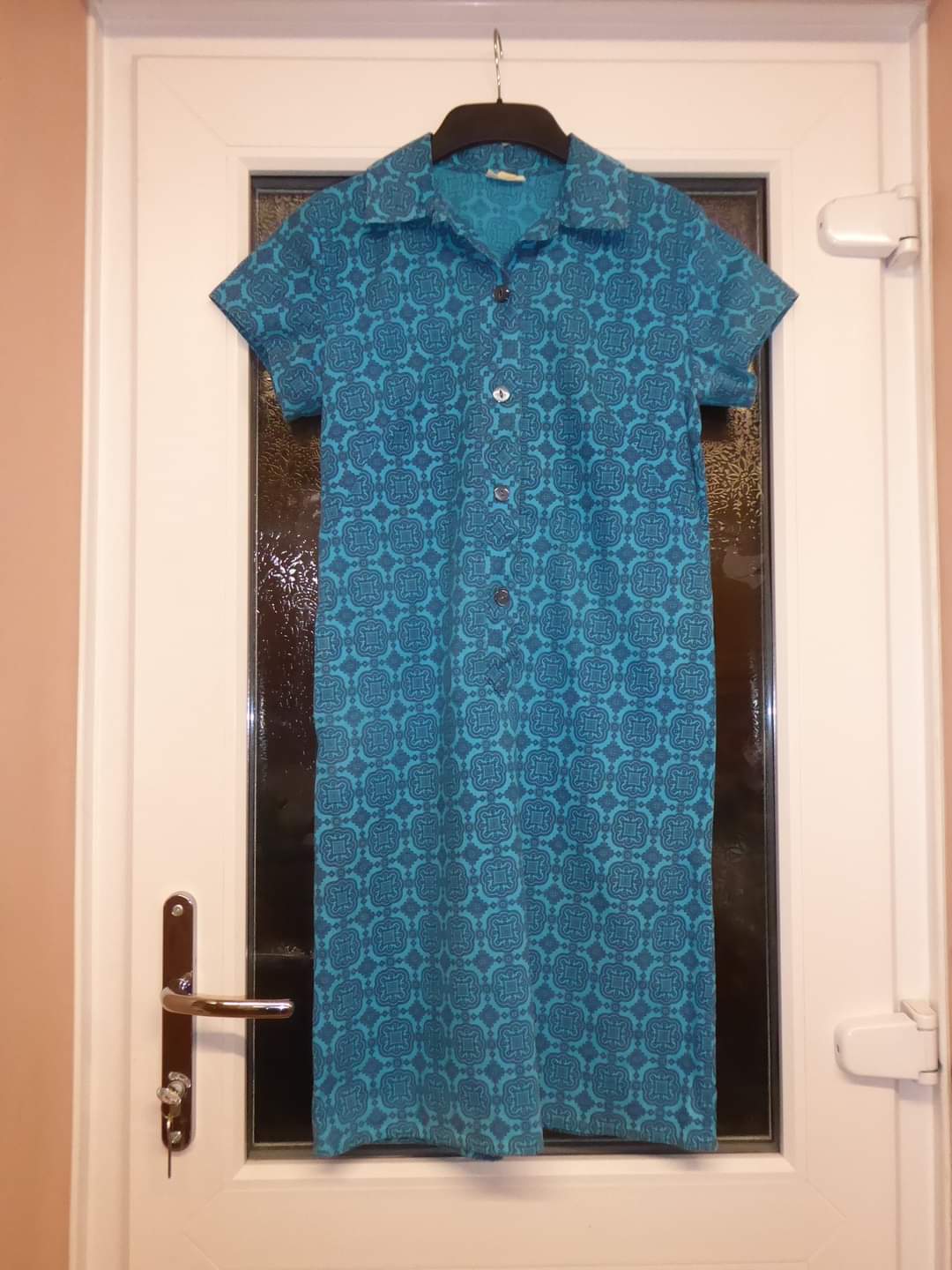
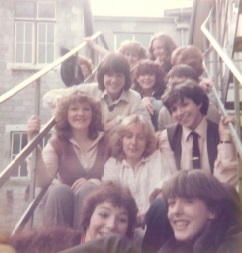
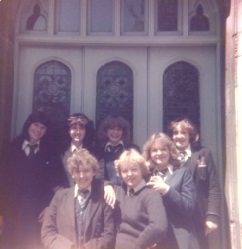
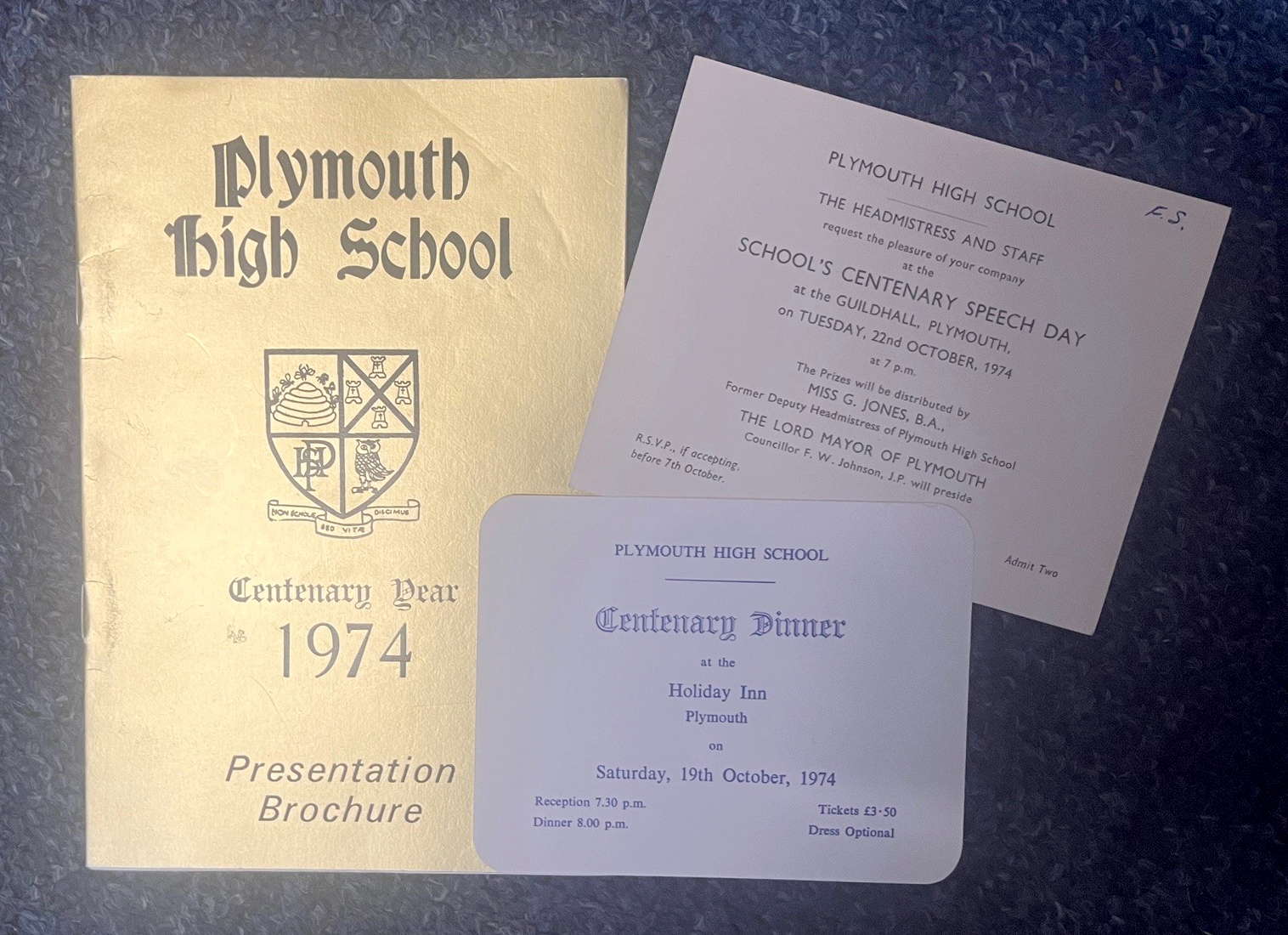
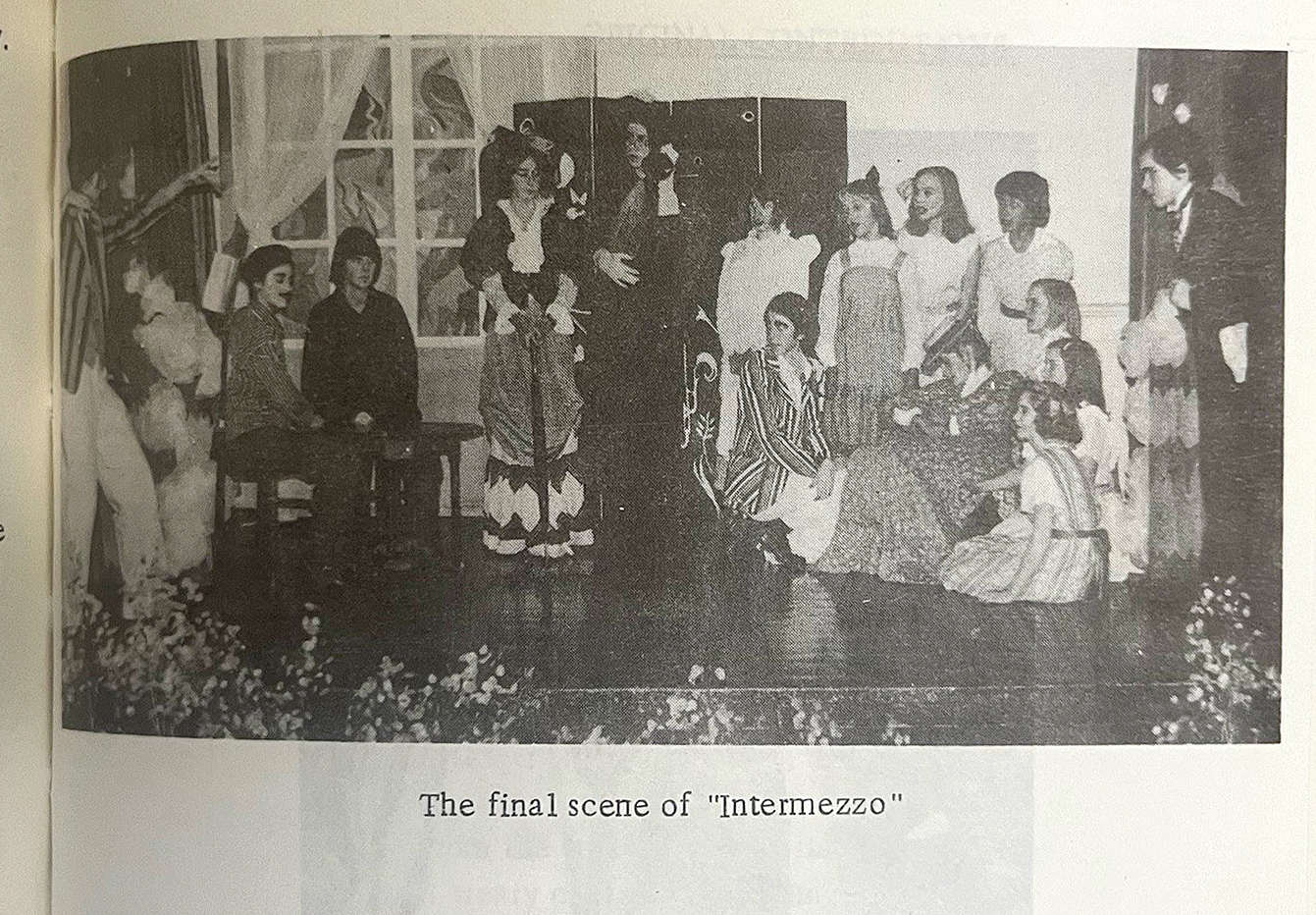
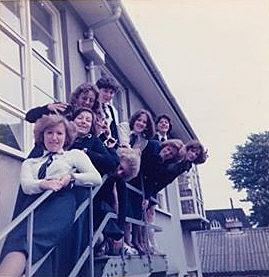
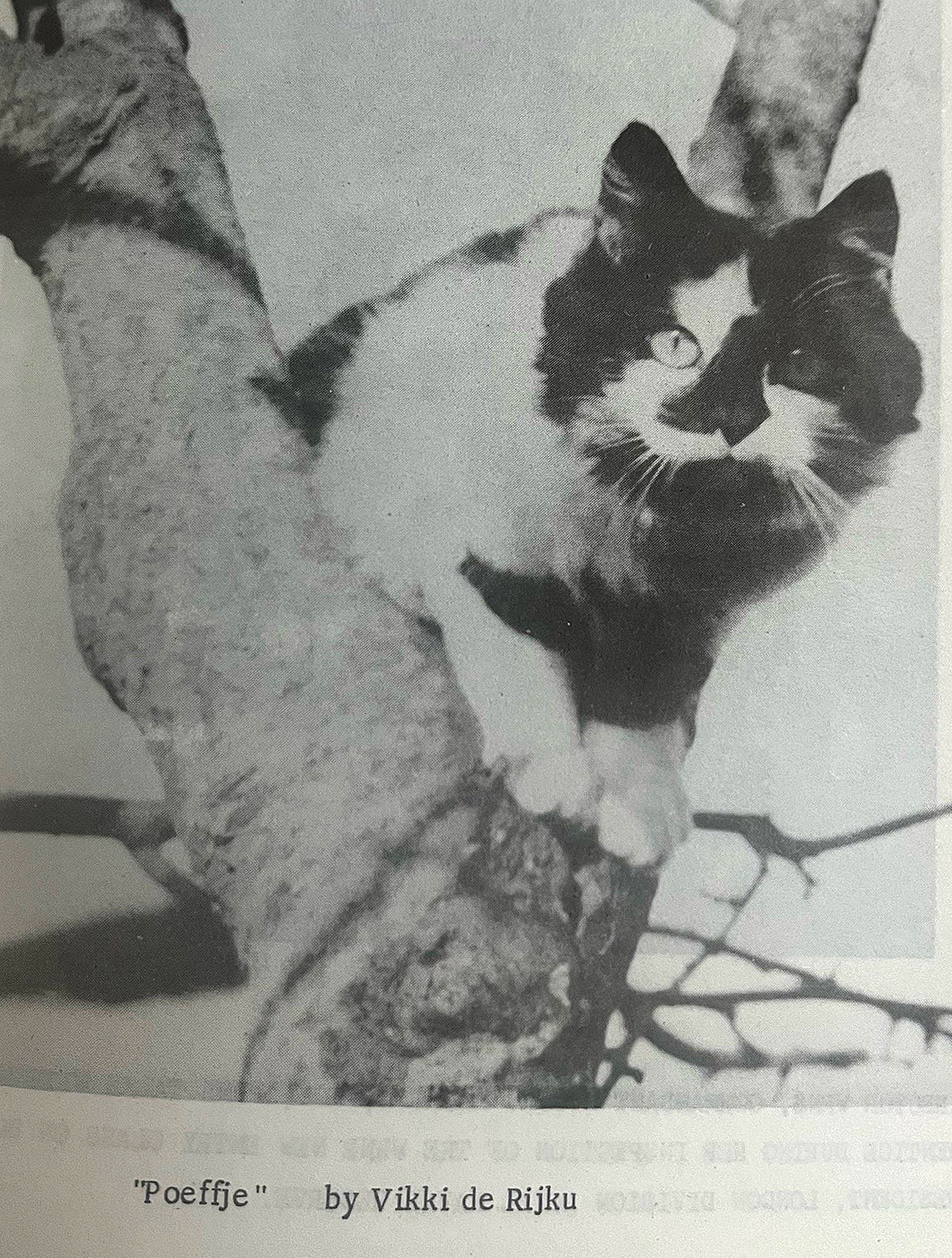
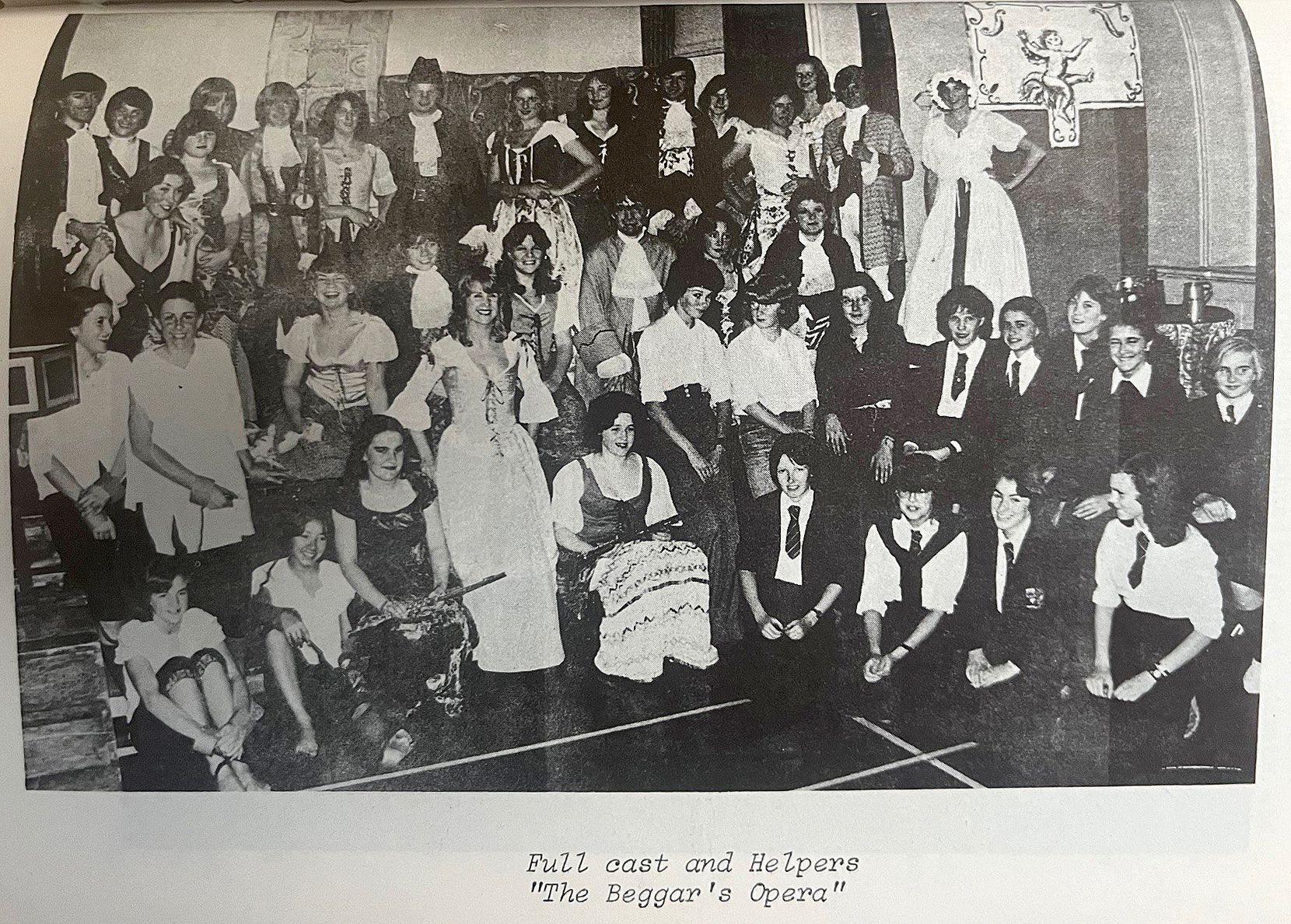
1980 - 1989
|
1980 |
The PTFA raised funds to buy the school’s first colour television set and video cassette recorder. |
|
1982 |
A turnover of staff saw a quarter of the workforce change. The Headteacher referred to the stresses felt by many students as their parents were involved in the Falklands War. |
|
1982 |
Sadly, the electrical rewiring of the school had not been completed. Problems with the old building endured. |
|
1982 |
The PTA bought a camera for the school to record events and a second video cassette player for school (showing how rare these items were at the time and what little money the school had). |
|
1982 |
The student council saw complaints from the girls about the “garish yellow paint in the front hall, main corridor, and Room 12” so they would be repainted. |
|
1983 |
The front hall, classrooms along the corridor (then called rooms 10,12,17,18) as well as rooms 2 and 3 were decorated and the floors had new linoleum floors, while that of the hallways was sanded and sealed. All seemed much brighter so we presume it was no longer the “garish yellow” as complained about in the last magazine of 1982. |
|
1983 |
The gardening club produced window boxes for the Annexe classrooms. |
|
1983 |
The Plymouth Parent Teacher Association committee passed a resolution to campaign for comprehensive education across the city. The PHSG PTFA withdrew their membership and created a newly-formed PTA to include schools wishing to preserve the option for selective education. The following years saw protests and petitions from parents across the city against the proposed closure of Grammar schools in the county. An action group was then formed at the public meeting held on the 31st May 1986, where a debate was held with the Deputy Chairman of the Education Committee and the Area Education Officer. |
|
1984 |
The first student magazine was published. It was called ‘and then there were two’. This magazine became a supplement to the main annual school magazine, which focused on summarising and reporting on the year that had taken place. The student magazine published articles for entertainment, stories, puzzles, recipes, anything and anything that students enjoyed reading. The first editors were Rosemary Pearce, Karen Hambly and Nicola Davis. Its success entirely depended on the ideas and contributions of students. Sadly, the initial effort of this student magazine diminished after only two editions. The student magazine made a come back in the 2000’s under Miss Utton (Headteacher) and was known as TALK (initials of each House) and went from strength to strength over the decades, not only showcasing talented student designs and creativeness, but also tackling current affairs and social debates. It changed its name to ‘PHySoG’ in the noughties and then, most recently, ‘Hear Me Out’. The privilege of being the editor of the student magazine now falls to a member of the Head Student Team. |
|
1984 |
Discussions were undertaken with the county regarding the restructuring of secondary education in Plymouth. For PHS, there was a suggestion that the school would move to the premises currently occupied by Burleigh School (now Burleigh Manor Estate). The Minister for Education in Government would need to agree the proposal. However, the decision was made that, regardless of the outcome, PHSG would remain a selective girl’s school and not be affected by comprehensivisation. |
|
1984 |
The school bought its first computer. The school committee took out an interest free loan of £1,200 from the Local Authority to pay for the equipment, which was paid back within three years. The PTFA contributed half of the funds. The first computer was a BBC Model B computer with peripherals. A printer was bought the following year by funds also raised by the school PTFA. |
|
1984 |
PHS saw an influx of new sixth formers from closing Plymouth schools who joined, so a new sixth form common room was created out of empty basement space (now the support unit AO1). |
|
1984 |
There was very little music activity that took place due to the teachers' strikes in the second half of the academic year. New fire regulations also meant the school play had to be performed at the College of Art and Design. The play was 'A Christmas Carol' and the programme cover was designed by Rebecca Lenkiewicz, daughter of the famous artist. |
|
1986 |
Parliament abolished corporate punishment in state schools. Despite being a standard punishment across many schools of the time, corporate punishment was never implemented at Plymouth High and was prohibited as a method of discipline. |
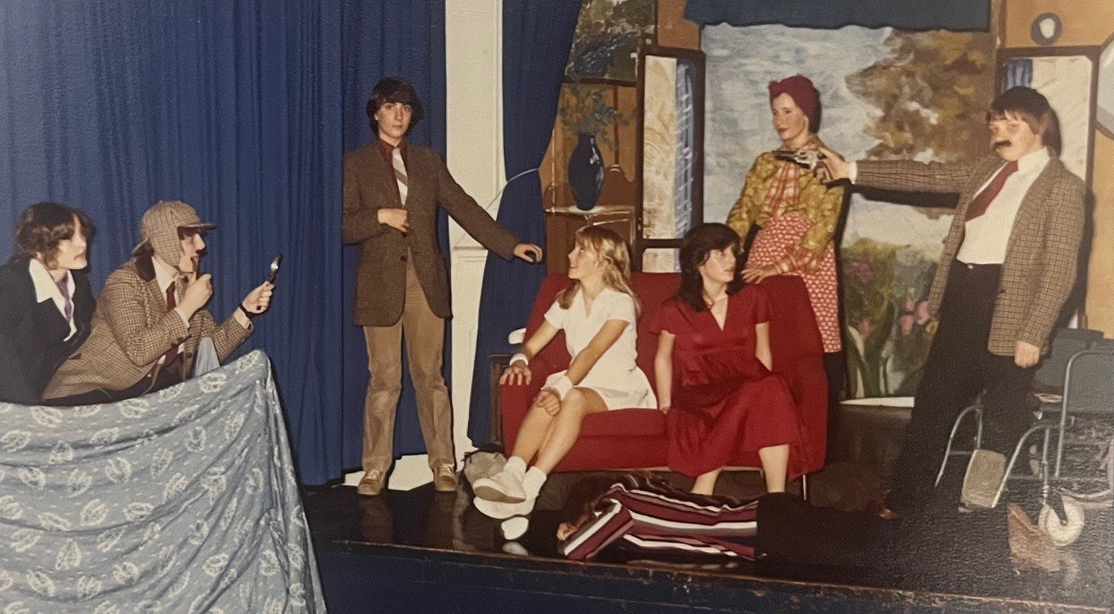
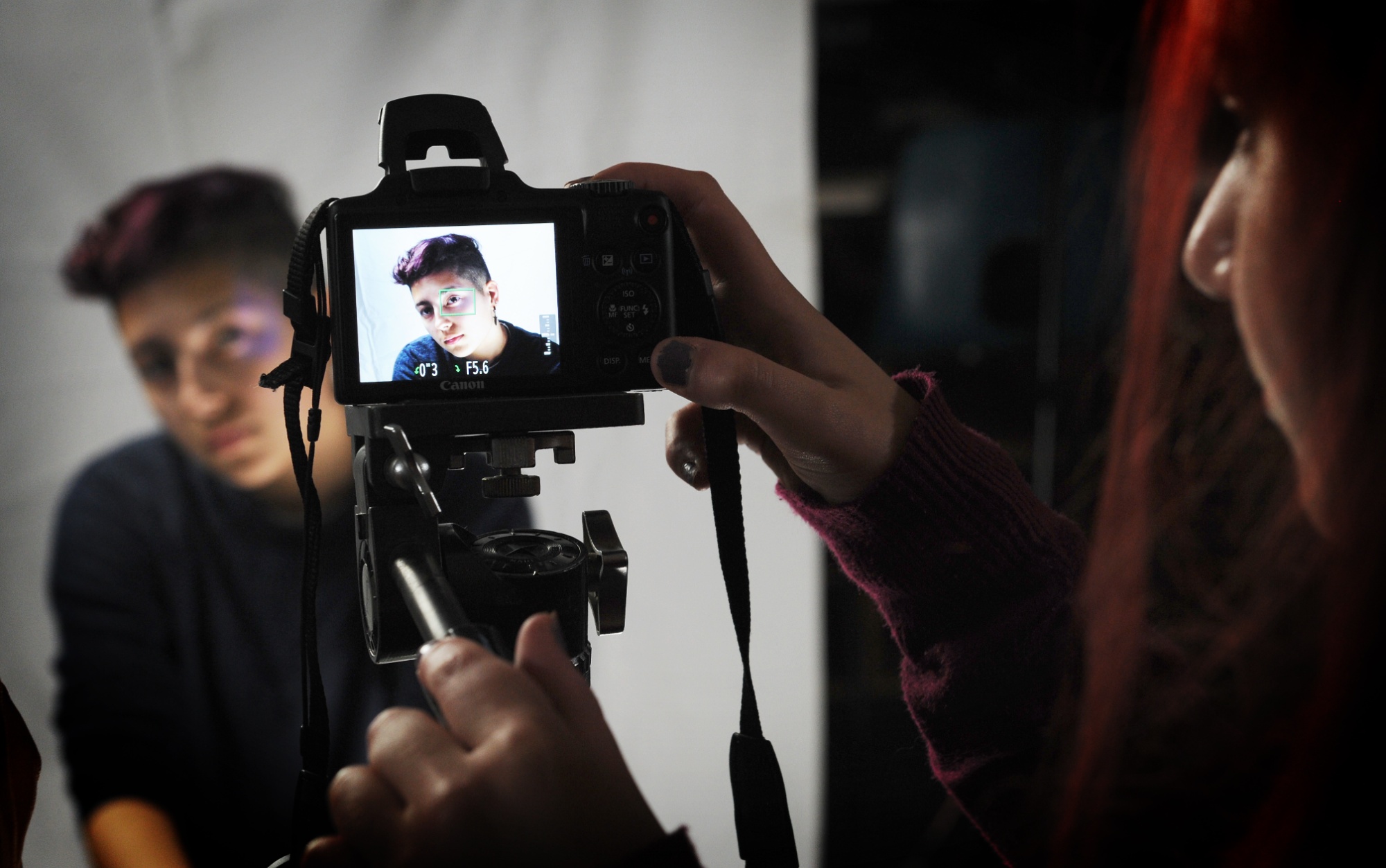
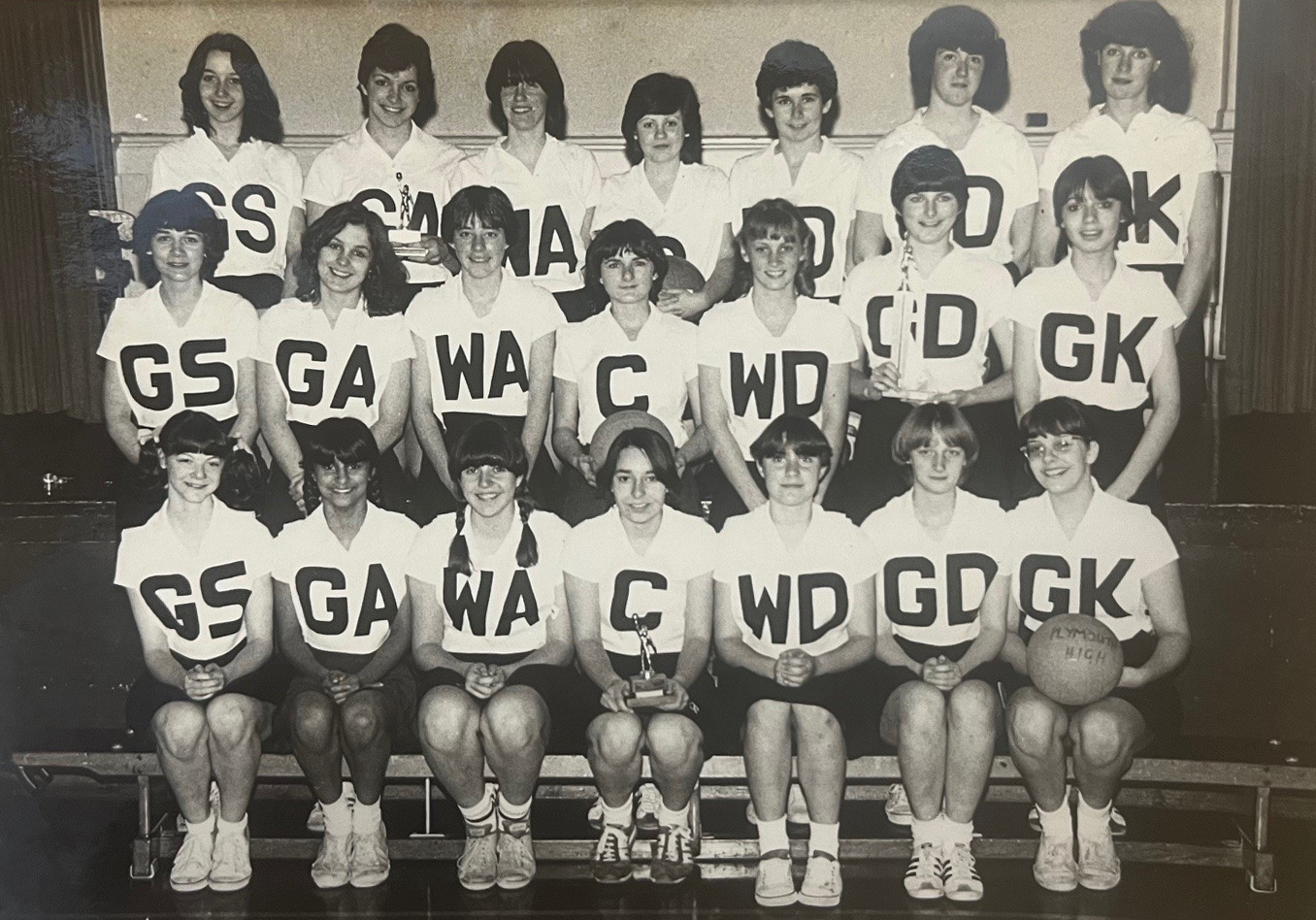
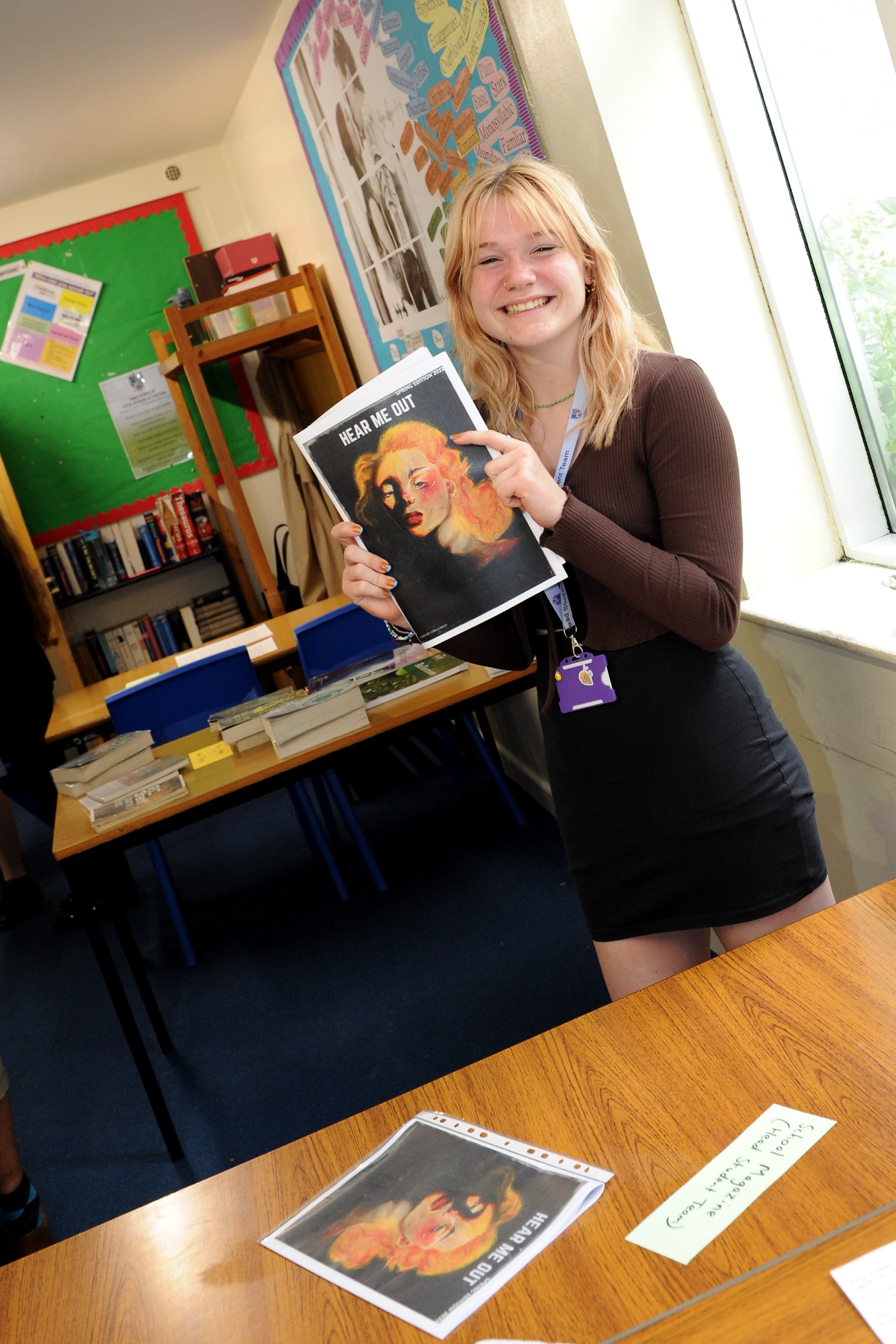
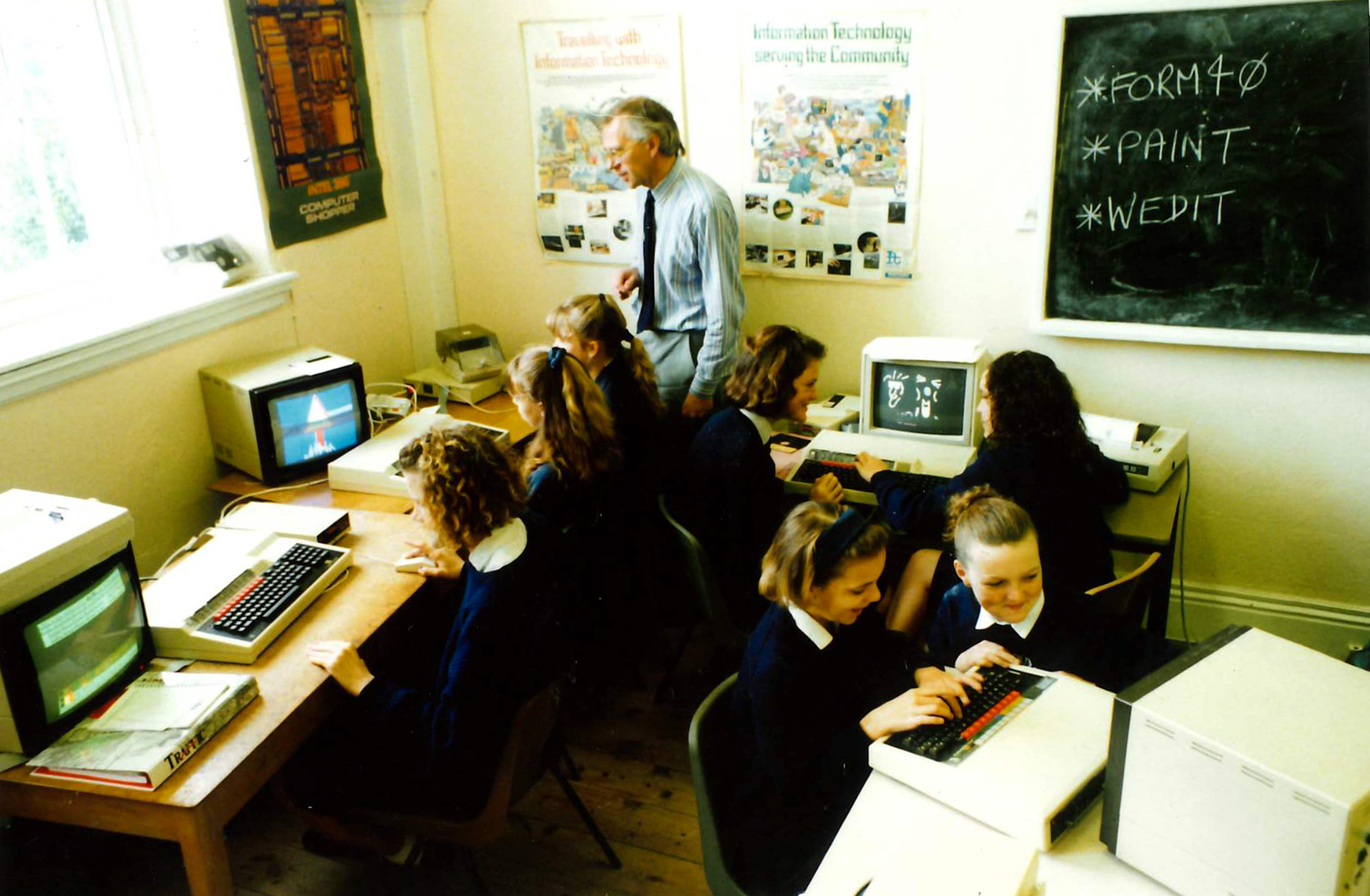

1990 - 1999
|
1990 |
The school became a three form entry with 380 students on roll. The school was outgrowing the accommodation and plans were implemented to move the school site to Paradise Road, into the Old Tamar High School, which closed in July 1990. Devon County Council approved the move for September 1994 but this was dependent on the council finding the funds for the refurbishment and extensions needed on the new site that had not been costed. |
|
1991 |
Mrs Rosemary Stoggall became the Headmistress. The first married Headteacher of the school. She went on to become the first Headteacher in the country to refuse to hold English tests for 14 year olds, ordered by the Government. In an interview with the local newspaper, The Evening Herald in 1998, Miss Stoggall said ‘Occasionally, the law can be an ass. I believe I was absolutely right and that tests were not right for young people at that time. It was not a matter of defiance, but as professional competence. The education of children are the most important thing and the tests had not been properly tried out.’ Thankfully, Mrs Stoggall did not eventually have to defy the law as changes were made to the test and the row was defused in 1993. |
|
1991 |
New controversial plans were drawn up which meant sharing the Paradise Road site with Devonport High School for Boys, who had overspilled and started using most of the buildings. Although the schools would retain their individuality, the buildings and common spaces would be shared, including the Sixth Form and the Library. The PHSG Governors and new Headmistress gave support for new funding and a three year building plan to retain the school's independence on the present site of St Lawrence Road. A grant for a £1.4 million expansion was authorised for a two storey wing, three further laboratories, a new Main Hall (Newman Hall), new canteen, a new library with computer suite, Drama and sixth form rooms. |
|
1992 |
In 1992, PHSG was still a 3 form entry, with only approximately 430 students on roll. |
|
1994 |
The opening of the new wing: Newman Hall and three Science rooms above, also included the new canteen and lift. The building was constructed by Alfred McAlpine Construction Ltd and named after the previous Headmistress, Miss Newman. The ceremony took place on the school’s 120th anniversary and the building was opened by Devon County Council Chairman Doug Lentell and Miss Newman herself. |
|
1995 |
560 students on roll. |
|
April 1997 |
635 students on roll. |
|
1997 |
Plymouth High became a Technology College, securing funding under the Government led ‘Specialist School Scheme’. |
|
1997 |
The ‘Metcalfe’ Building was erected next to the Annexe. It was named after Mrs Metcalfe, who was the hon. secretary of the Plymouth branch of the National Union for Improving the Education of Women. The scheme for establishing a school, such as Plymouth High School for Girls, was first suggested by Mrs Metcalfe, and she was elected to sit on the first school council in March 1874. |
|
1999 |
Mrs Sue Martin became the Headmistress. Mrs Martin was born in the Duchy and went to school in Falmouth. As the Deputy Head of Penair School in Truro, she spent two years seconded to the Curriculum Development Unit in Cornwall before undertaking her headship at Plymouth High. A keen reader, her favourite subject was English and she taught Drama and English Literaure at A-Level. |
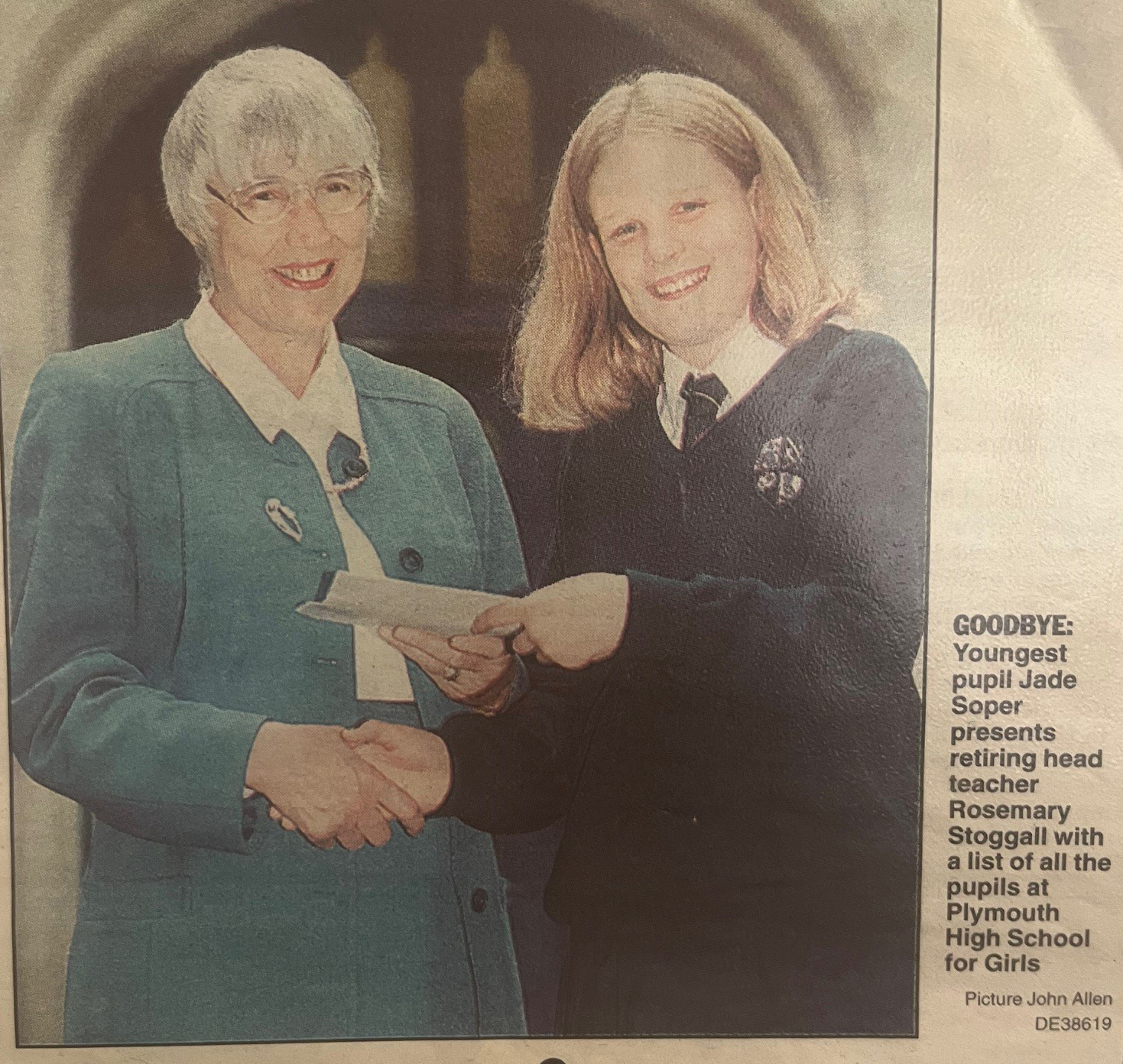
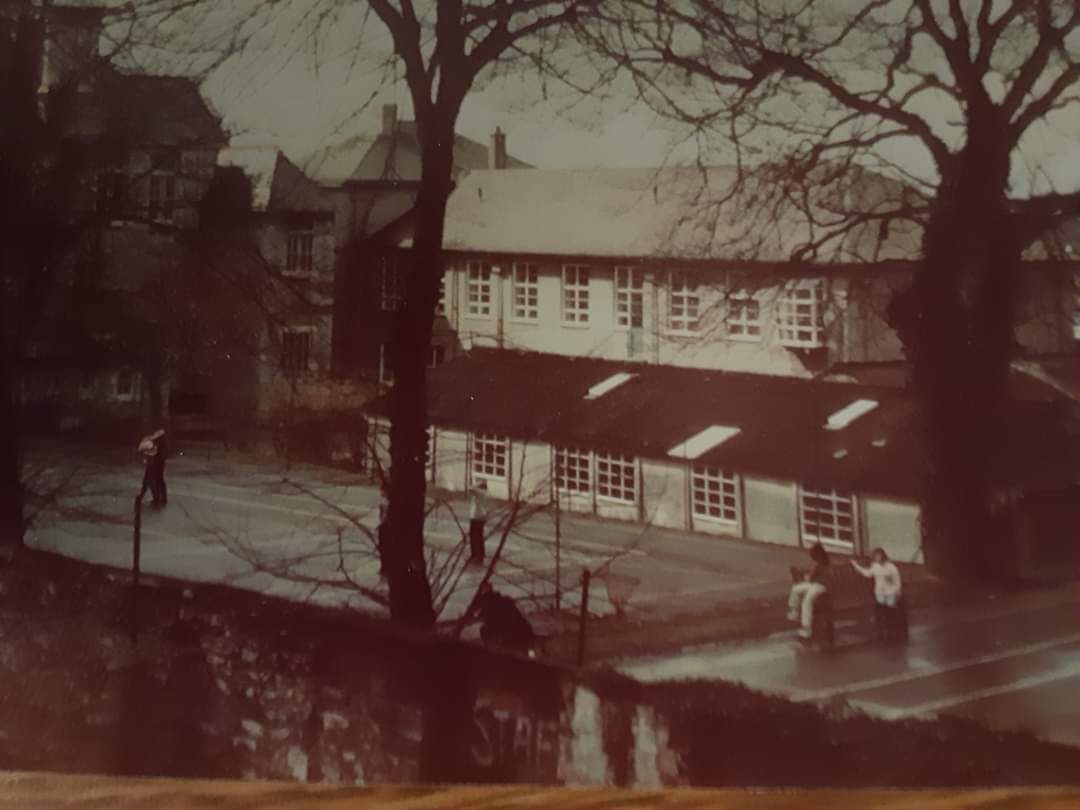
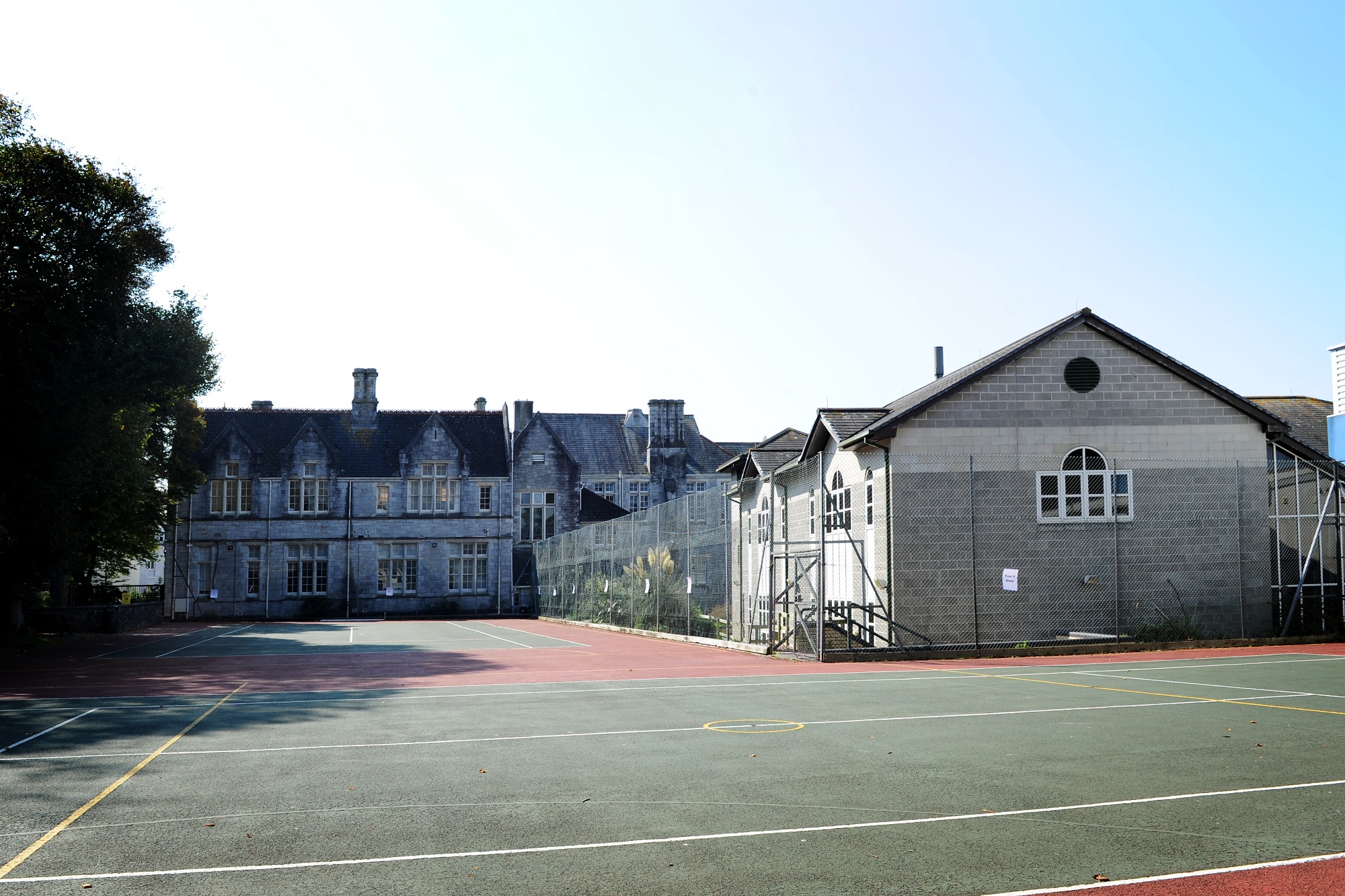
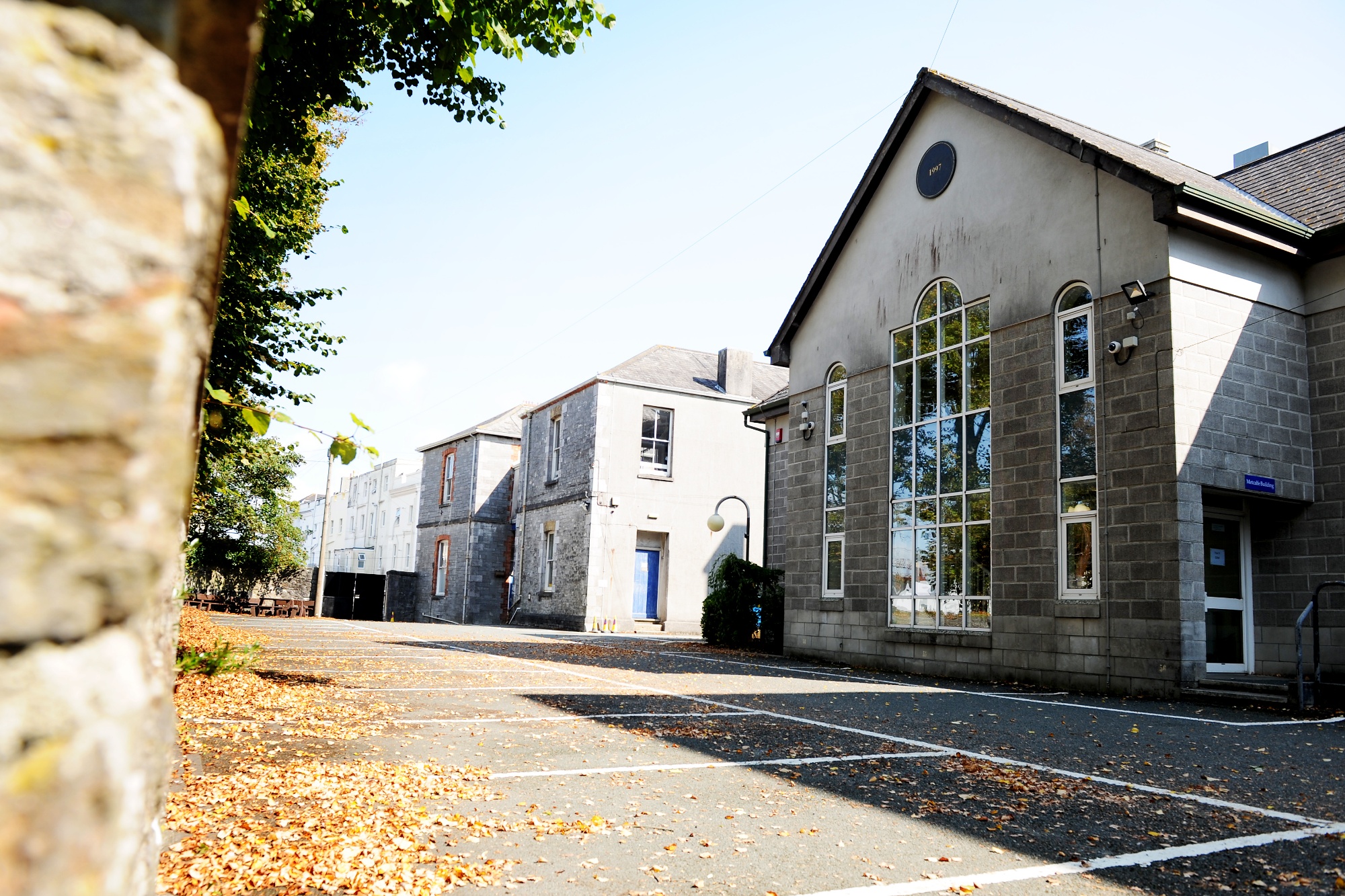
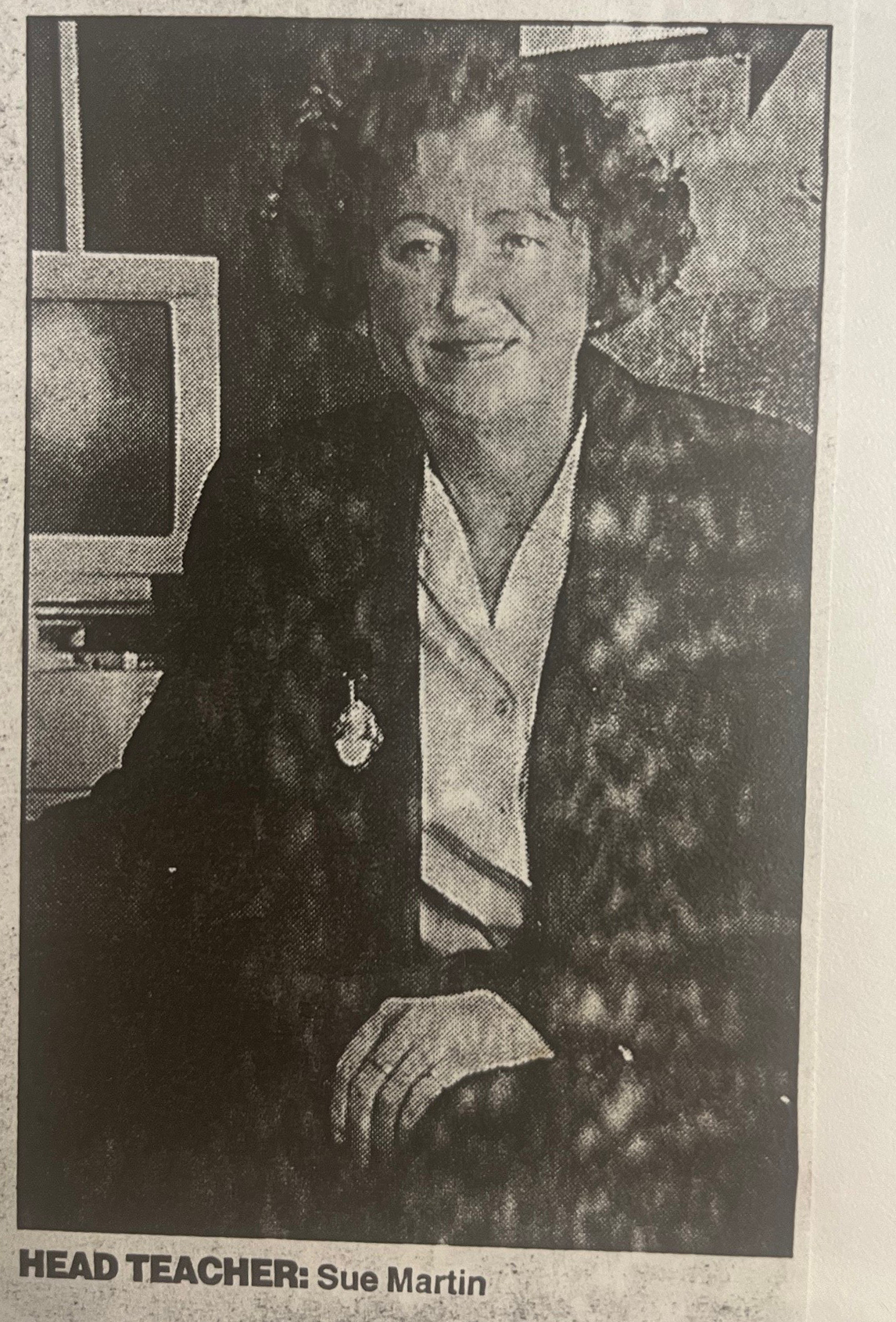
2000 - 2009
|
2001 |
A grant of £375,000 was secured and plans approved to build the School Gymnasium, office and teaching classroom. The Gymnasium officially opened in September 2002. |
|
2002 |
800 students on roll. |
|
2003 |
The Plymouth Ghana Link was formed in 2003. The partner school in Ghana was Ahantaman Senior Secondary School, located on the western city of Sekondi-Takoradi. Ghana, a former British colony, gained its independence in 1957. |
|
2006 |
Ghana students visited PHS. |
|
2007 |
PHSG secured it's re-designation as a Technology College and applied for a second specialism: Languages. The school's application was granted and PHSG also became a Languages college in April 2008. The school was then nominated to become an International Baccalaureate World School. |
|
2008 |
Miss Mary Utton became the Headmistress. Miss Utton, a History specialist, had been seconded to Humphry Davy School in Penzance as a temporary Head, from her Deputy Head role in Launceston, as part of the LA’s response to the school’s Ofsted report. Miss Utton stated that the opportunity confirmed her ambition of wanting her own Headship and to make a difference in the lives of young people. |
|
2008 |
New termly magazine was published: ‘TALK’. The magazine was contributed to by staff and students and was the celebratory publication on school events and achievements. |
|
April 2008 |
The National Union of Teachers' strike was a 24-hour strike by teachers on 24 April 2008, over the issue of pay. It was the largest strike in Britain for more than 20 years. It is believed that up to 8,000 schools were affected by this strike, and PHS was one of them. The school closed to all students apart from the students undertaking their Art GCSE and Language Orals. |
|
May 2008 |
On the 14th May, the Lord Mayor and Lady Mayoress visited the school, attended an assembly and presented the school with a cheque in support of the collaboration with Ghana on a renewable energy project. |
|
July 2008 |
The first school newsletter was sent to parents via email. |
|
2009 |
PHSG received ‘Satisfactory’ rating by Ofsted. |
|
2009 |
Lady Baroness Cox spoke with Sixth Form students about her work as the head of the Humanitarian Aid Relief Trust (HART). With her mother being an Old Girl of PHS, she spoke of her background, strong female role models and her time spent in the House of Lords and inspiring passion about her work with HART. |
|
2009 |
PHS and Ahantaman Secondary School in Ghana exchanged staff and students as part of the renewable energy project. Preliminary testing of wind turbines (which had been installed on the campus in Ghana), with testing of the power generated by a photovoltaic cell, using the equipment lent by PHSG. Comparing the data generated led to the conclusion that, although initially expensive, photovoltaic power is the most reliable energy source and wind power is less reliable but much cheaper to produce. The Ahantaman school planned to mount three more turbines to generate more data. |
|
2009 |
The International Baccalaurate Diploma Application was granted and Plymouth High became the only state school in Plymouth to offer the provision to Sixth Form students. The aim behind the IB programme was to develop internationally minded people who, recognising their common humanity and shared guardianship of the planet, help create a better and more peaceful world. |
|
May 2009 |
Following the first cohort to the IB programme, the Local Authority granted the school £1.3million into a building project to support the programme. A new classroom (Room 14) and ICT room (Room 18) were built on the opposite side of the corridor to the Languages rooms, and directly above, is an additional Science laboratory (room 8) and office space. The rooms and building works were completed in September 2009. Richard Clayton from Atkins Ltd. was the lead architect and the company assigned to deliver the project was Devon Contractors Ltd. |
|
December 2009 |
The Annexe Hall was converted into a Learning and Resource Centre to support independent learning and opened on the 15th December. The new centre was named in memory of Dr Elizabeth Glas, who passed two years earlier. She was a teacher of German at the school for 29 years (1947-1976) and left £100,000 to the school in her will, which was used to fund the conversion. |
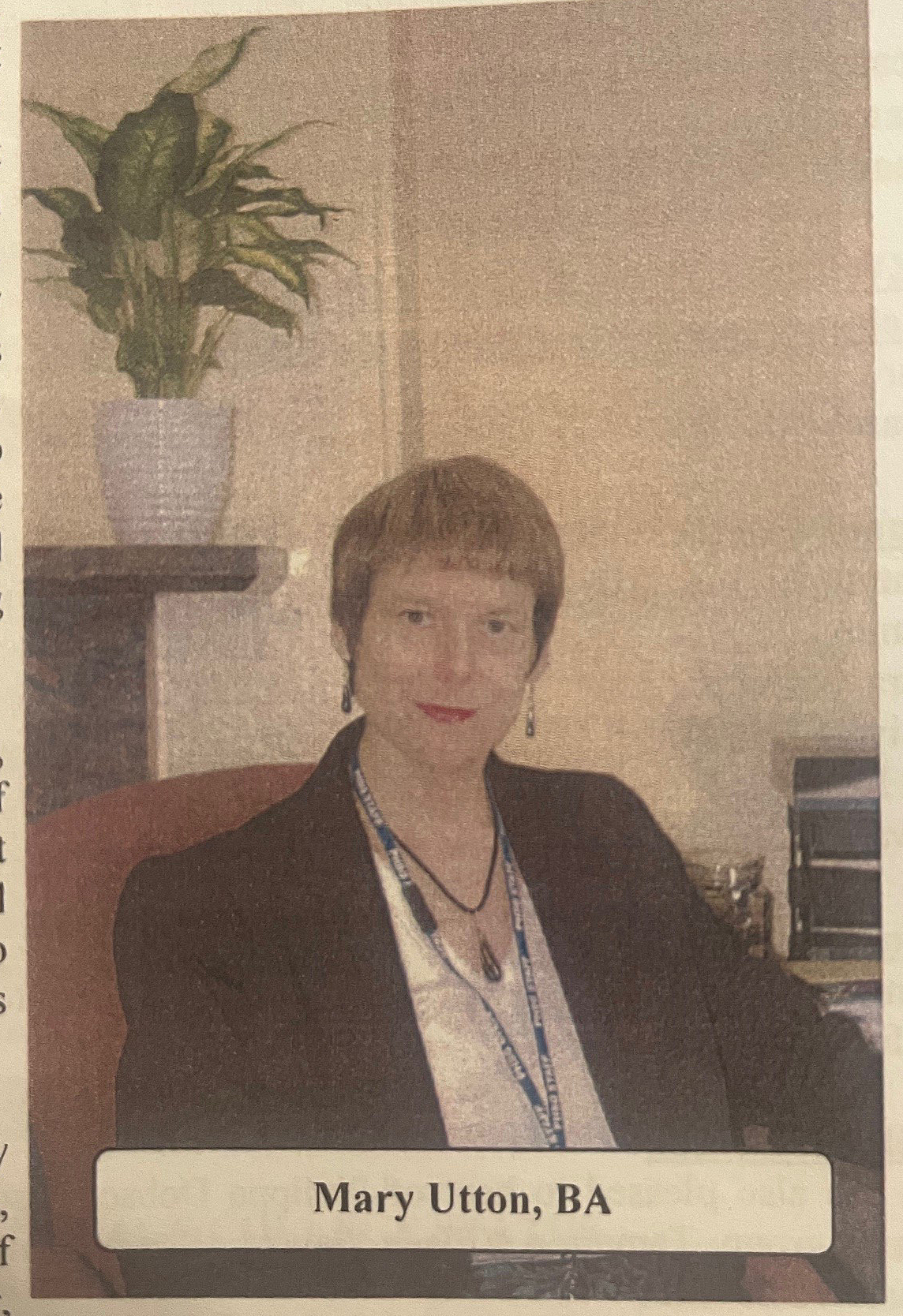
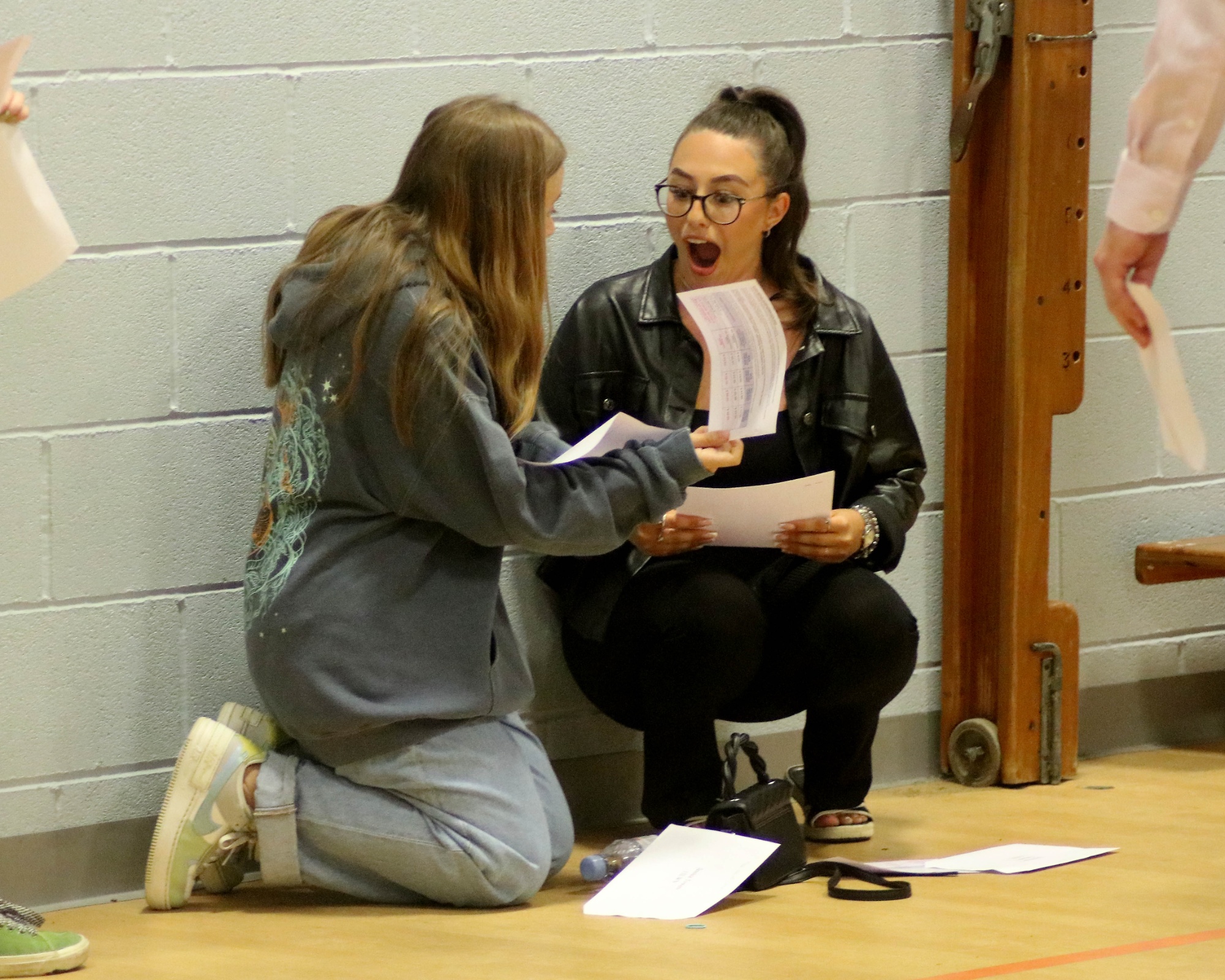
'hard work pays off'
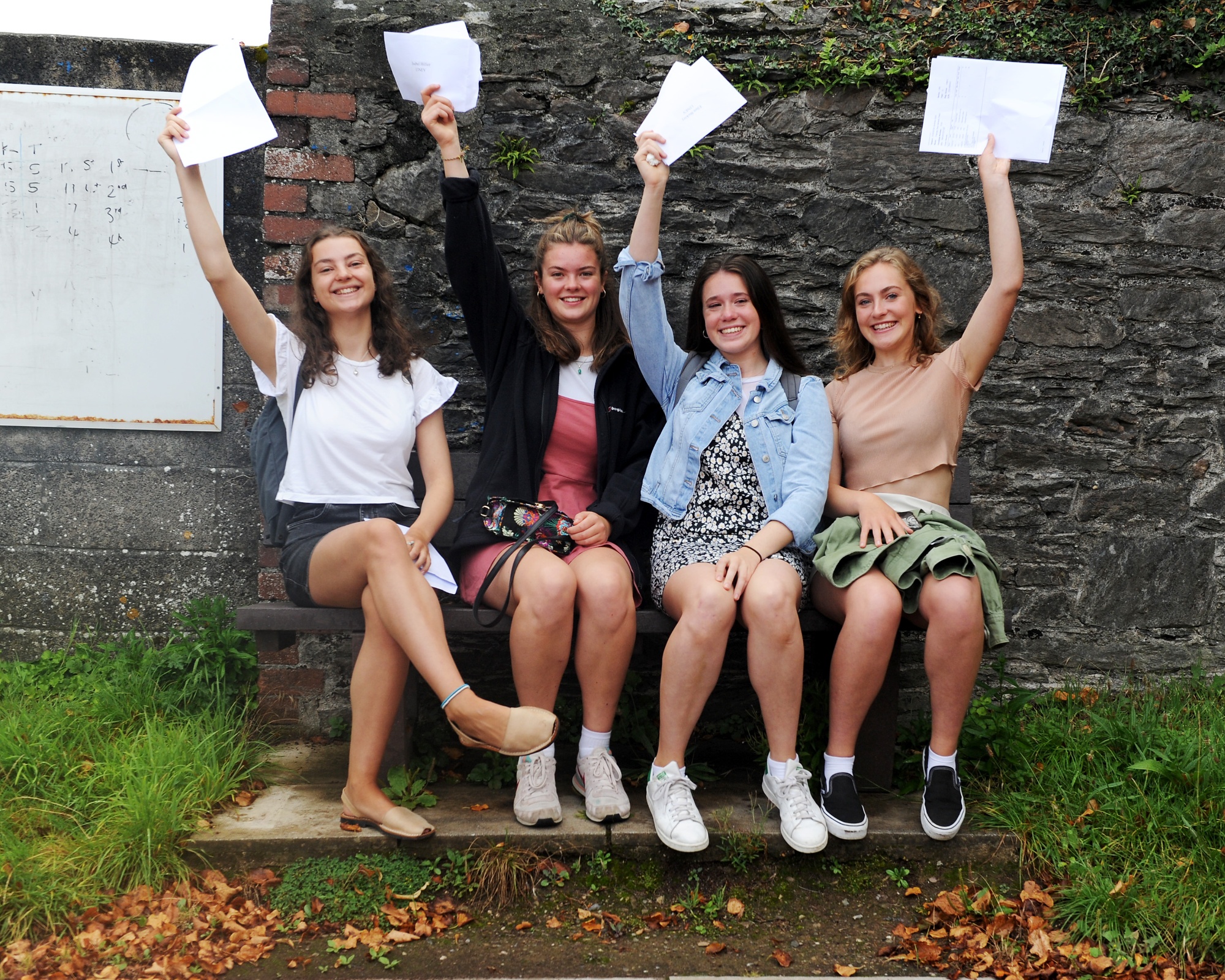
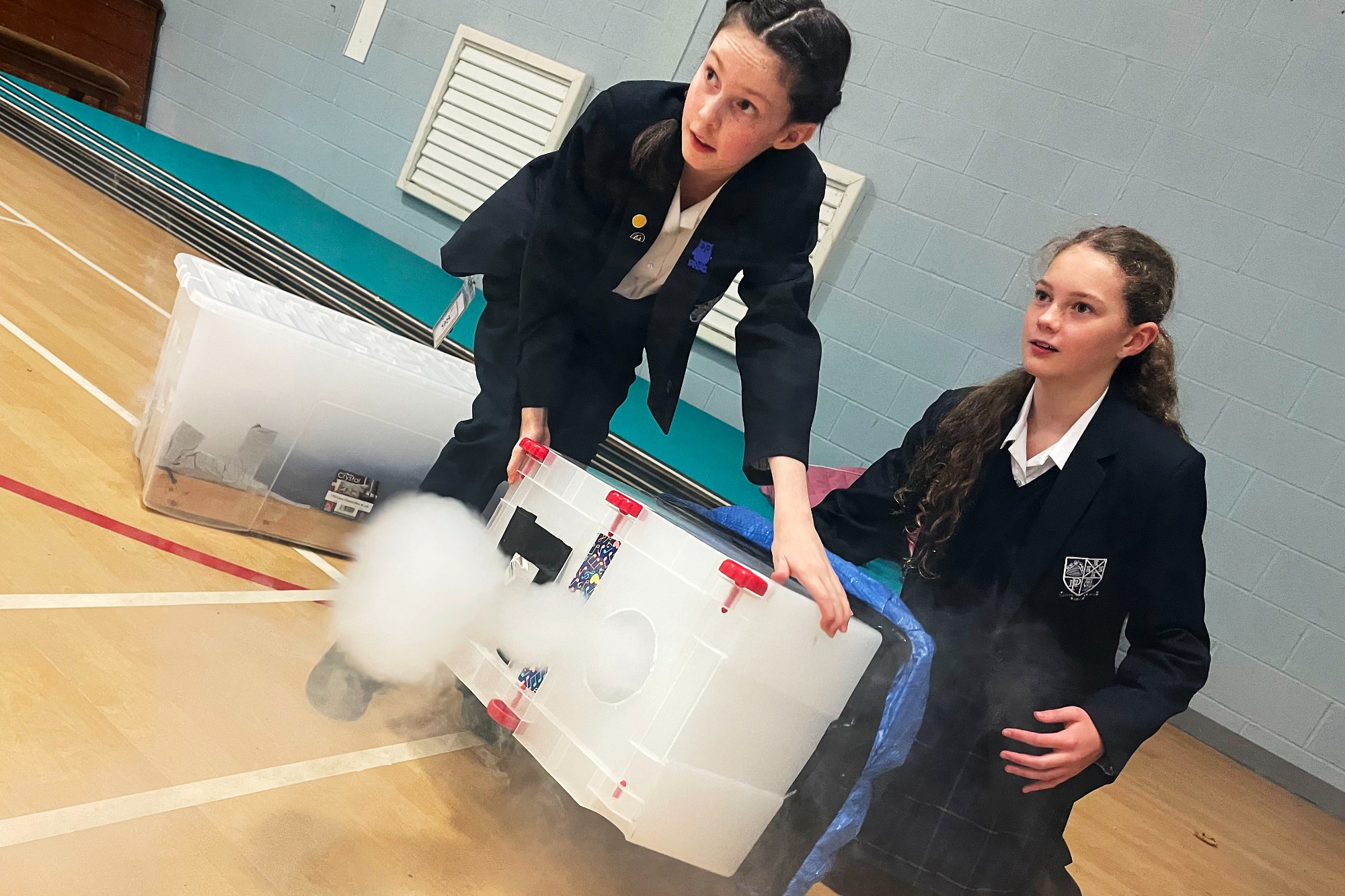
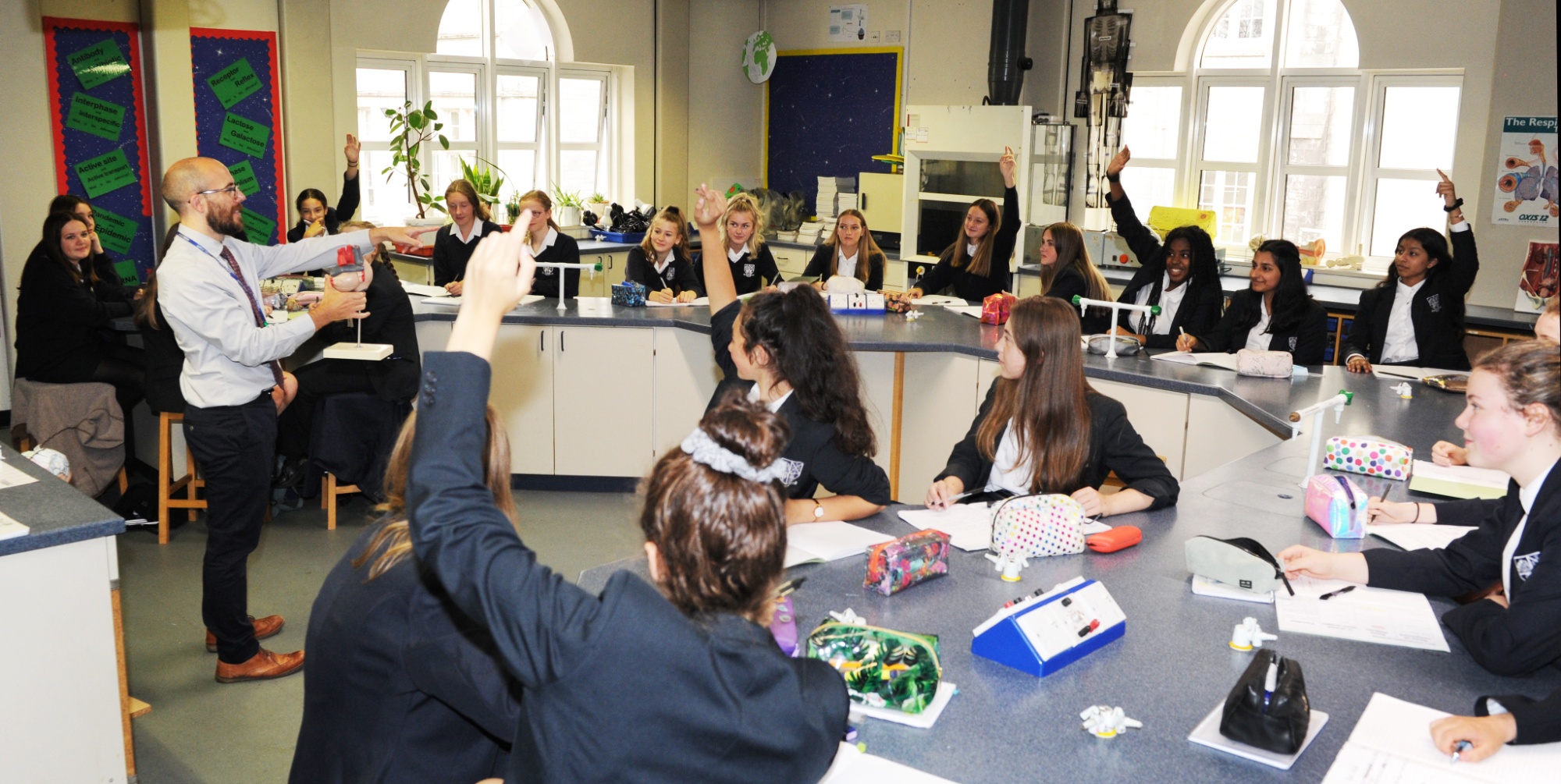
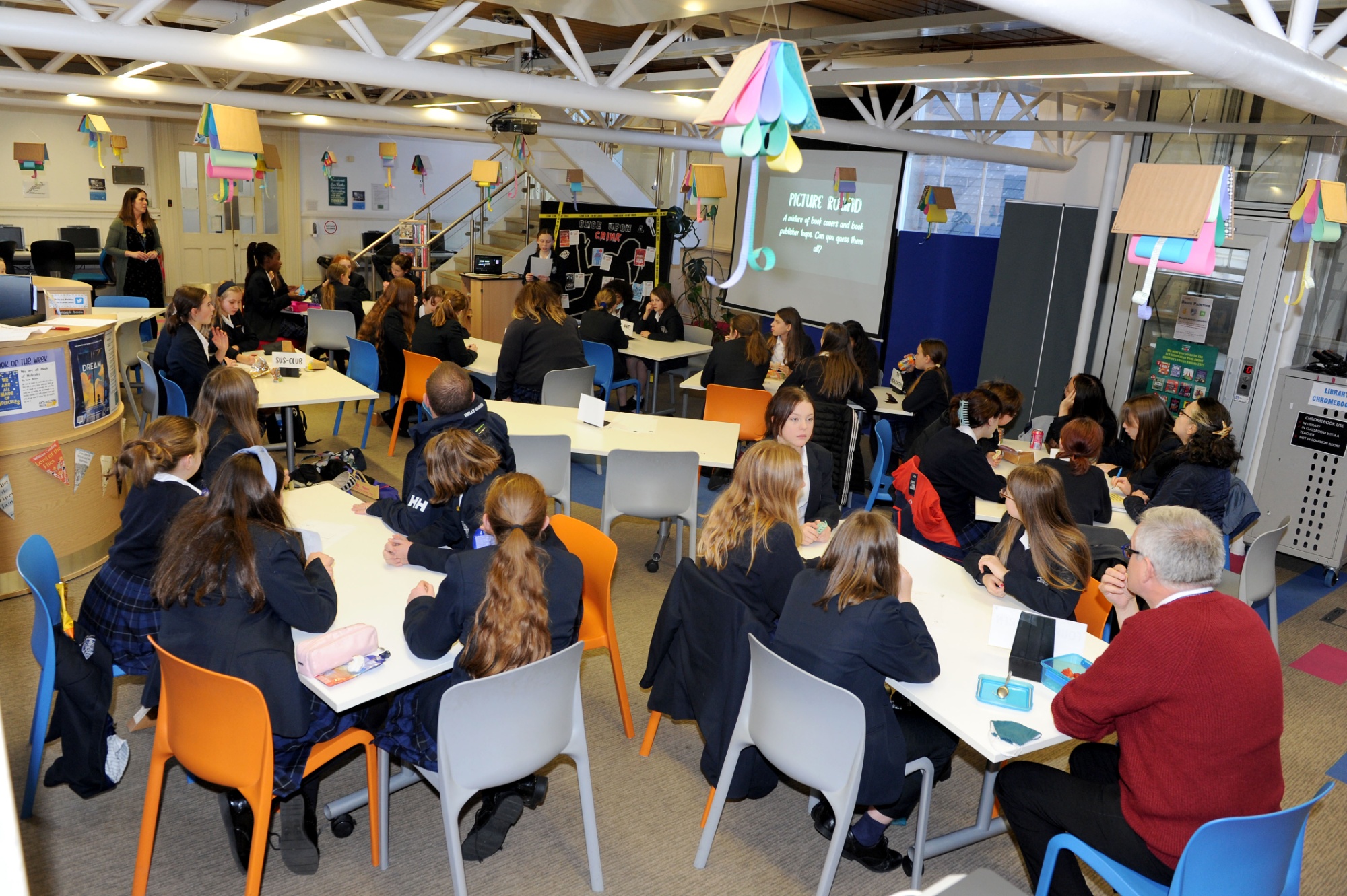
2010 -2019
|
2010 |
PHS students win the City College award for the Young Chefs of Plymouth for the second year running. The students were given two hours to prepare, cook and present a 3 course meal for two. The dishes were judged by the top professional chefs in the South West, including Chris Tanner from Tanners, Vito Dellanno from The Hayloft and John Hooker from Brown’s. |
|
2010 |
Curriculum Enrichment forms a large part of the school’s tradition and supports the school ethos and motto. The 2010s saw an increase in foreign trips included for students to experience. Some destinations included: Scilly Isles, Tuscany, Ethiopia, China, France, Germany and Ascension Island. |
|
June 2011 |
Plymouth High students built and entered ‘Hummingbird‘ into her first Greenpower F24 electric racing car competition. The South West heats took place at Cornwall College at Newquay Airport and the team came 4th against 14 other more experienced teams. Hummingbird has gone on to win a string of successes over the years, accumulating many awards over 50 races…and counting! This STEM development programme has seen hundreds of Plymouth High students experience and get ‘hands on’ with all the different engineering disciplines throughout the years. Whether it is working with hand tools to construct the car, or performing complex calculations to plan race-critical parameters, there is a place for all who wish to get involved. |
|
2011 |
PHSG received a ‘Good’ rating from Ofsted. |
|
2012 |
Corinna Lawrence, alumni of PHS, represented Great Britain in the London 2012 Olympics, competing as a fencer. She returned to the school to present the achievement awards and give the address. |
|
2012 |
PHSG hosted the National Carnegie Medal Awards Day. The award has been presented annually, since 1936, to the writer of outstanding books for children and young people and also outstanding illustrations. Schools across the country can be nominated to host the event and for their students to ‘shadow’ the judging process. This year, the award was presented to Patrick Ness for ‘A Monster Calls’ and Jim Kay was awarded with the illustrator award. |
|
2012 |
Nick Ponting, the land speed record holder for electric cars, visited Team Hummingbird. The visit came following the team’s award for the ‘Best Presented Team’ at the National Finals held at Goodwood Racing Track earlier in the year. The team quizzed Nick on his experience in racing electric cars with advice given to the team in aerodynamics, acceleration and the industry as a career. ‘I believe that, in 40/50 years’ time, about 80% of the cars on the road will be electric’. |
|
2013 |
The Head Student Team hosted a school charity auction for the student chosen charity, Cancer Research UK. Services volunteered by students and staff to bid on included: teachers being a butler over lunchtime (to include a suit and bow tie!); a personal portrait session from Mr Varrall; a personal storytelling session with Mr Rutherford and a ‘personal juke box; where Mr Osborne would follow the student around for a single lunchtime, playing songs of their choice on his guitar! Over £100 was raised for the charity. |
|
2013 |
The Acabella and Bellaplate choir performed in the Saltash Music Festival, under the direction of Mrs Walsh, and both won in their respective classes. Performances included ‘Lean on me’ and ‘The Lion Sleeps Tonight’, being the only group to be singing in 4-part harmony. |
|
2013 |
Sixth Form students took part in the Hybrid Self Defence Programme, run by Hybrid MMA and Fitness Centre. The students were taught a variety of self-defence techniques, from slapping pads and running effectively, alongside the body language and psychological thinking of the attacker. |
|
2013 |
PHS students visited Ahantanman Senior High School as part of the 10th Anniversary link with our Ghanaian school. They experienced days in the life of Ghanian students and excursions which included Green Turtle Bay, Kakum National Park and Elmina Village. |
|
2013 |
PHS became the champions of the National Bar Mock Trial competition. Following many rounds against the top 16 school teams in the country, the final took place in the Supreme Court of the Lord High Chief Justice! |
|
2014 |
PHS students raised over £5,000 for their chosen charity, St Luke's Hospice, smashing their initial target of £3,000! The Headteacher stated: ‘The enthusiasm and energy generated by the girls' imaginative fund raising activities reflects Plymouth High School’s ethos, which is built on strong relationships and community’. |
|
2014 |
PHS Physics trip to Cern, Switzerland. Excursions to the Particle Exhibition, a presentation from an engineer working on the ATLAS section of the Large Hadron Collider and then a tour of the interior and exterior detectors, the NASA link, and a further tour of the Compact Muon Solienoid (where particles collide). |
|
2015 |
PHS students were selected to take part in the television broadcast of Children in Need. Forty eight students were selected to perform the song ‘I’ll Stand by You; which was recorded by the BBC and shown across the UK as part of the national Children in Need show. Three of the singers were interviewed ‘live’ on the Spotlight programme. |
|
2015 |
In the run up to the 2015 national Parliament elections, PHS students held their own ‘Mock Elections’ to represent the event and discuss in detail some of the party policies and campaigns. Six sixth form students represented the different political parties. Armed with their manifestoes and party-pleasing lines, they ran a debate in a similar format to ‘Question Time’, with questions being put forward to the audience. The winner was determined using the same format currently used in the UK. The results came in as follows: Communist Party of Britain, 15 votes (2.1%); Liberal Democrats, 61 votes (8.6%); UKIP, 62 votes (8.7%); Conservatives, 186 votes (26.2%); Labour, 190 votes (26.8%) and the winning party with 196 votes (27.6%) was the Green Party! |
|
2015 |
The school’s annual Harry Potter Quiz was launched. |
|
2017 |
Unfortunately the school could not continue funding the additional staff that had been recruited since enlisting into the IB programme. Funding ceased and the school sadly had to undertake a series of redundancies. |
|
2019 |
Mr Underdown became the Headteacher, the first male to become in charge of the school. Joined PHS from Churston Ferrers Grammar School. A senior leader since 2008 and a teacher of Maths for over 25 years having served in six different schools. Mr Underdown is determined to ensure that our students have an enjoyable and fulfilling experience at school. |
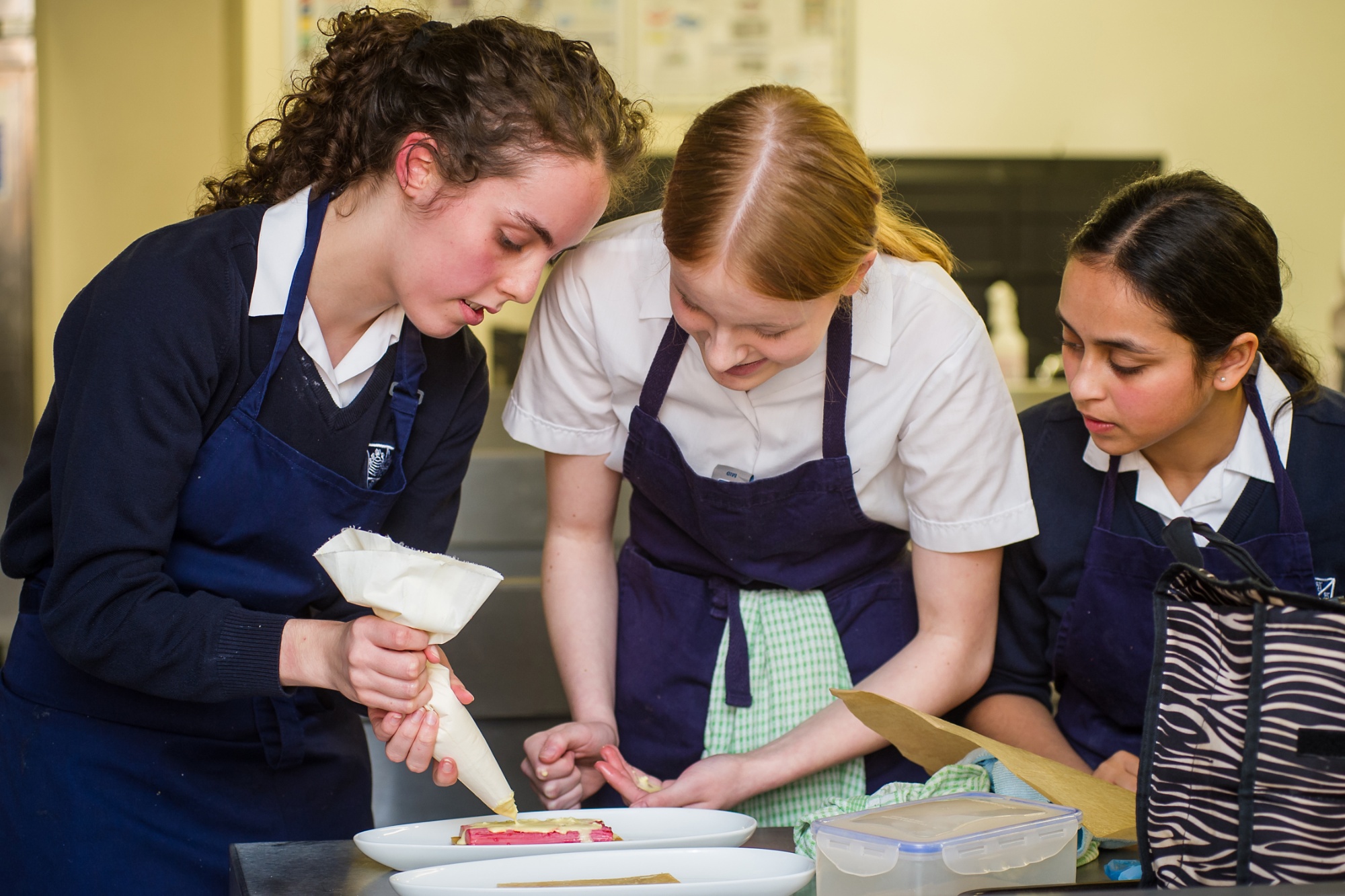
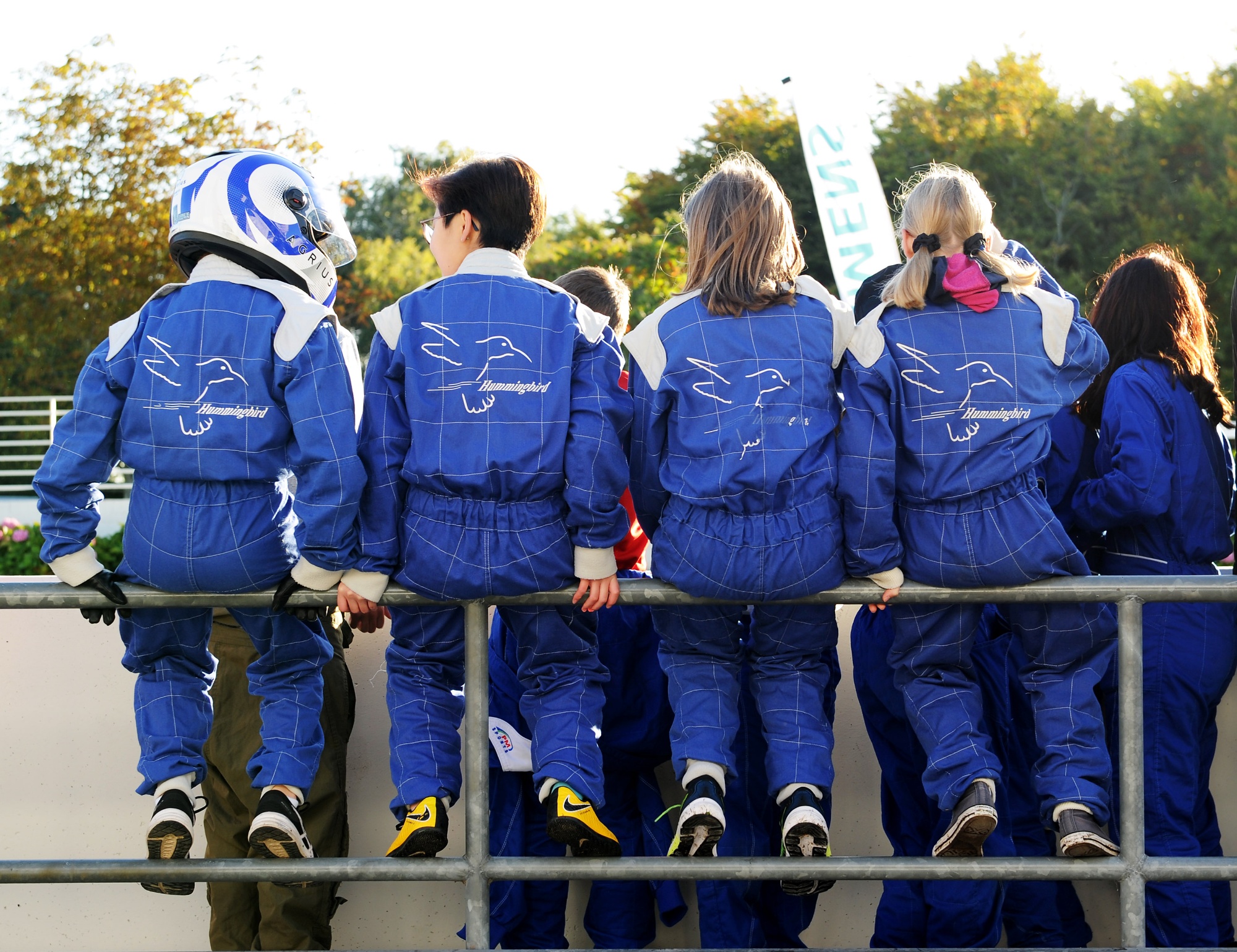

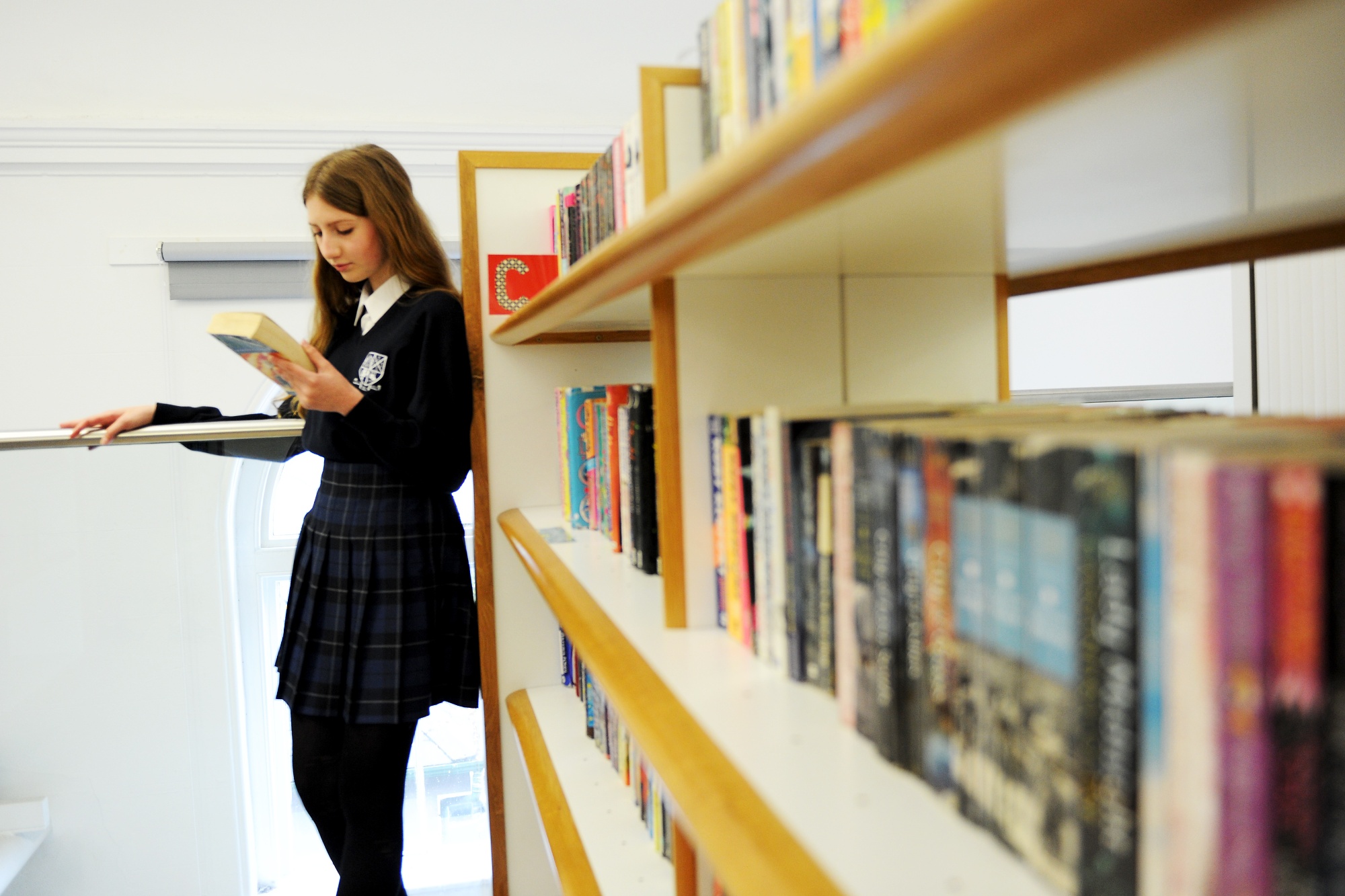
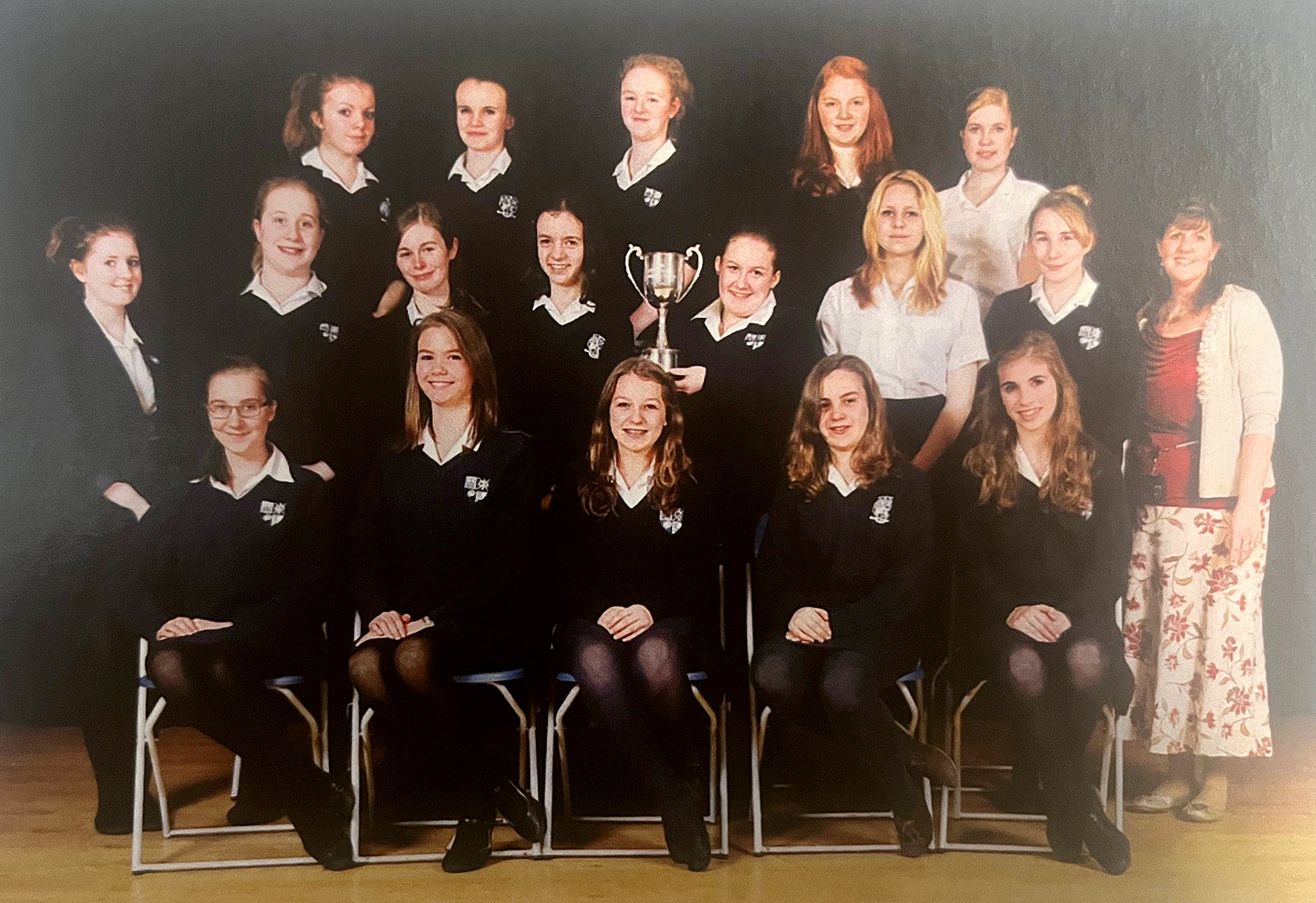
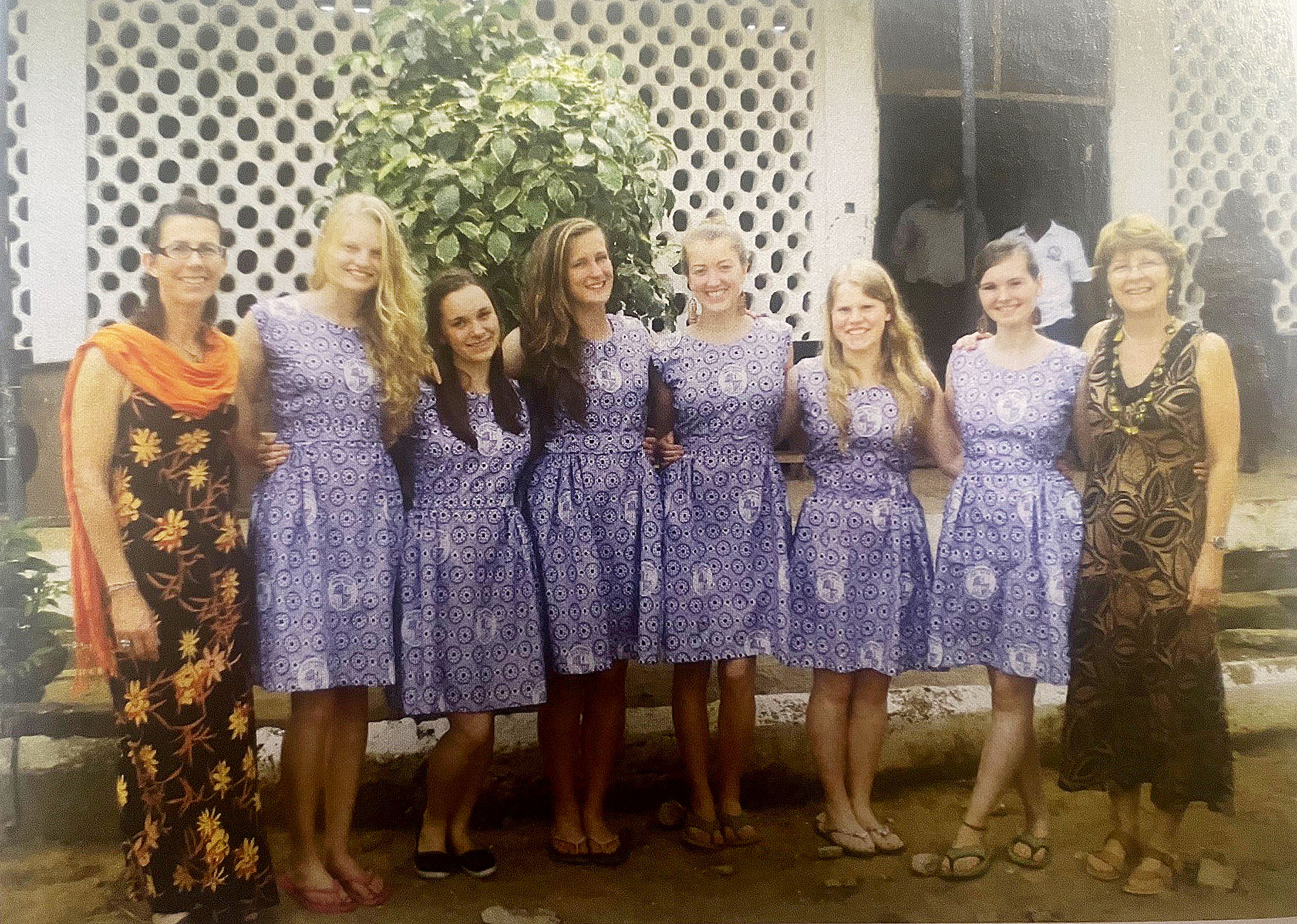
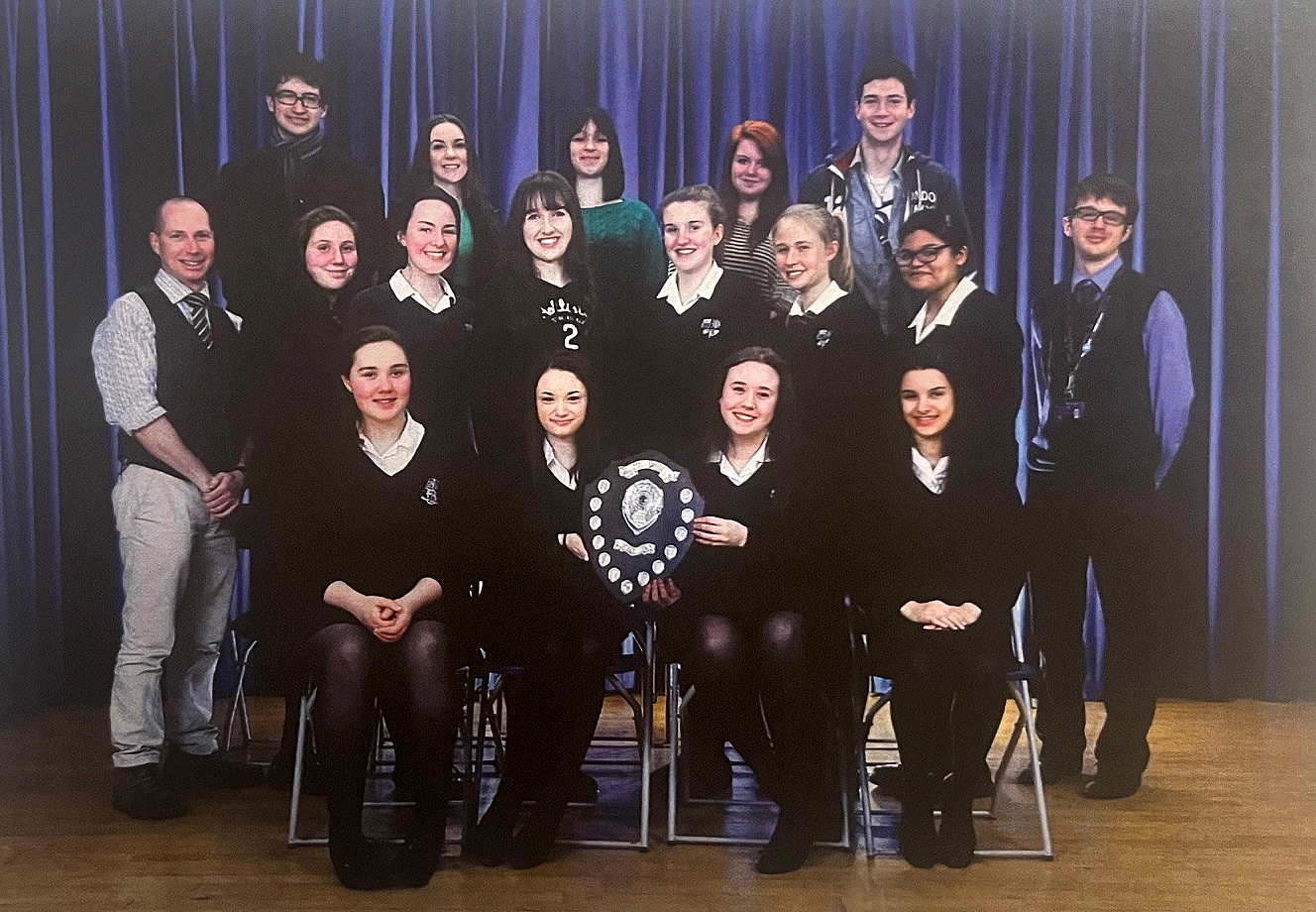
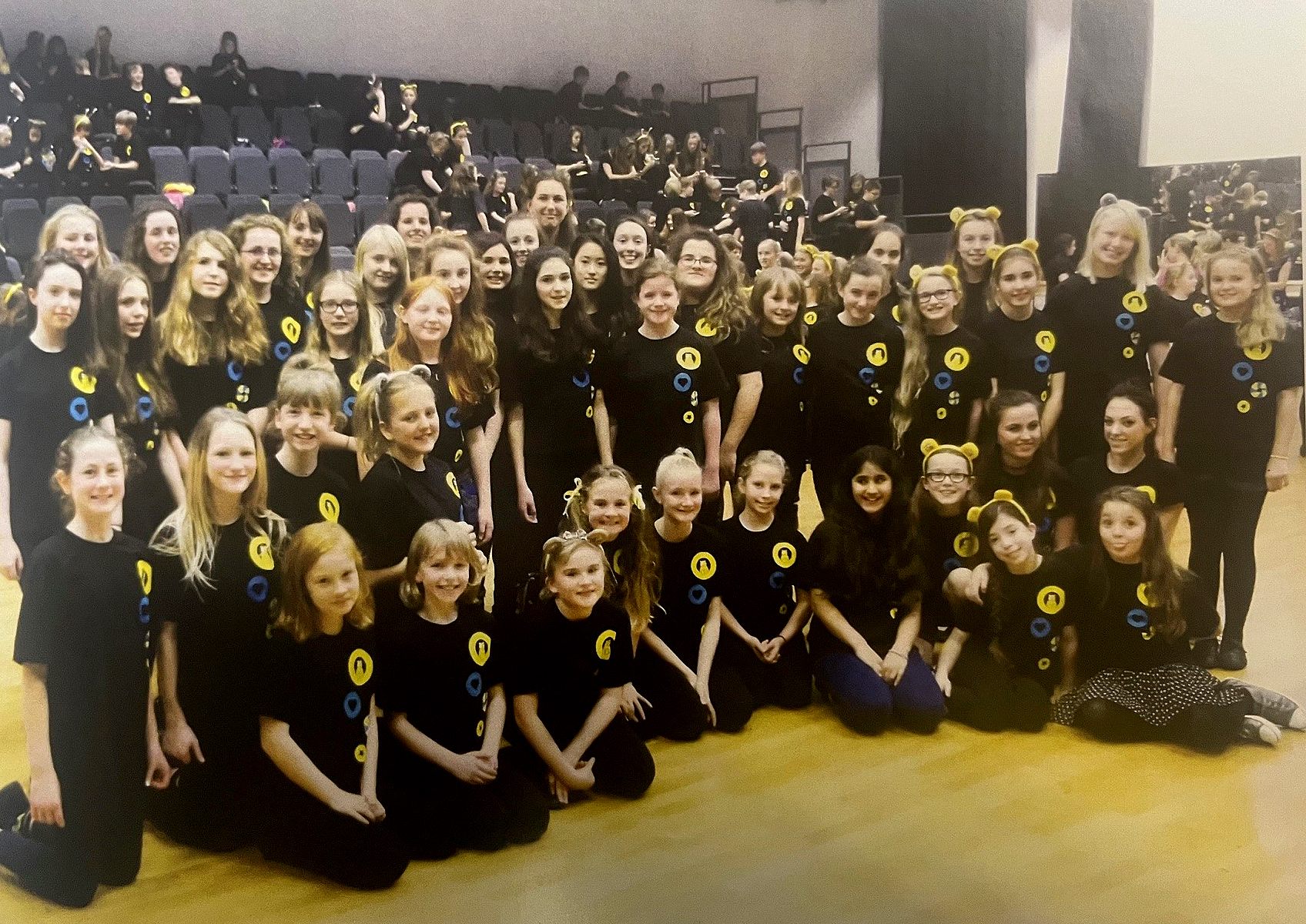
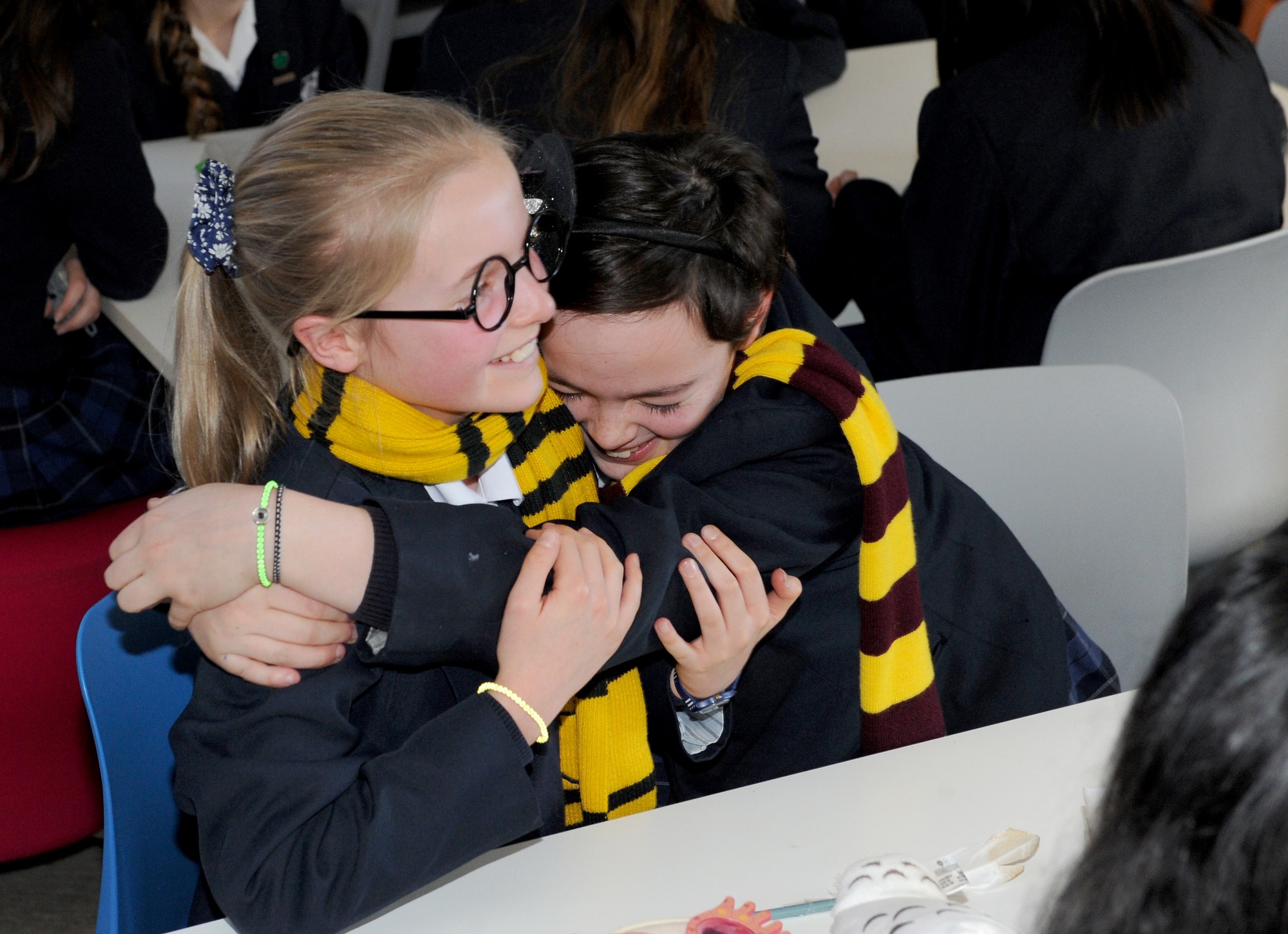
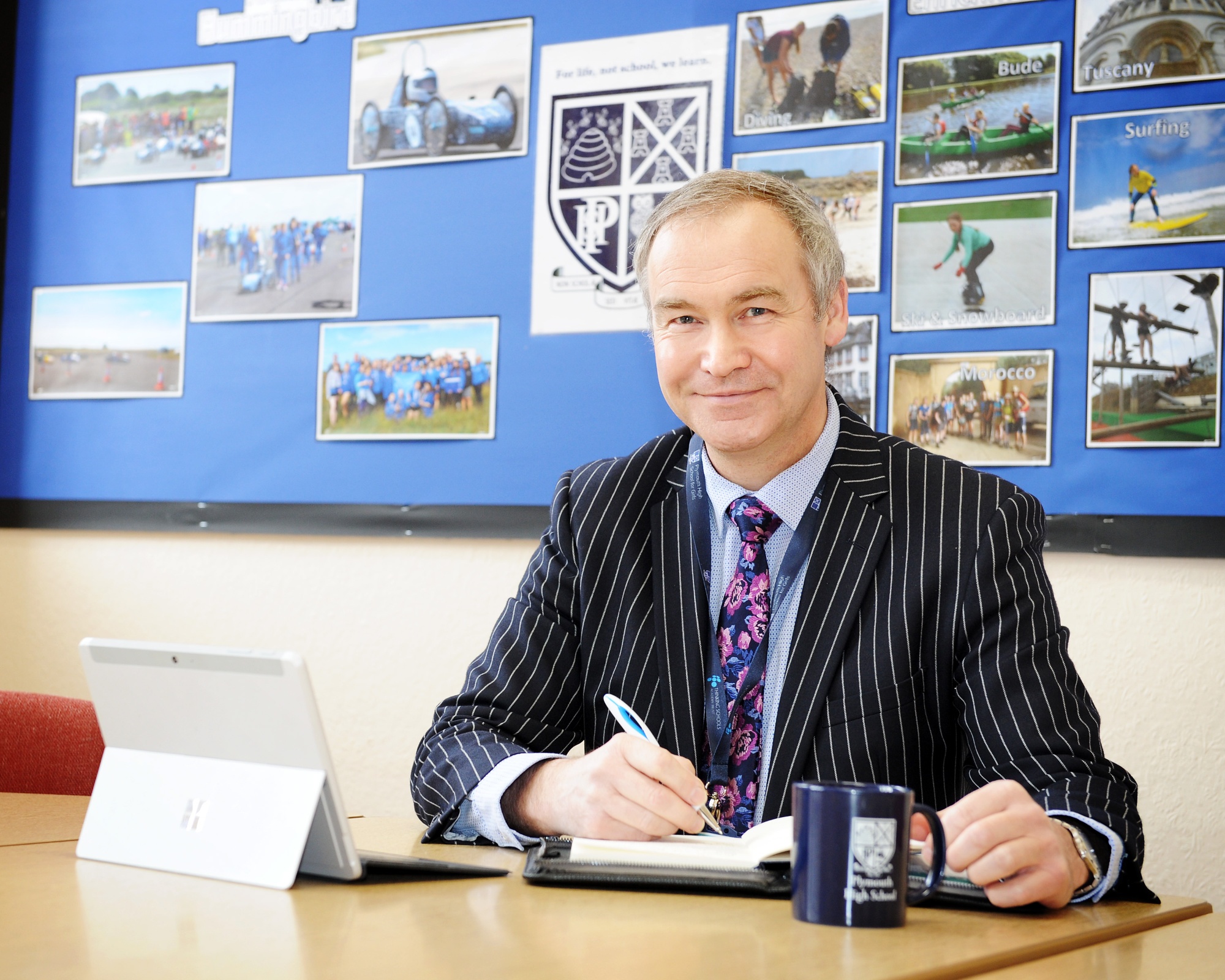
2020 - present
|
March 2020 |
Covid 19 arrived in the United Kingdom forcing the Government to shut all schools on the 23rd March with students and staff transitioning into ‘learning online’. The school site was only open to the students of 'key worker's'. A skeleton staff remained on the school site with the remainder of staff teaching and working from home. The whole country went into lockdown and everyone was advised to 'stay a home' only allowing people to leave their homes for one hour of exercise per day. Social distancing was enforced and the country faced widespread supply shortages including food shortages, which were caused by supply chain disruptions and panic buying. GCSEs and A-Level examinations were cancelled for two years, meaning students grades were Centre Assessment Grades (CAGs), which were provided by teachers. PHSG students conducted online assessments to assess progress and identify any gaps in learning. |
|
June 2020 |
Students in year 10 and year 12 were integrated back into the school on the 29th June under Government guidance. Social distancing requirements meant that students sat 2m away from each other and were kept in small strict social bubbles. This meant students in each class had to be spread out over multiple classrooms. They could not move around the school and were allocated assigned seats but could get the 1:1 support they needed from their teachers. |
|
Sept 2020 |
All students returned to face to face school learning. There were still strict guidelines on social distancing and social bubbles. Students had to enter and exit the school site using a dedicated entrance / exit system and had staggered start and finish times. The Government made face coverings mandatory for students over 12 years olds in schools and busy areas. |
|
Sept 2020 |
If staff or students showed signs of Covid 19 symptoms at this time, they were sent home immediately and had to book a test with the NHS (local testing sites were put up within the city). If the test was positive, they were required to stay at home in quarantine for 14 days and all those that they had been in contact with also had to go home and quarantine. This caused huge disruption to education and ensuring a safe ratio of staff and students within schools. Sometimes whole year groups needed to be sent home and the logistics between teaching some students in school and some students at home became very challenging for schools at this time. |
|
January 2021 |
Following a sharp rise in the mortality rate, the Government announced a second National Lockdown on the 5th January 2021. The school continued to provide a space for students of key workers on the school site as per the previous lockdown. All students returned to online learning. |
|
February 2021 |
Plymouth High School for Girls became part of the Thinking Schools Academy Trust. The school became the first school in the newly formed Thinking School Academy Trust South West Hub. |
|
March 2021 |
The school re-opened to students on the 8th March 2021. As part of the measures to help schools open safely, Government guidance required schools to offer Lateral Flow Tests for Covid to students before they returned to the classroom. The school set up its own testing centre known as the Lateral Flow Test (LFT), and all students were invited back into school on a rota to undertake the test before returning to face to face education. Staff and students were required to carry out self-testing twice a week to identify if they had the COVID-19 virus. This is because it had been found that, although some experienced symptoms of the virus, others did not have any symptoms and were spreading the virus unknowingly. |
|
May 2021 |
In the Summer term, the school worked closely with the Government-led ‘Track and Trace’ process, which meant daily reports to the Local Authority on confirmed COVID cases and identifying patterns. |
|
2021 |
The COVID Vaccination process was underway across the country and many teachers at PHS volunteered their time in the evenings and weekends to help staff the vaccination centres across the city. |
|
2021 |
The school underwent a large refurbishment. All communal areas in the Annexe building were repainted (walls, ceilings, doors and all woodwork), new energy efficient LED lights were installed and new flooring had been fitted throughout. The foyer area was also repainted, as was the hallway in the main building along with the staircase up to the Main Hall. In these sections, LED lighting was also installed and new floor coverings fitted. The decoration scheme became 'Plymouth High blue and white' and will be used across the school as we start to upgrade the entire site. A brand-new £70K boiler was installed to heat the Newman Hall and all Science and Languages classrooms along with associated hallway spaces. The fire detection system was completely replaced by the very latest technology and the upgrades to computer and electrical wiring has been extensive. There are now pedestrian safety markings on the front car park and both entrances have electric vehicle gates. The dining facilities in Newman Hall have been refreshed and we have installed a brand-new outside catering hut, named Bertha’s (the first student to enrol to the school). |
|
Sept 2021 |
The easing of COVID-19 restrictions saw the reopening of clubs, assemblies, events and usual lunchtimes. Face coverings were no longer mandatory and there were no more social bubbles or staggered entry and exit timings. |
|
Oct 2021 |
The Government-led vaccination programme was opened out to students over the age of 12 and special healthcare teams came into the school to undertake the mass vaccination programme. |
|
Nov 2021 |
Hundreds of students spoke with their feet and joined the Earth Alliance Team on the courts for a 15 minute silent protest during their period 5 lesson on Friday 5th November (COP26 Youth Day). Their chalk message 'No more Talking, Time for Climate Action' was prominently displayed in front of them as the students sat in silence for the duration. |
|
Nov 2021 |
The Government announced new measures following a new variant of COVID-19 across the UK. This meant the school was back to a reduction in assemblies, clubs and events as well as the re-introduction of face coverings for all staff, students and visitors. |
|
Feb 2022 |
Storm Eunice swept across the South West with the Met Office issuing red weather warnings for all. To ensure the safety of students and staff travelling to and from school, the school site closed for the day. Staff and students switched to online learning, to which they had grown accustomed. |
|
Feb 2022 |
New external lockers were installed and provided to the lower years. |
|
Feb 2022 |
Thinking Tool strategies were introduced to the classrooms, as part of the process in gaining accreditation to be become a ‘Thinking school’. |
|
April 2022 |
The Government moved into the next phase of dealing with the pandemic and changes are made to testing and isolation periods. Face coverings were relaxed from being a mandatory requirement at school and clubs and events were restarted. |
|
June 2022 |
An additional bank holiday was announced by the Government for the Queen’s Platinum Jubilee on the 3rd June. |
|
August 2022 |
With the closing of other sixth forms within the city, and additional subject choices, the school saw a significant increase of students into the sixth form cohort. The sixth form common room closed and became the school library. The Dr Glas Resource Centre was refurbished into the new Sixth Form Study Centre, modelled on university libraries with spaces for students to study and focus on work during their free periods. In addition, the (condemned) History suite was upgraded and student toilets were upgraded to include sinks at the back of the cistern as well as improvements to the main drains. The Main Hall was completely redecorated, and upgrades to the connectivity network completed. |
|
September 2022 |
The death of Queen Elizabeth II saw the school observe the national holiday held on the 19th September 2022. |
|
October 2022 |
The energy crisis sweeping the country also puts a financial strain on the school's finances and the school was forced to look to make substantial efficiency savings to meet the rising costs of energy. Energy consumption was reduced by running the heating at a lower background level across the school. Students were encouraged to increase their clothing layers approaching the Winter months by putting on t-shirts beneath their school shirt and / or adding the school jumper. |
|
Feb 2023 |
A large number of regional and national strike days took place in 2023 as UK teaching unions fought for better pay for their members. |
|
March 2023 |
PHSG students performed the ‘Six-teen Edition’ with a cast of over 50. PHSG was the first school in the country to be granted the licence to perform this ground-breaking production, bringing together the six wives of Henry VIII in a fictional competition. |
|
May 2023 |
An additional bank holiday was granted to celebrate the King’s Coronation day on 8th May. |
|
2023 |
The school suffered subsidence on the main courts and investigations were undertaken of the cause, along with details of repair works. The majority of PE activities were moved offsite. It is learnt that the air raid shelters still in existence below the courts are the reason for the subsidence. |
|
2024 |
Plymouth High School for Girls are on track to receive its Thinking Accreditation status |
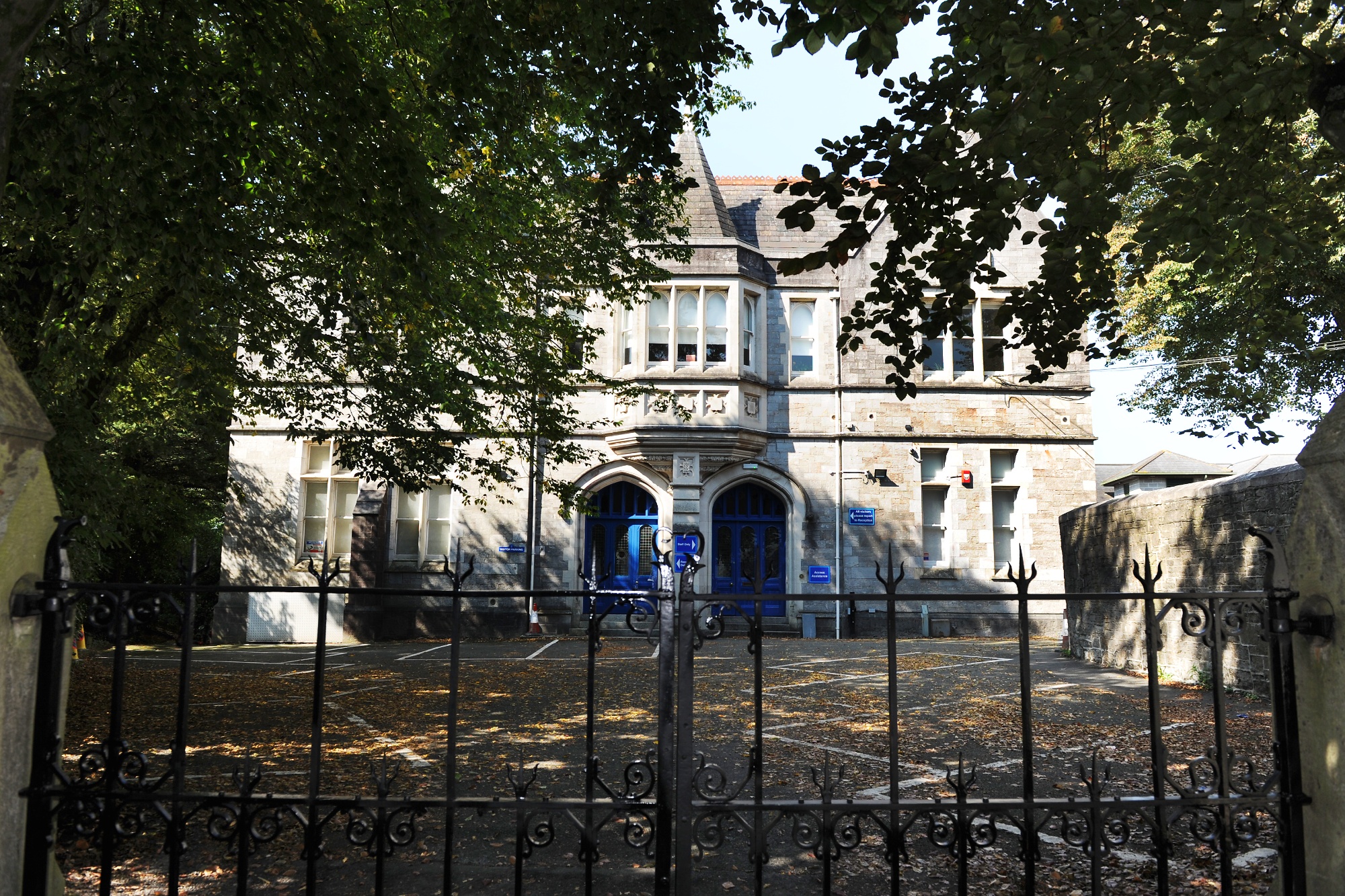
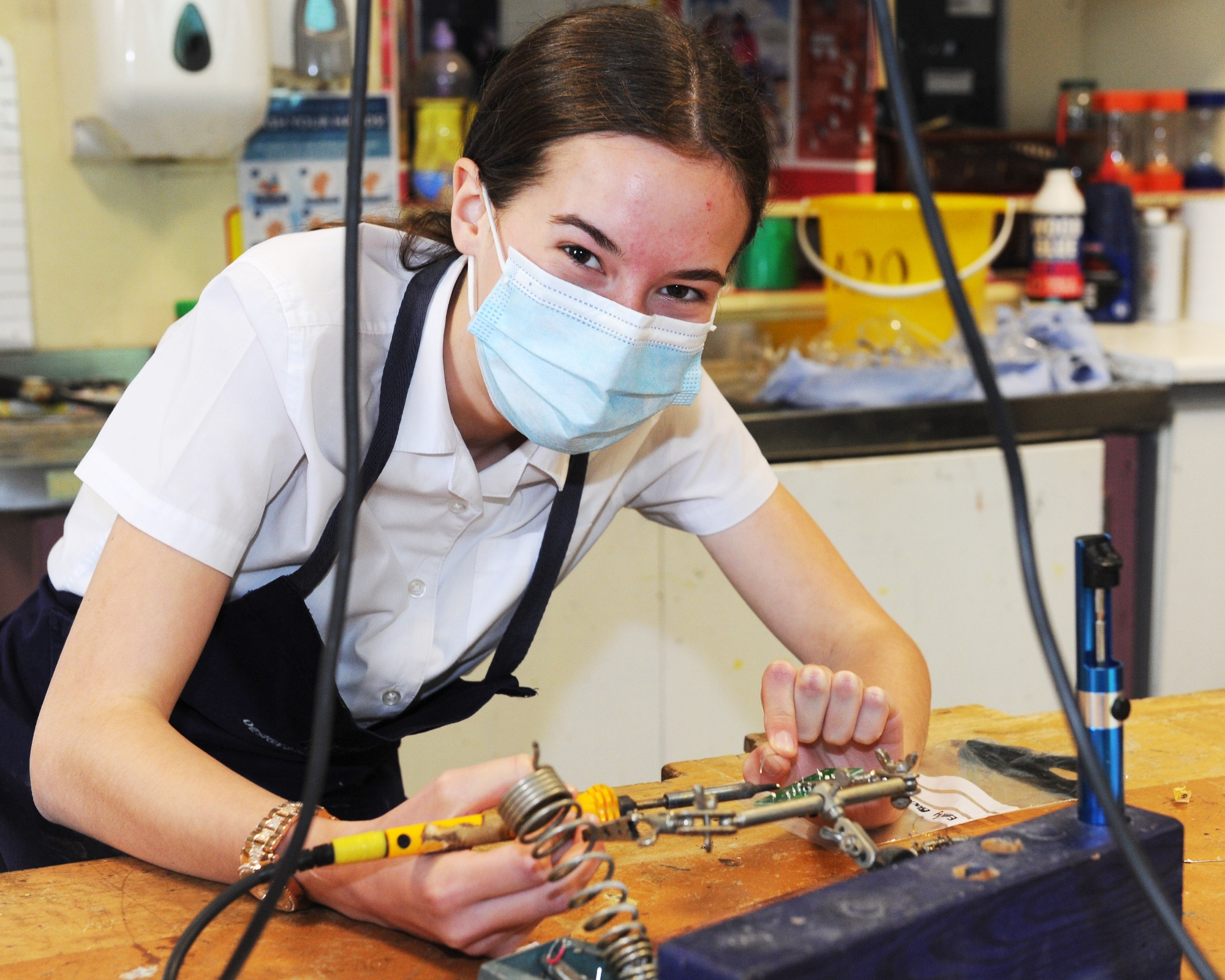
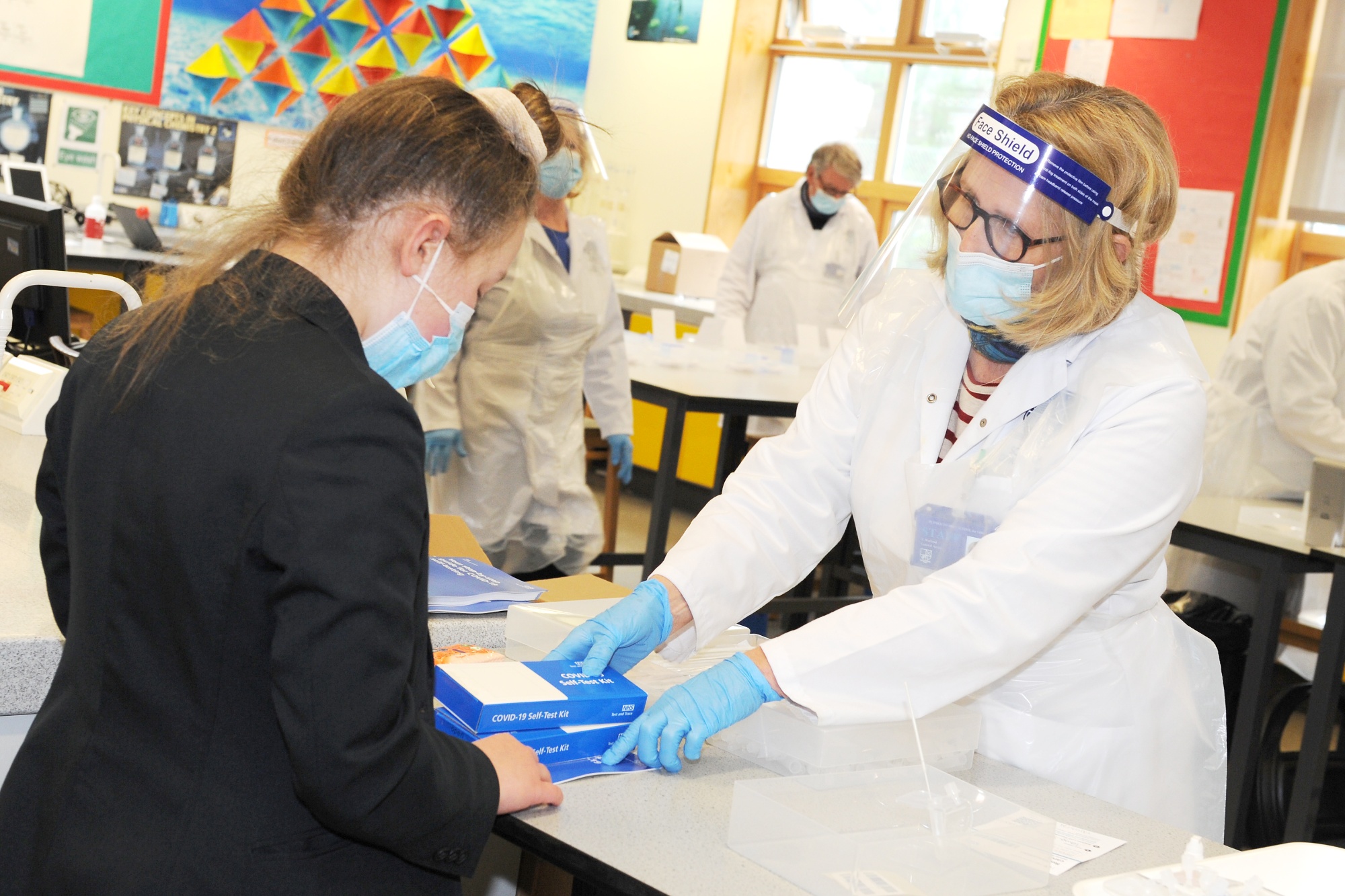
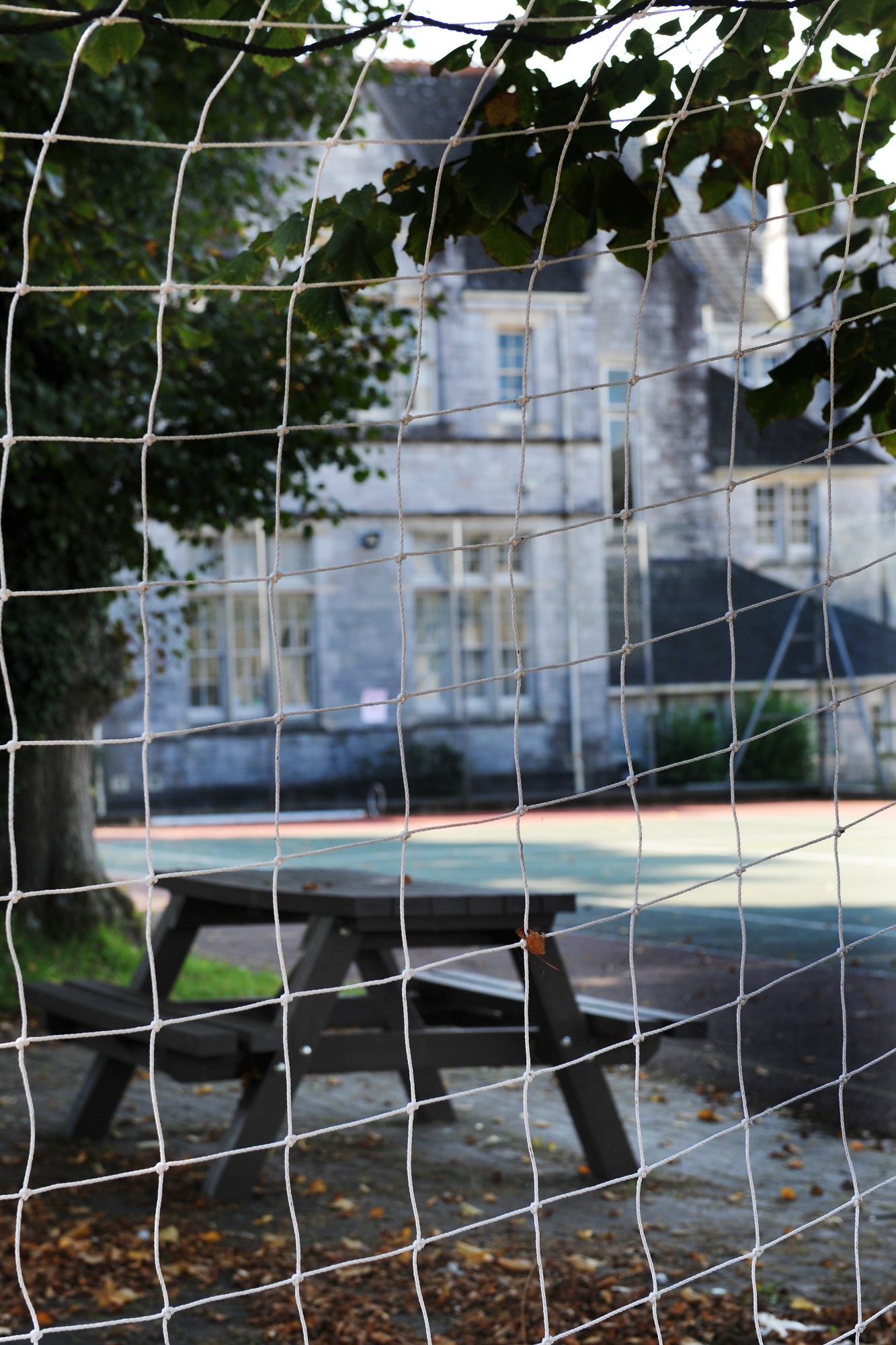
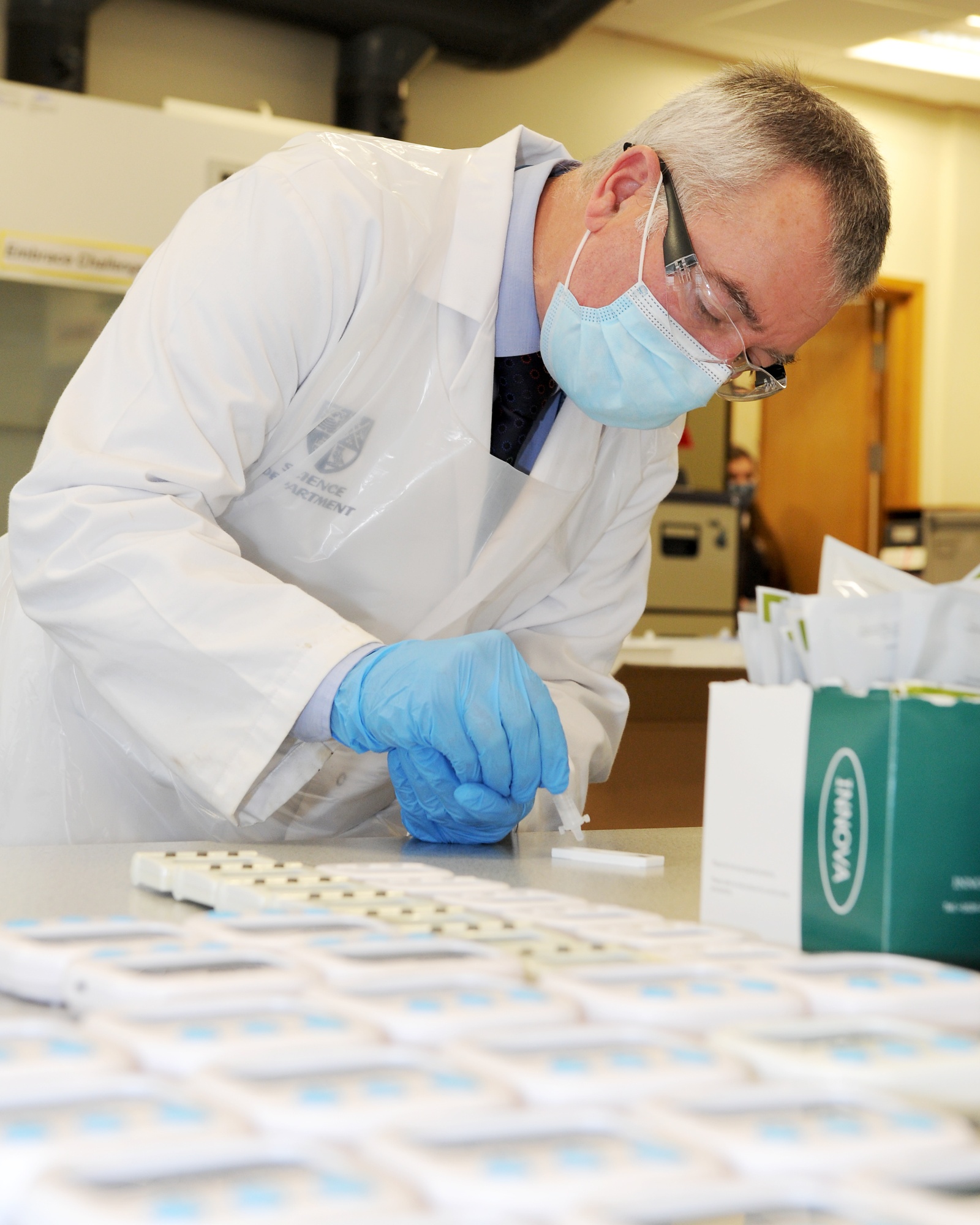
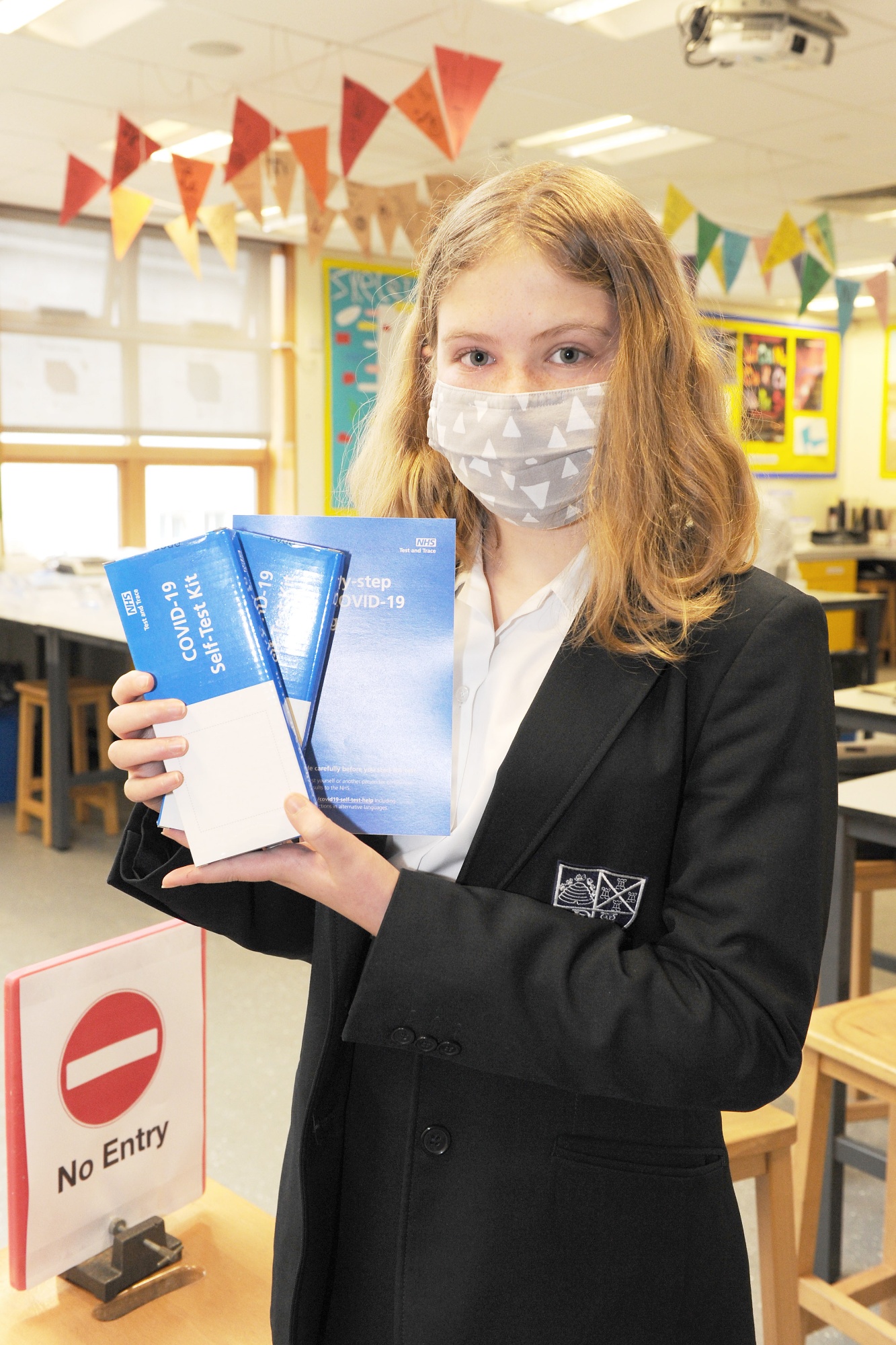
.
